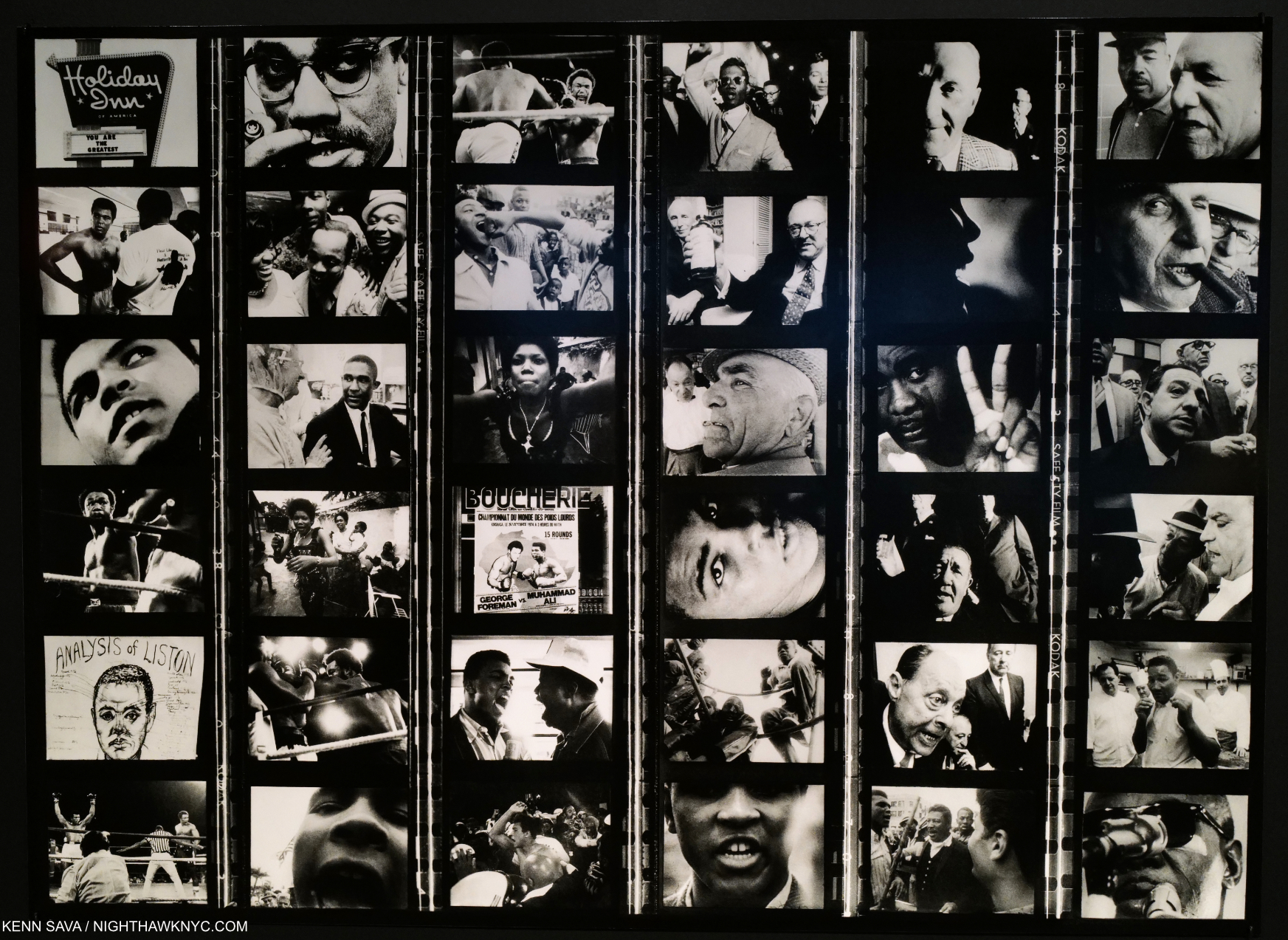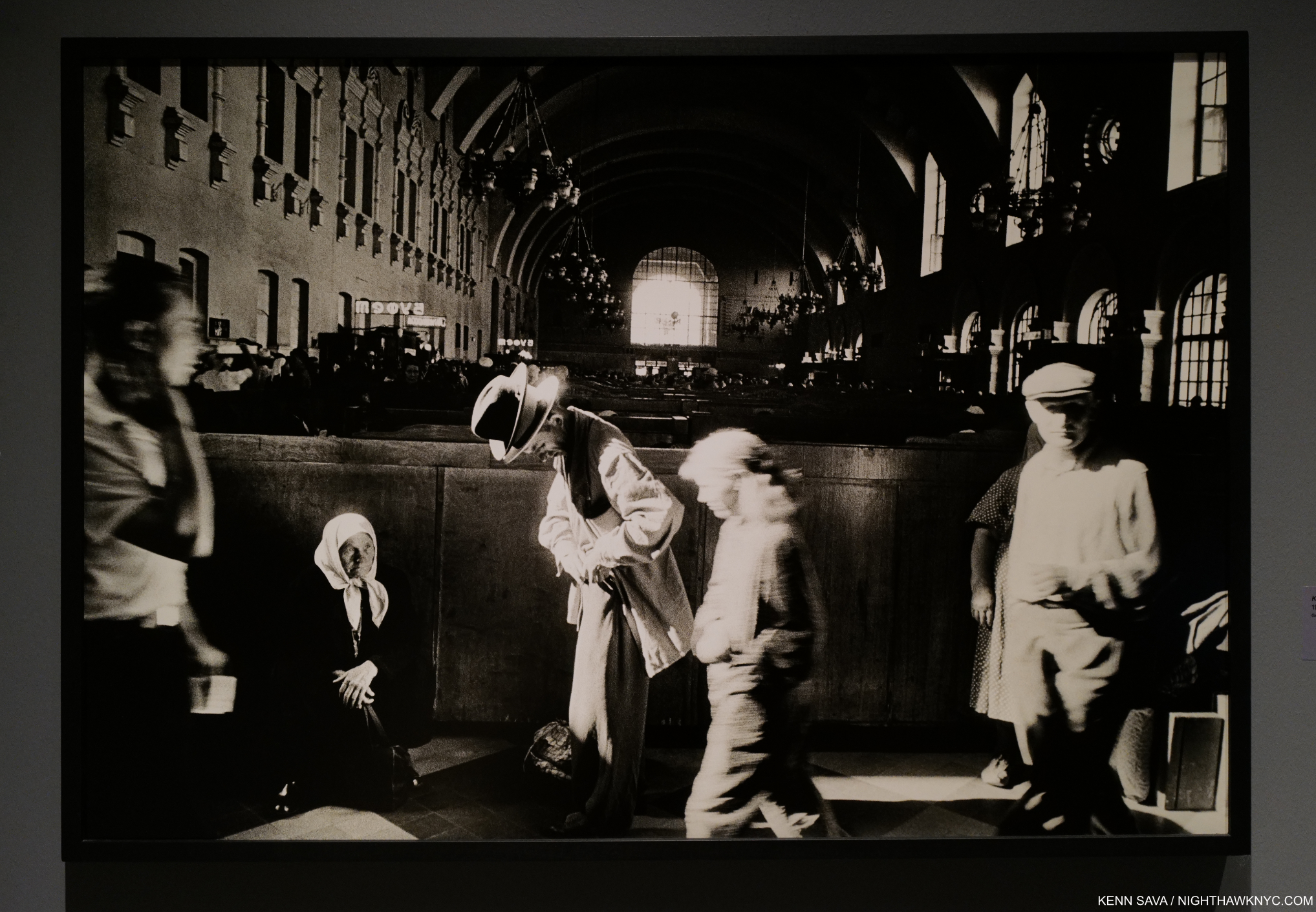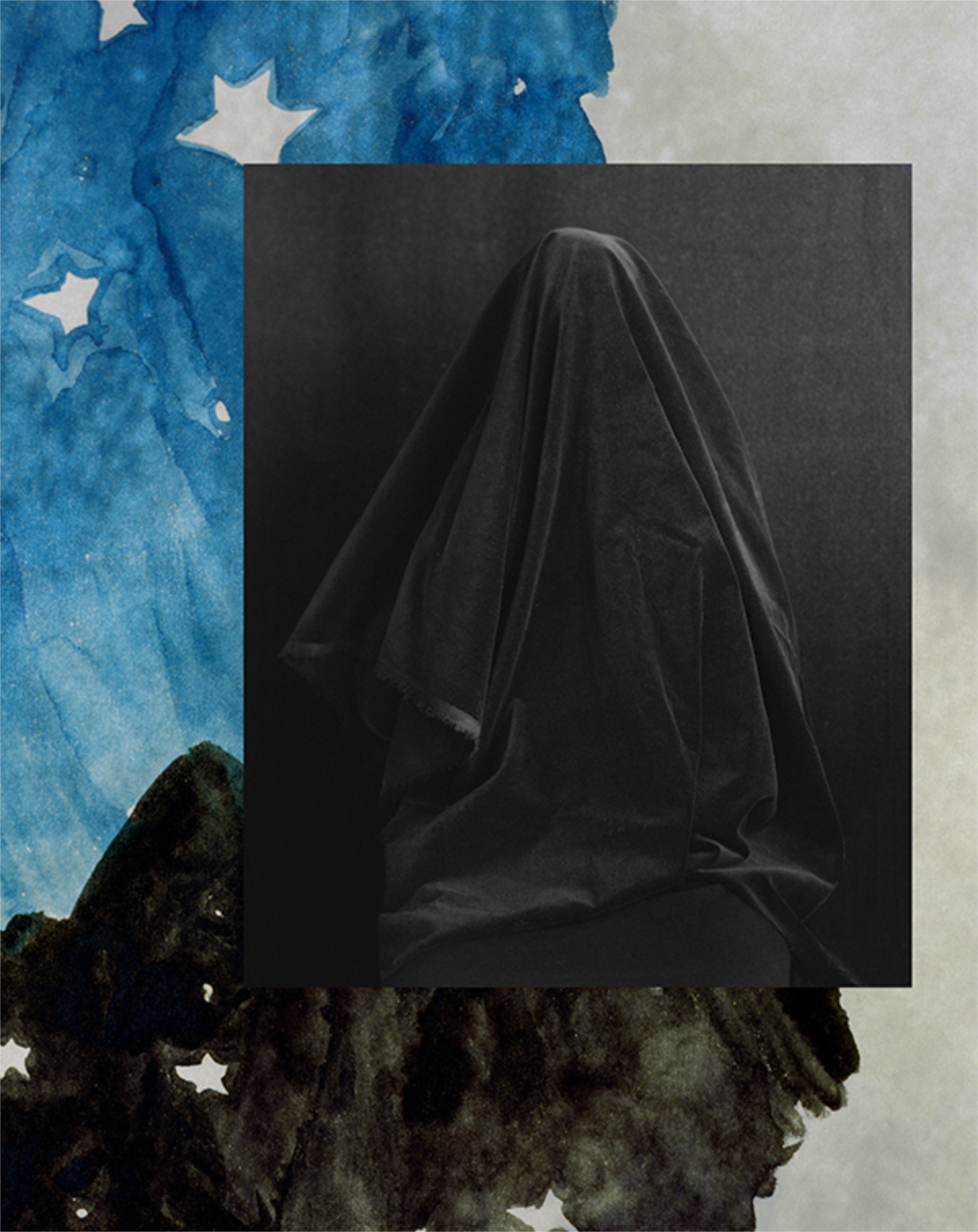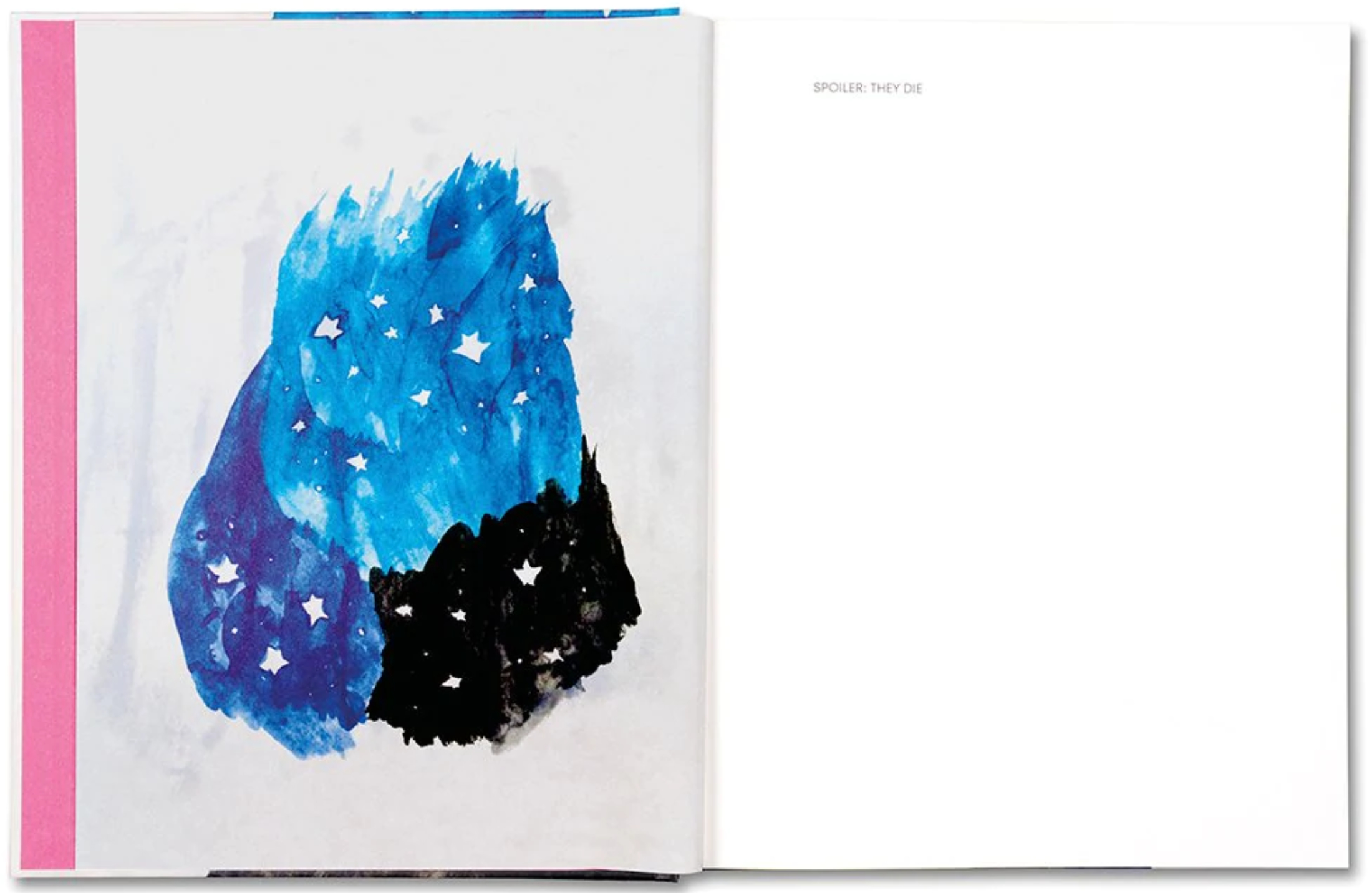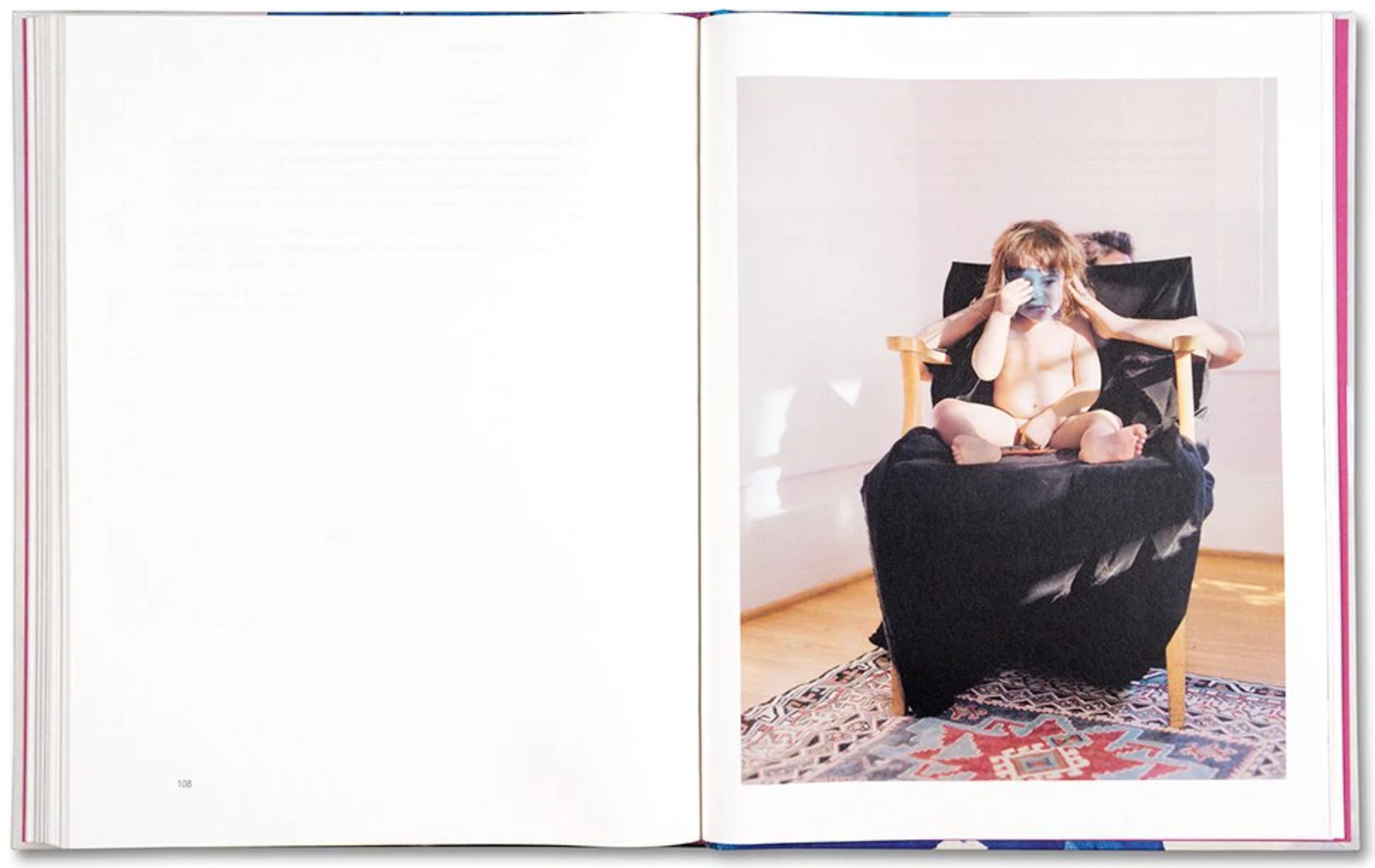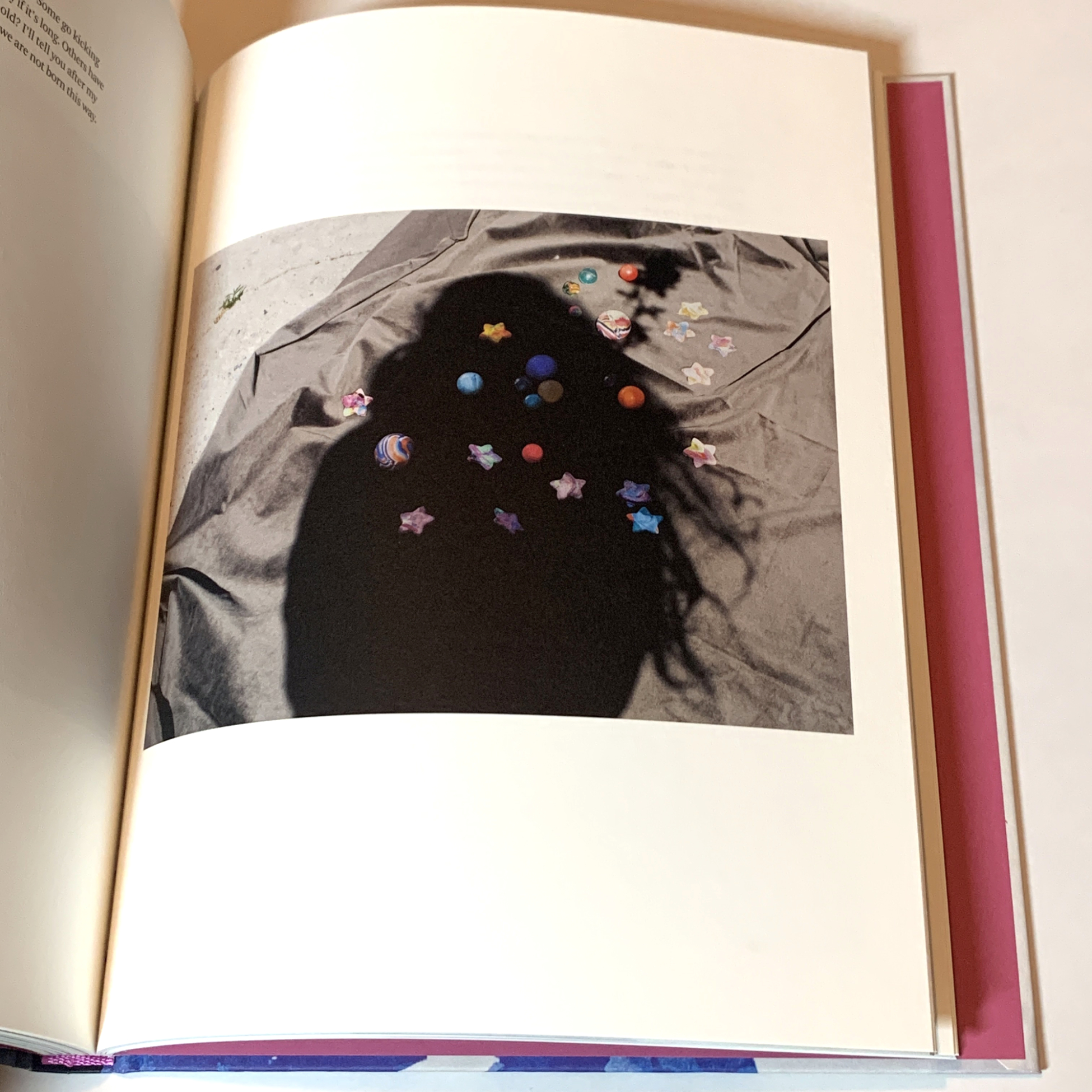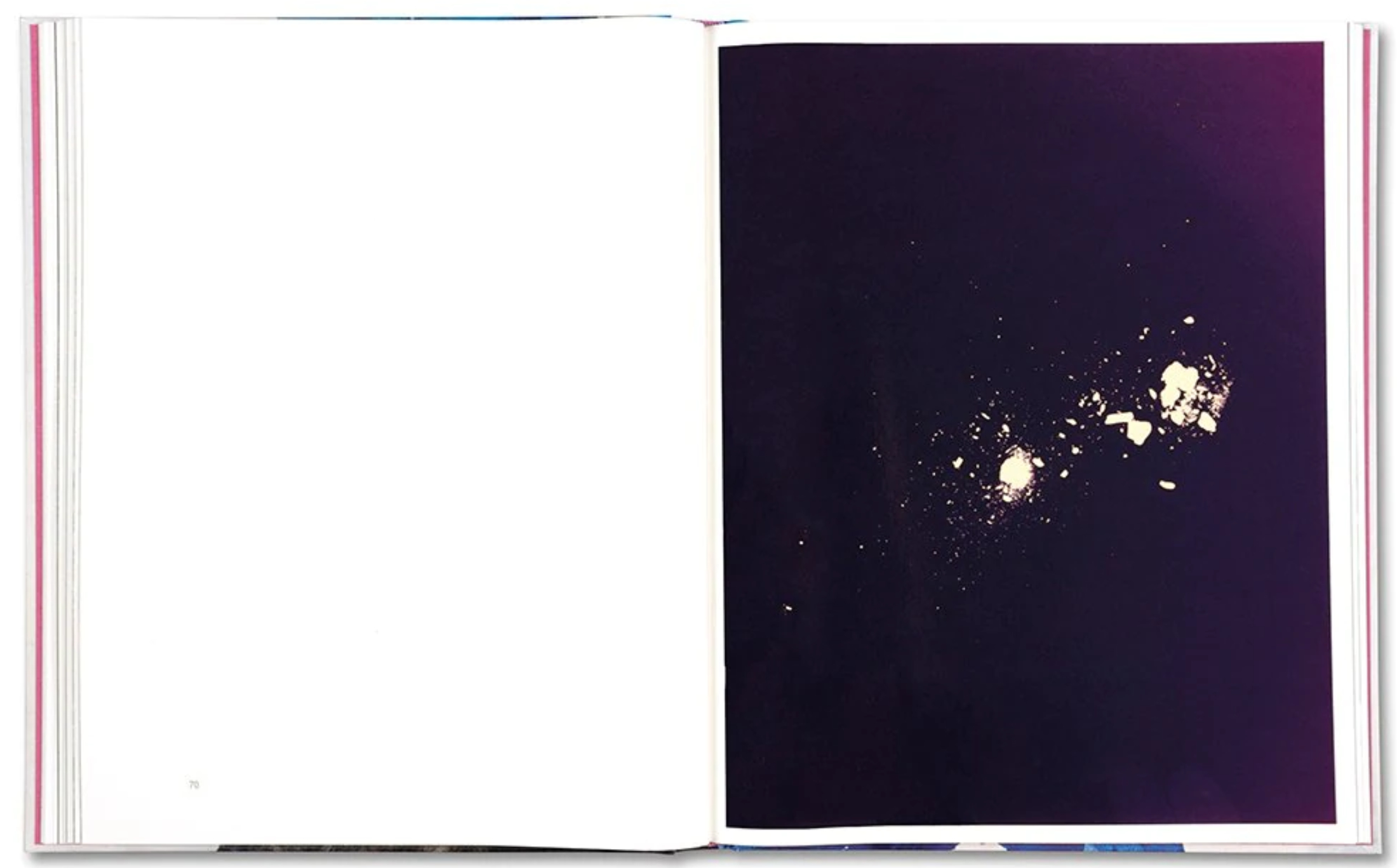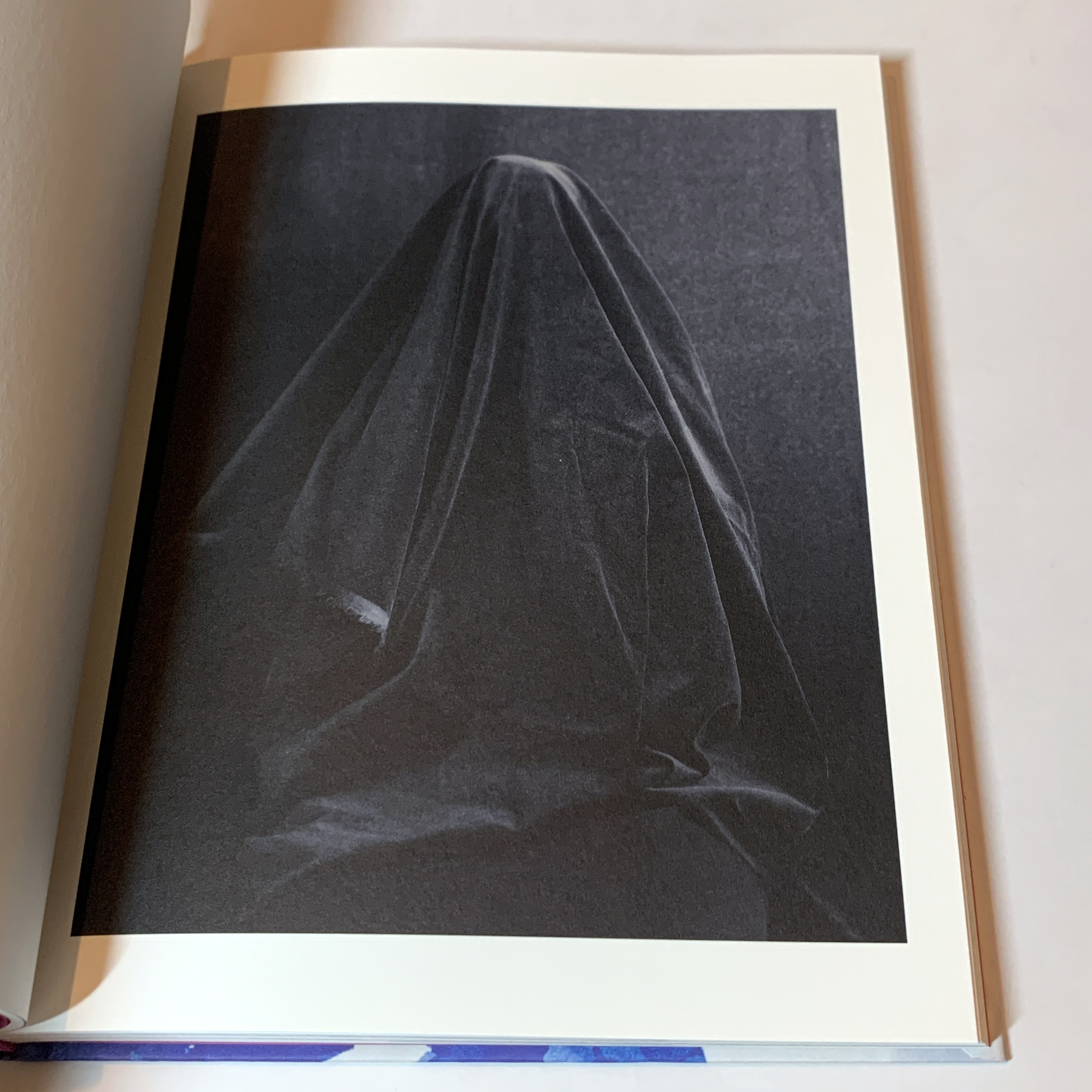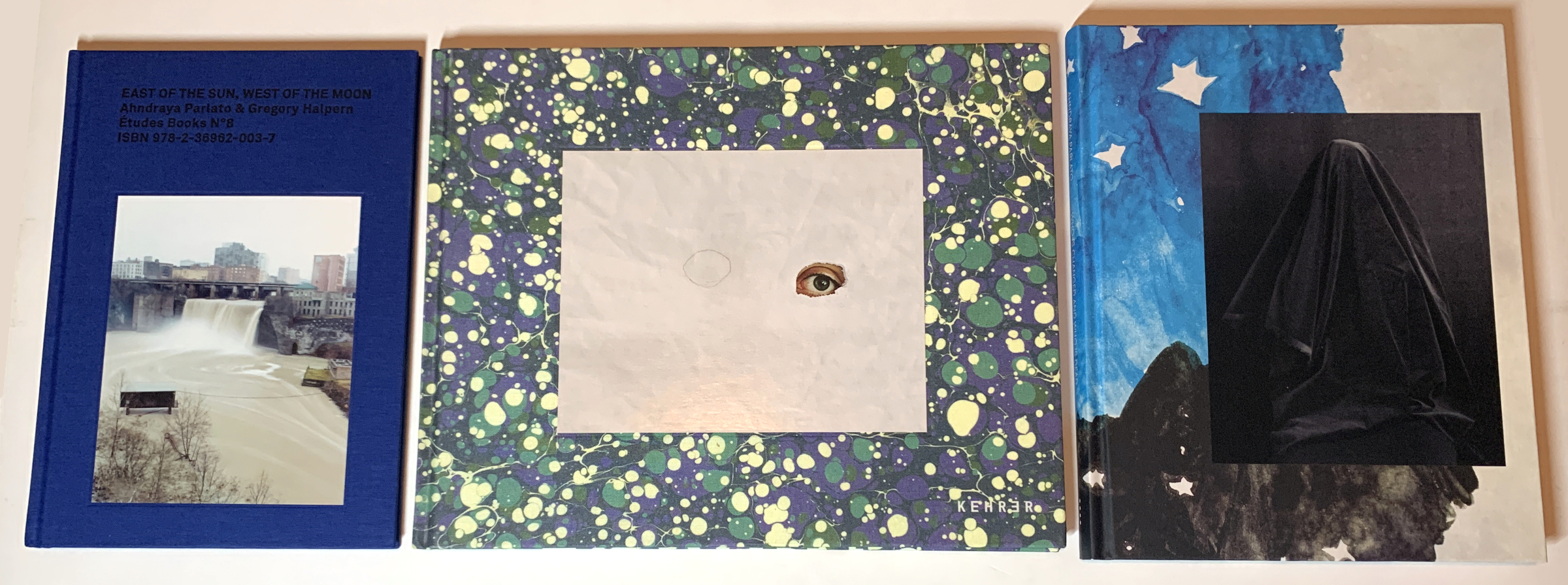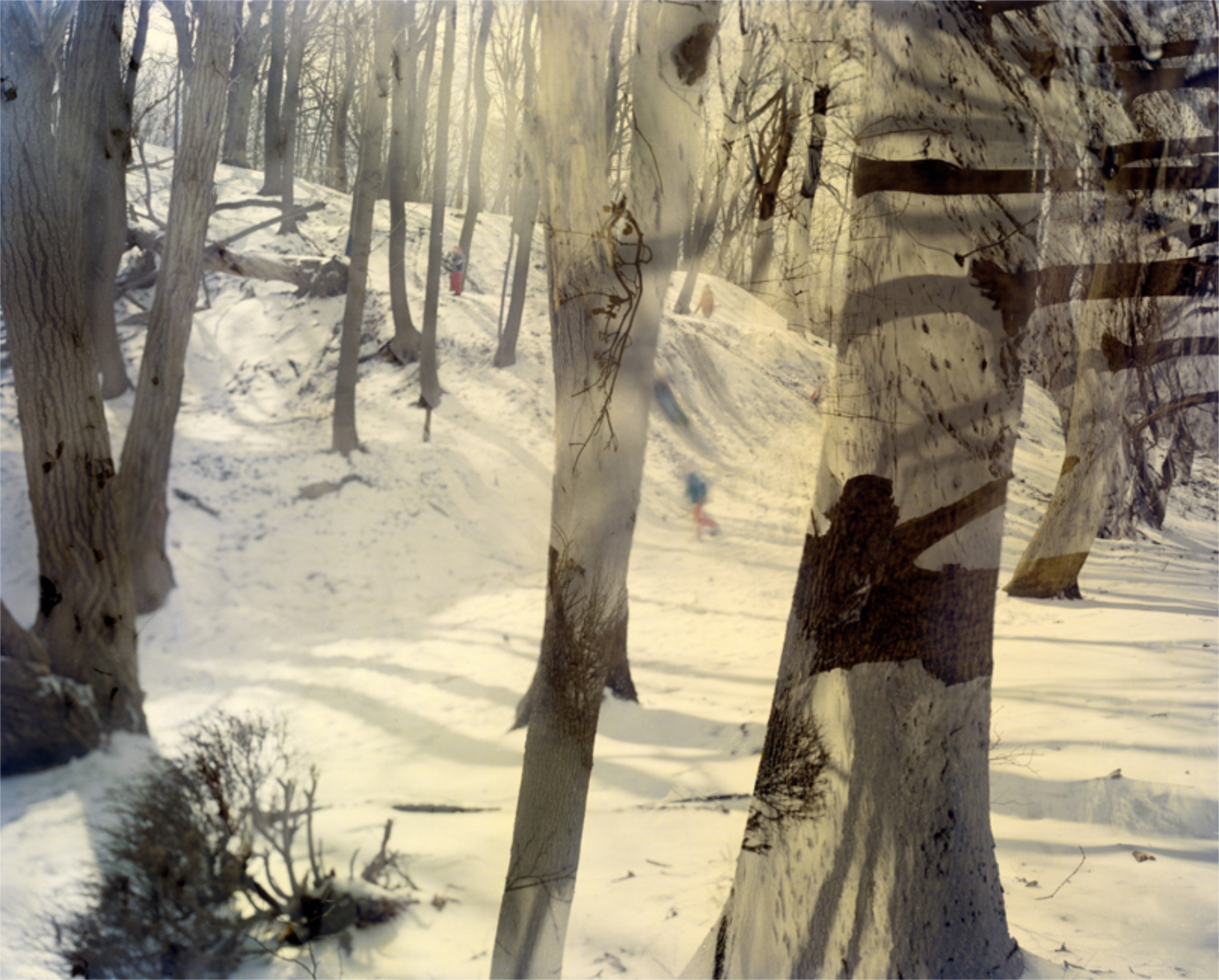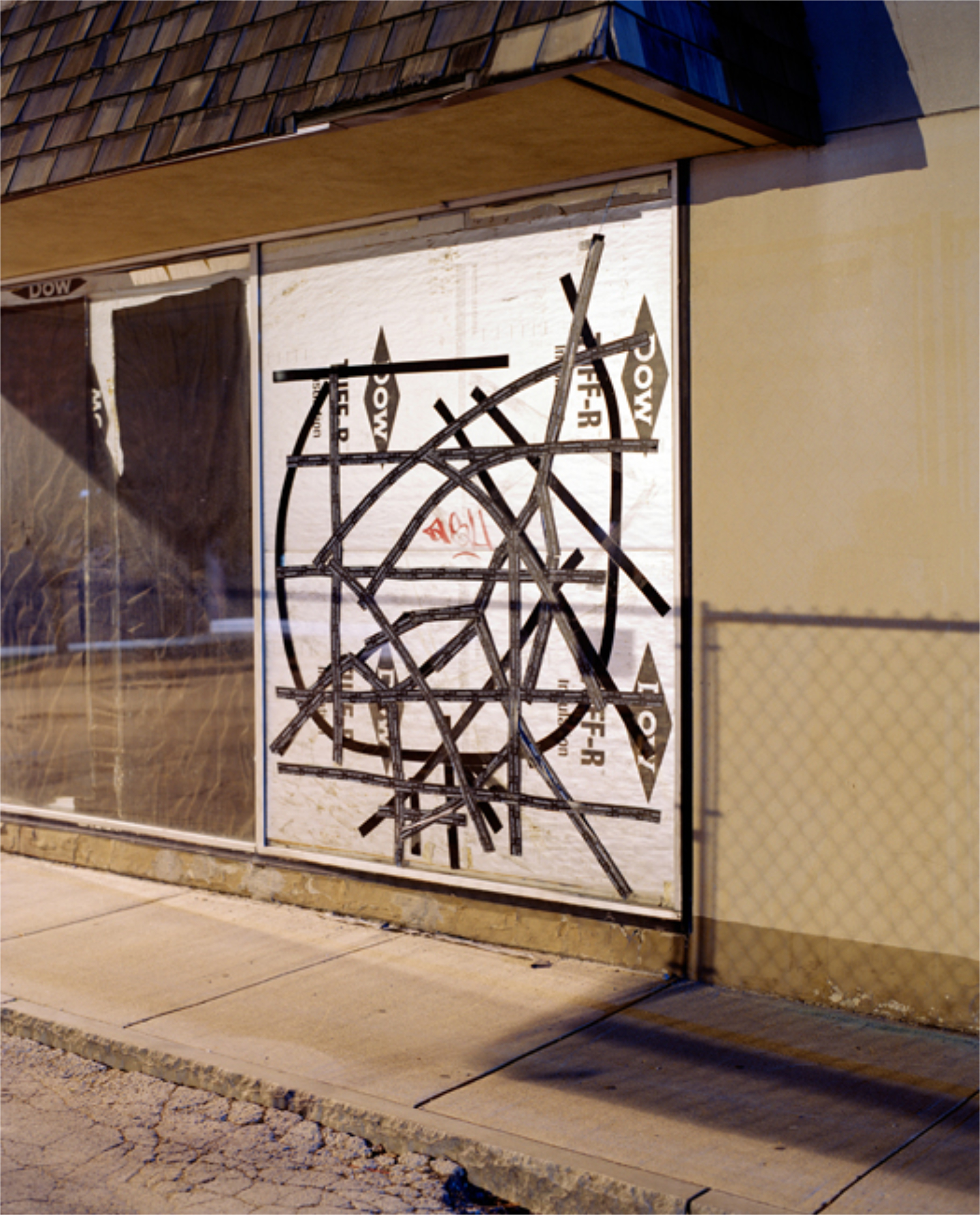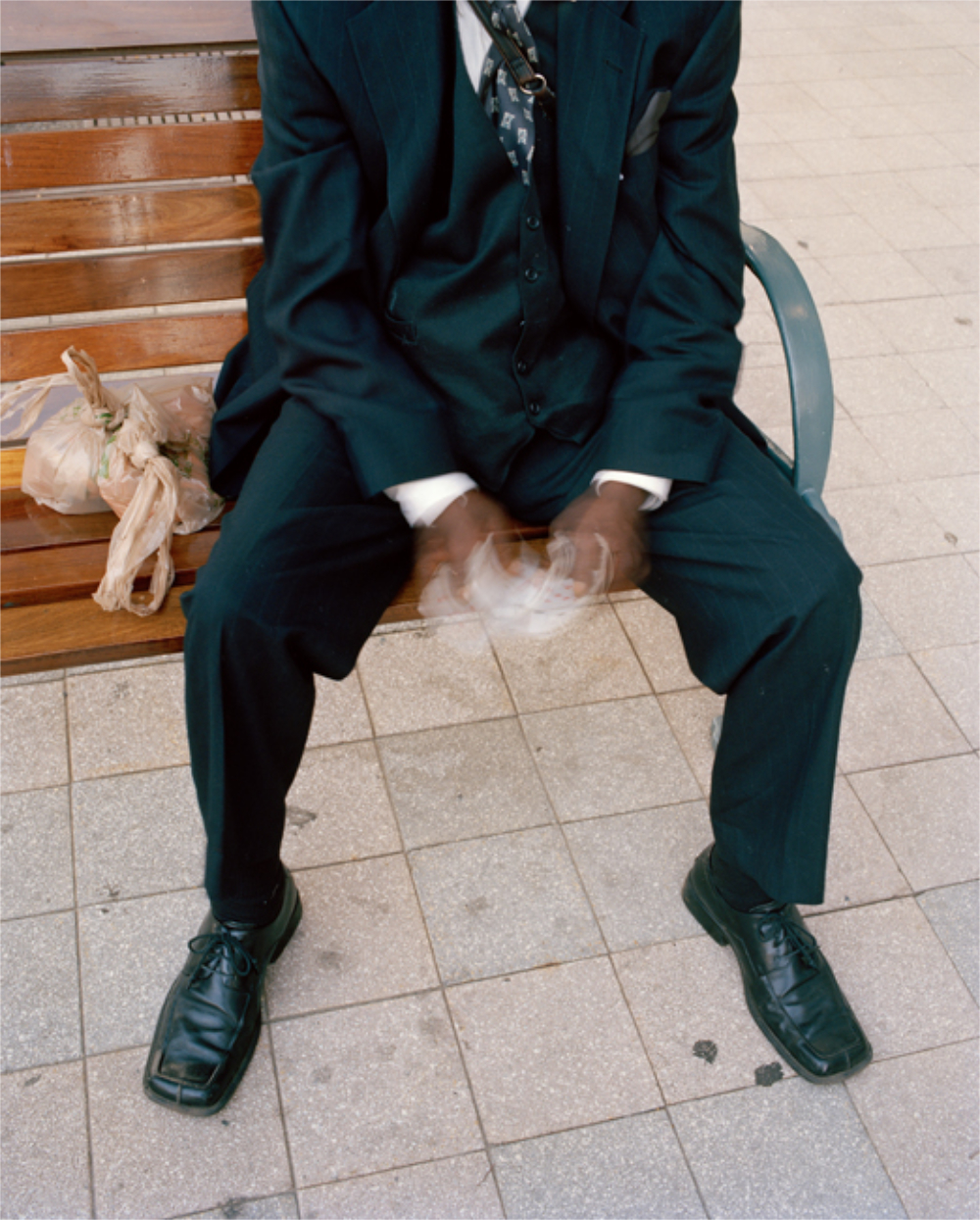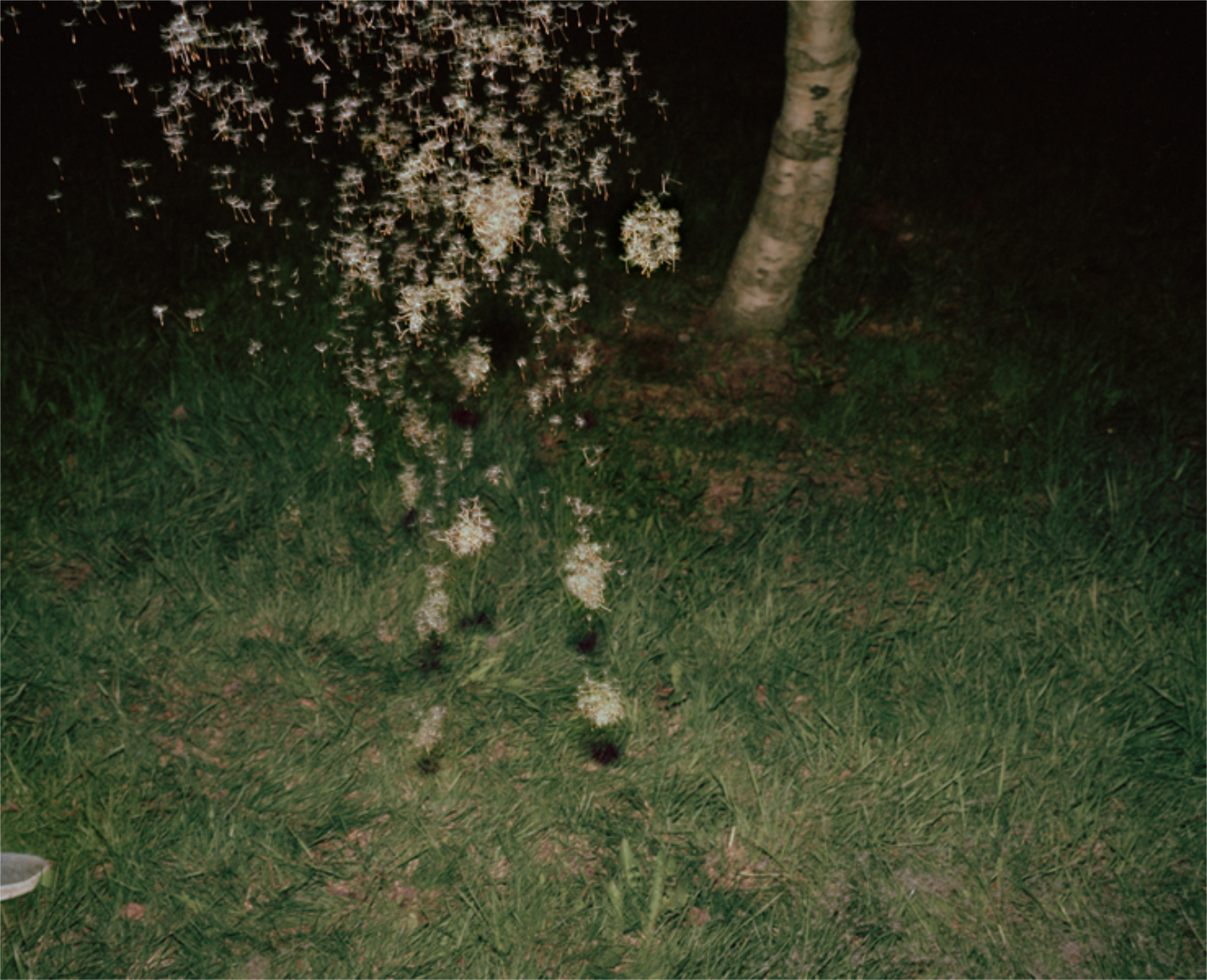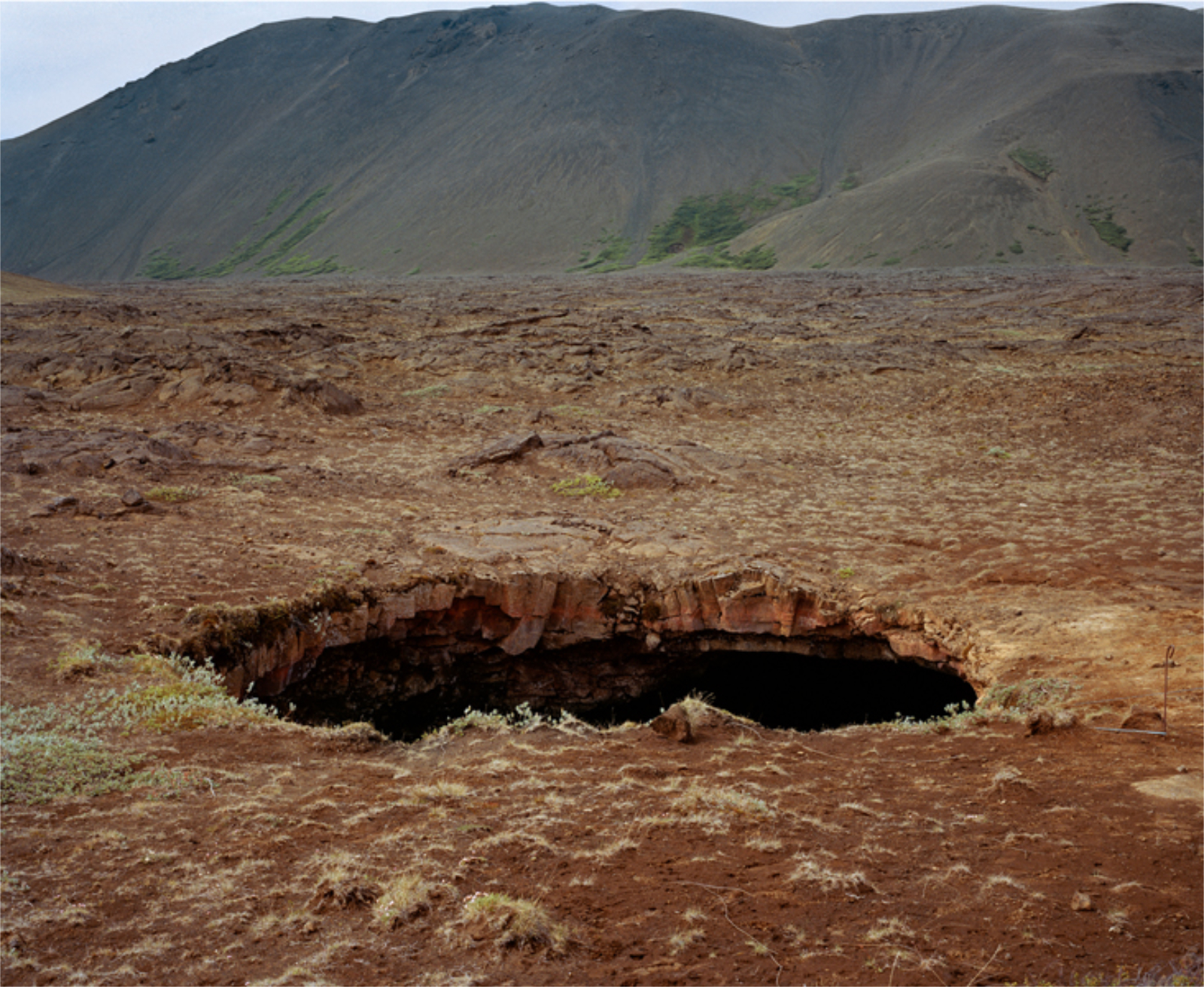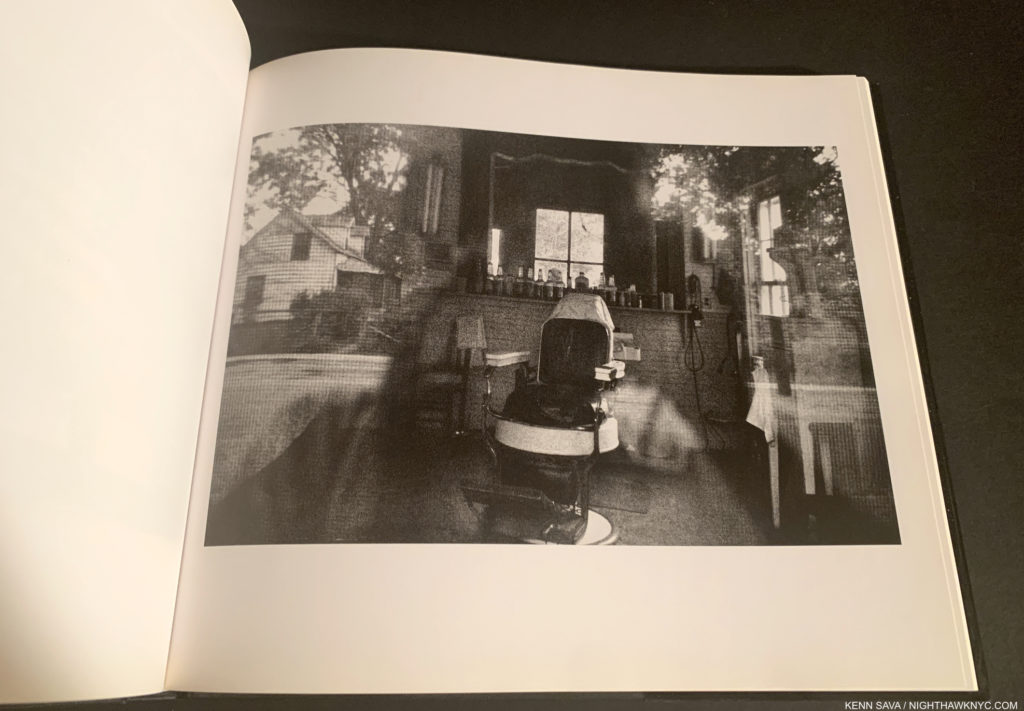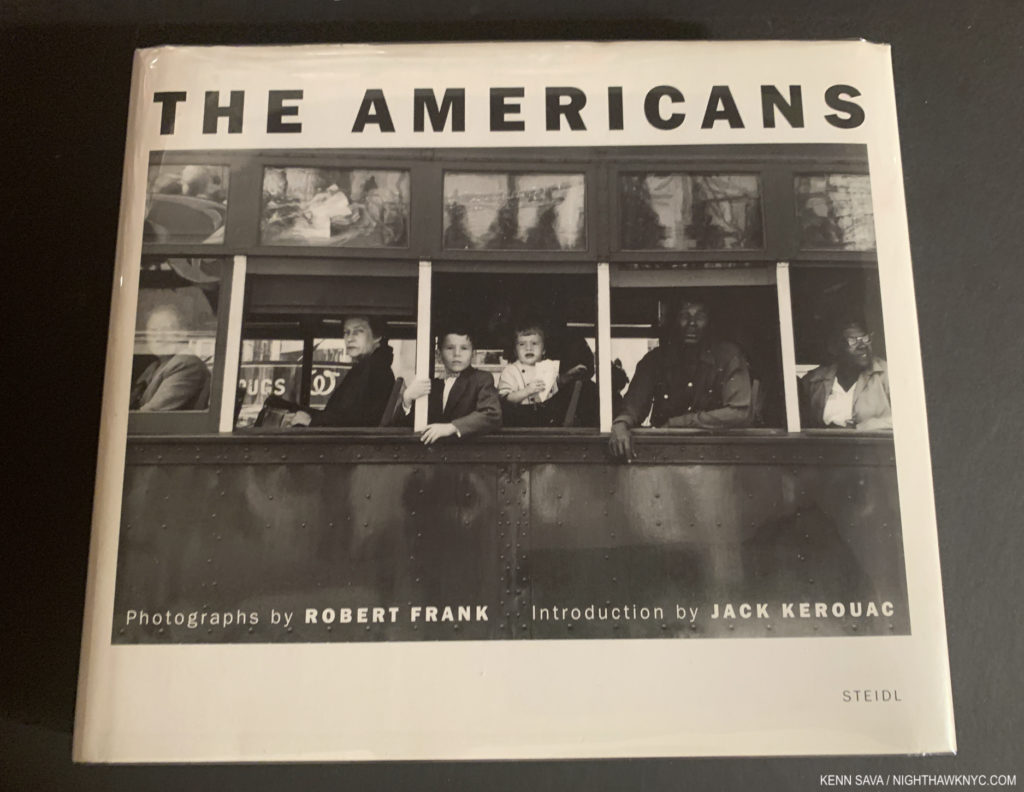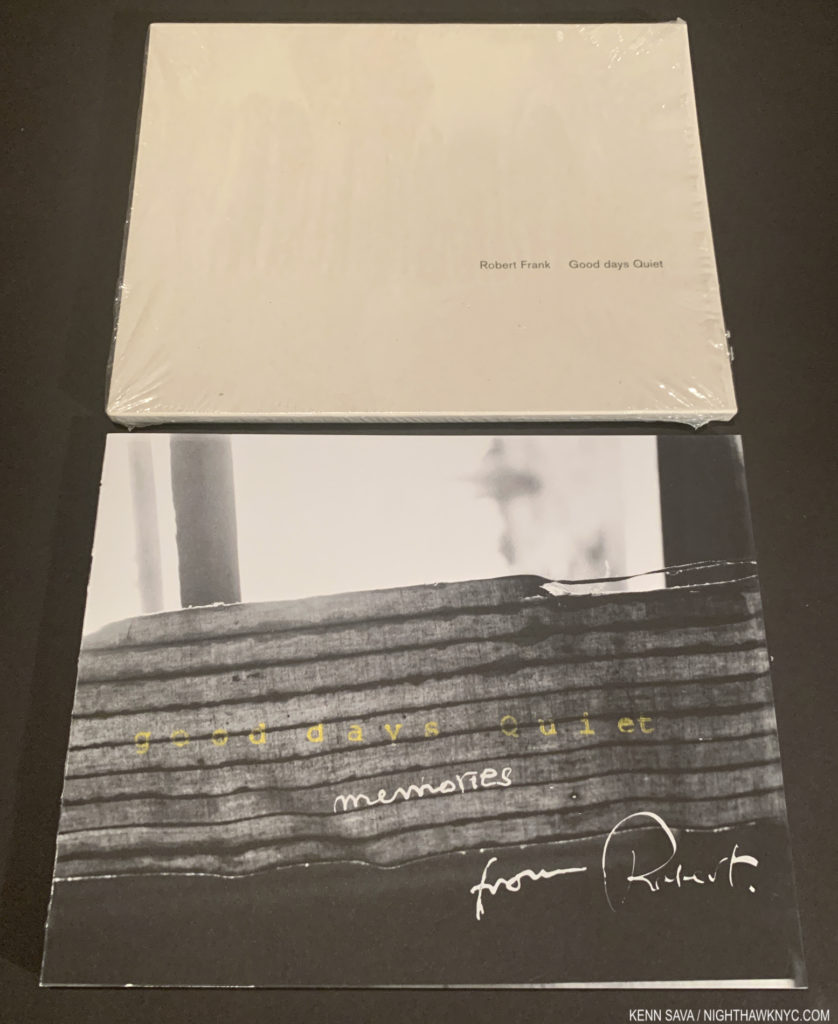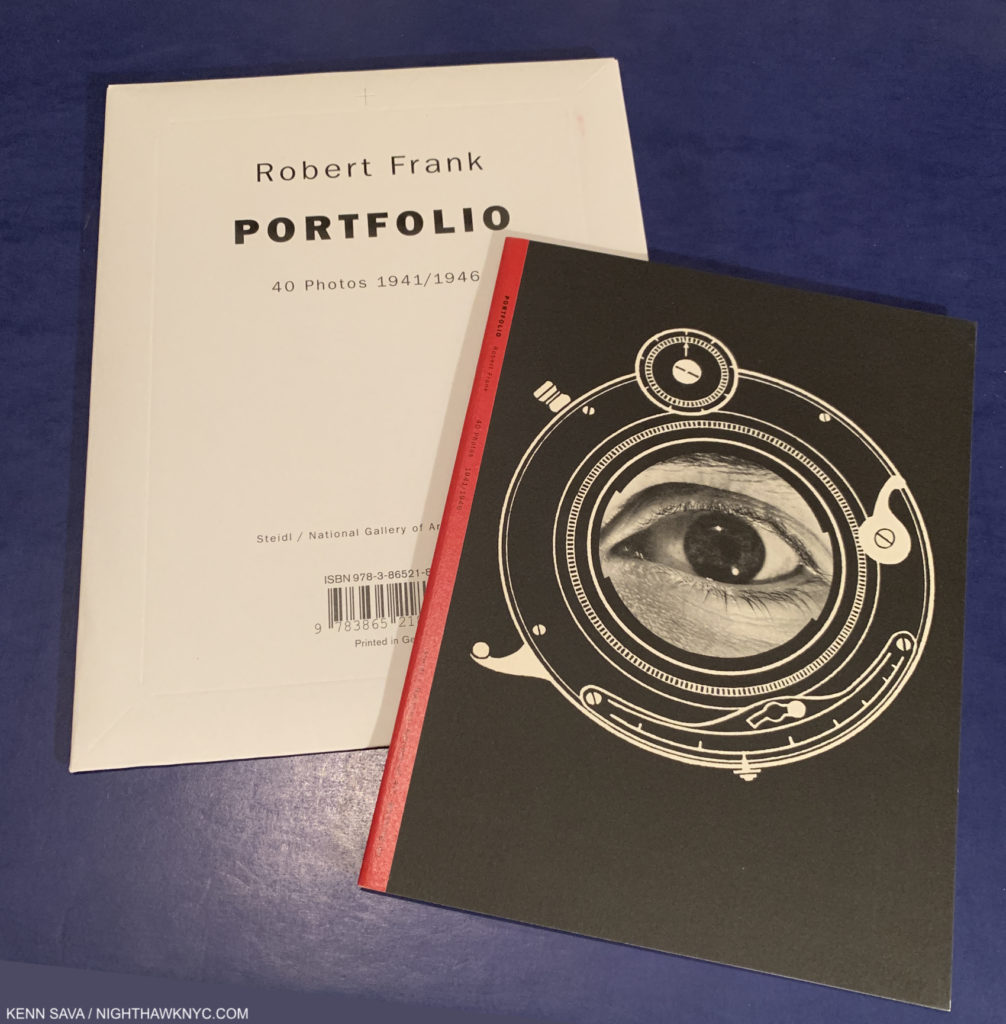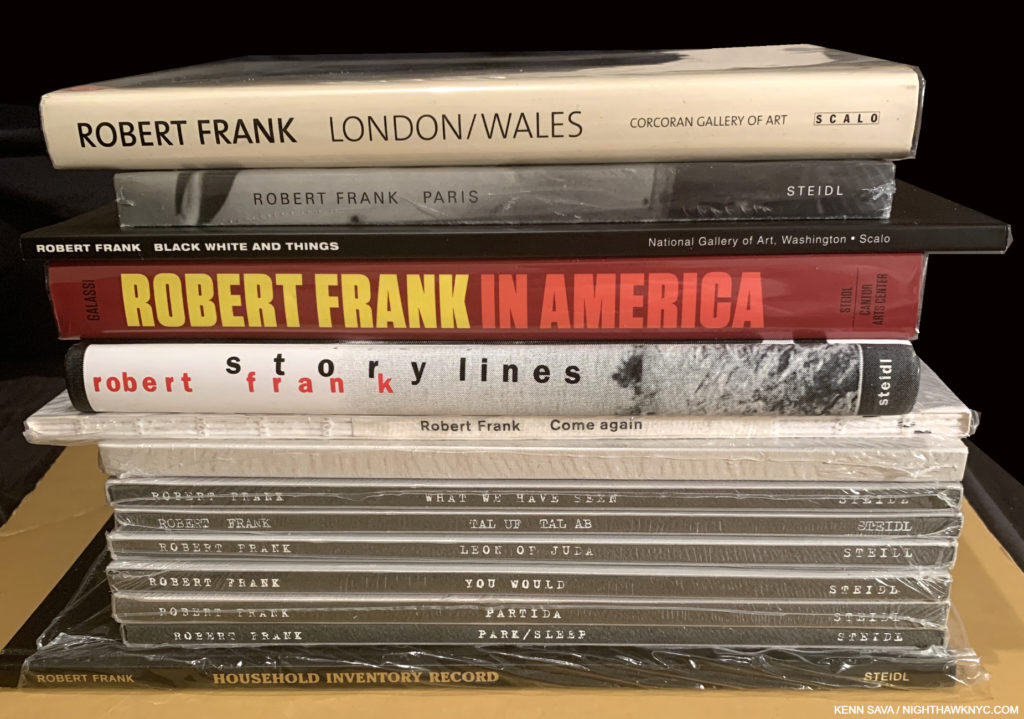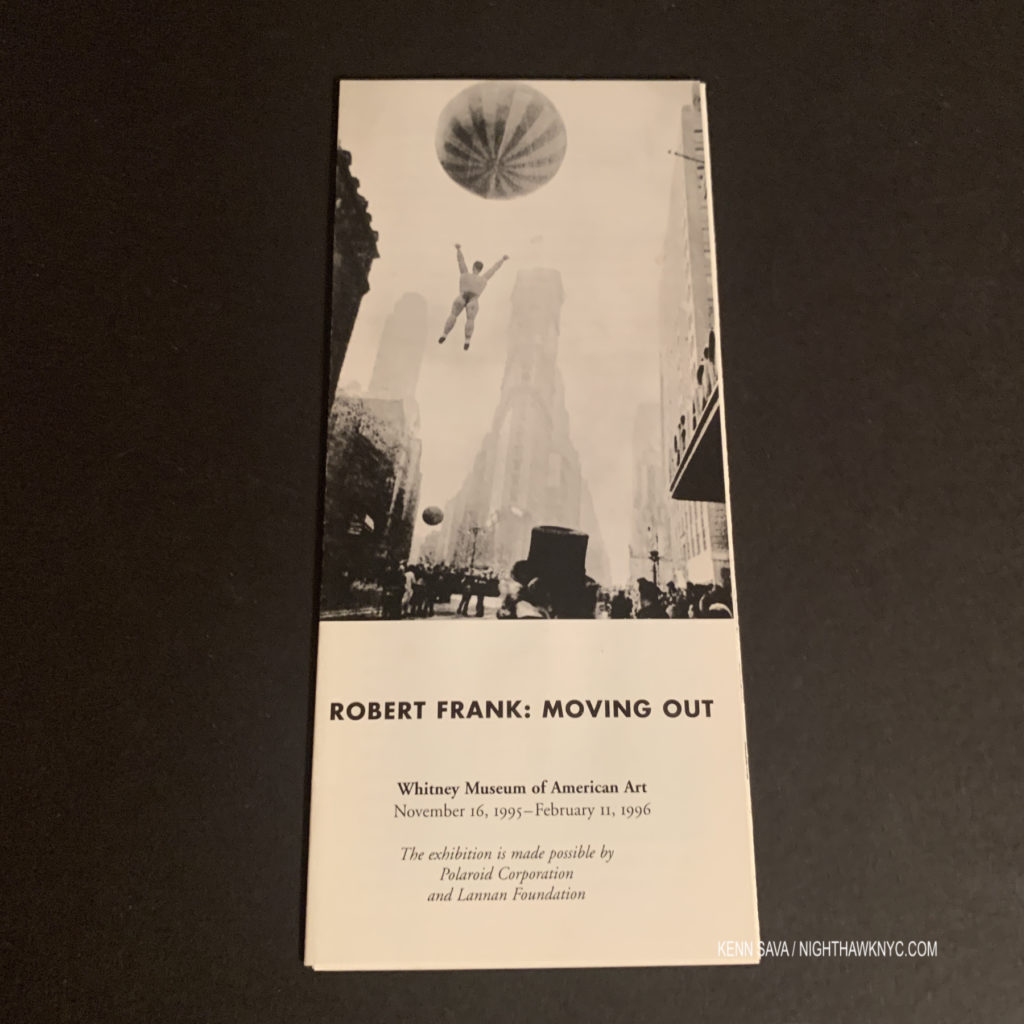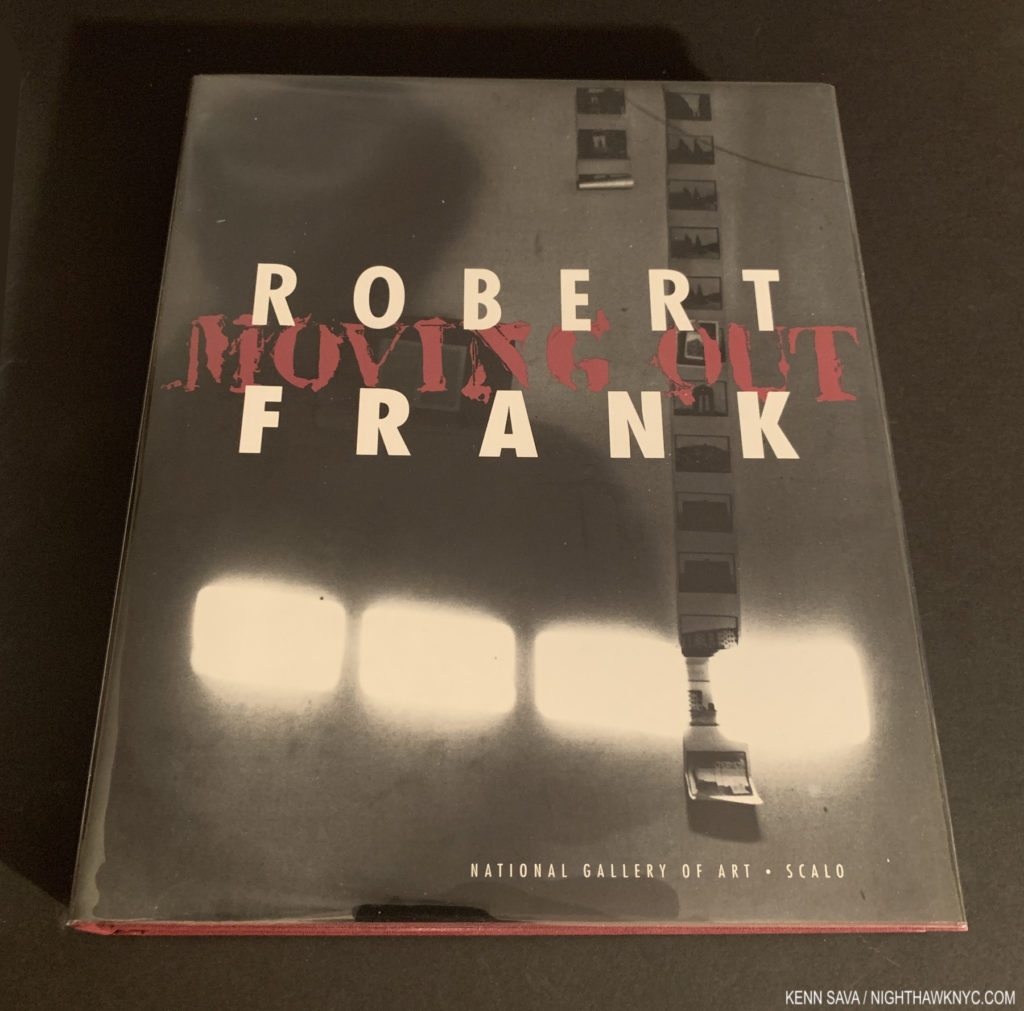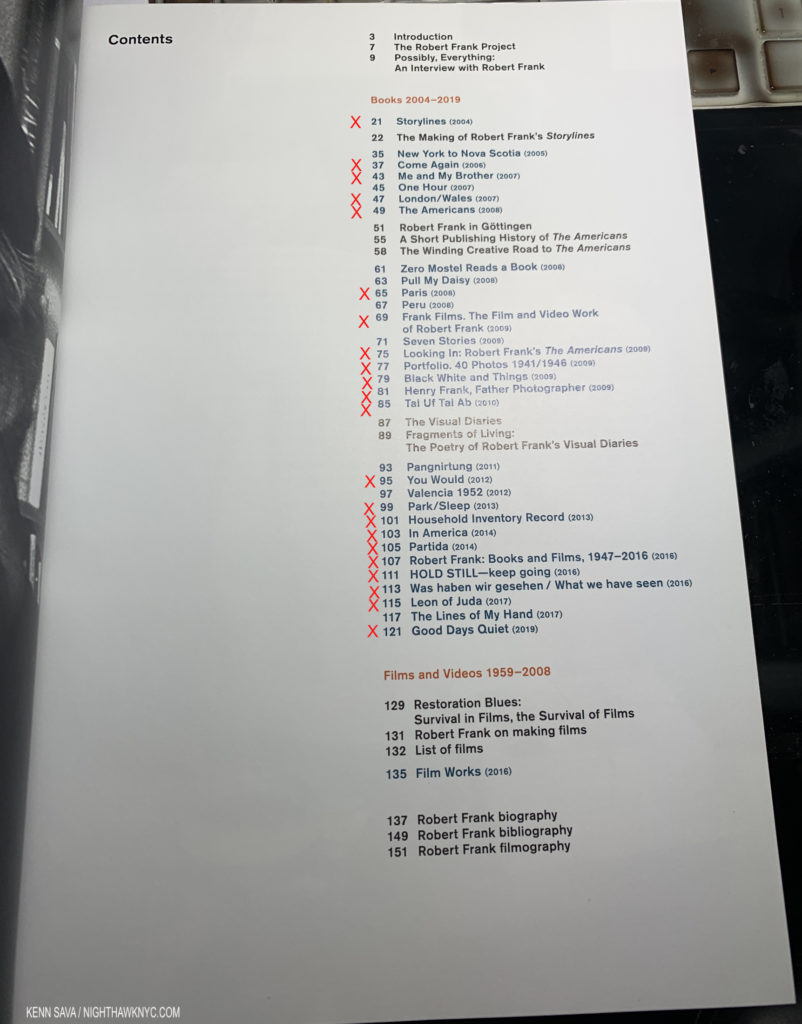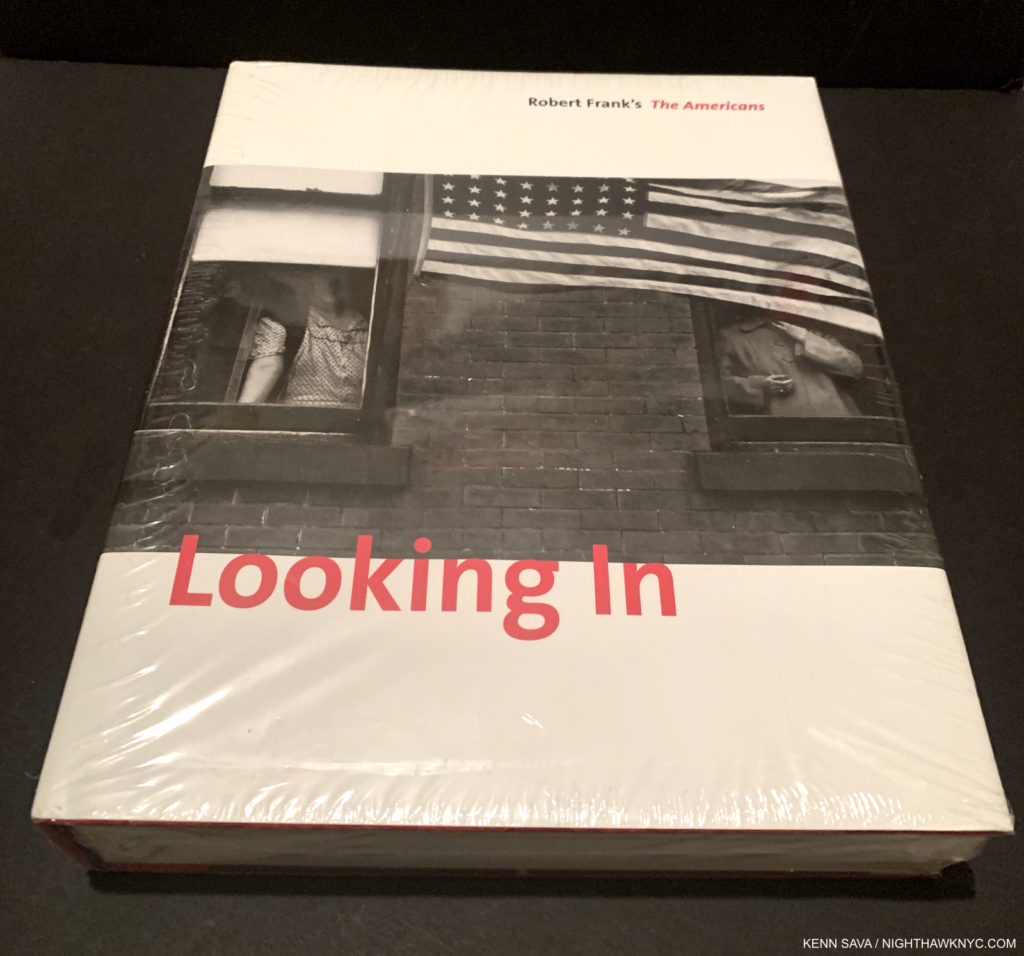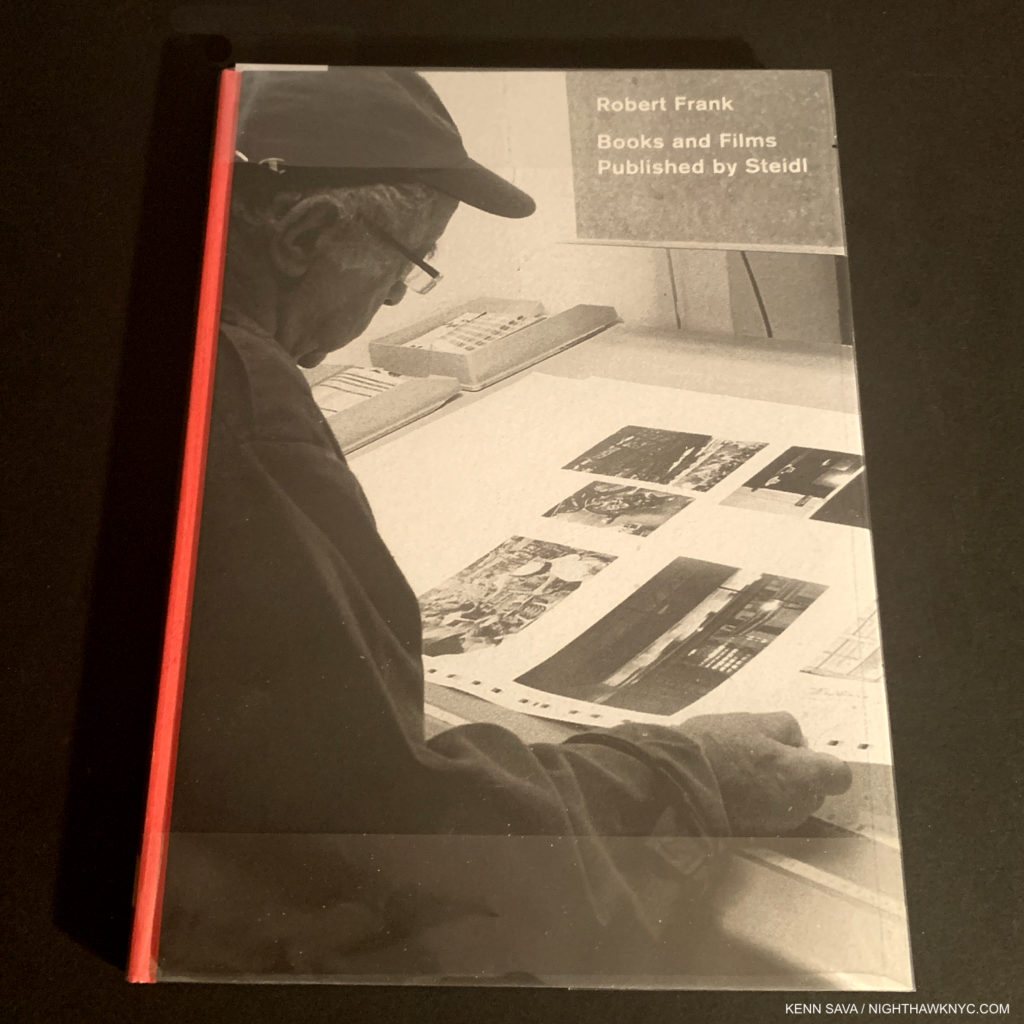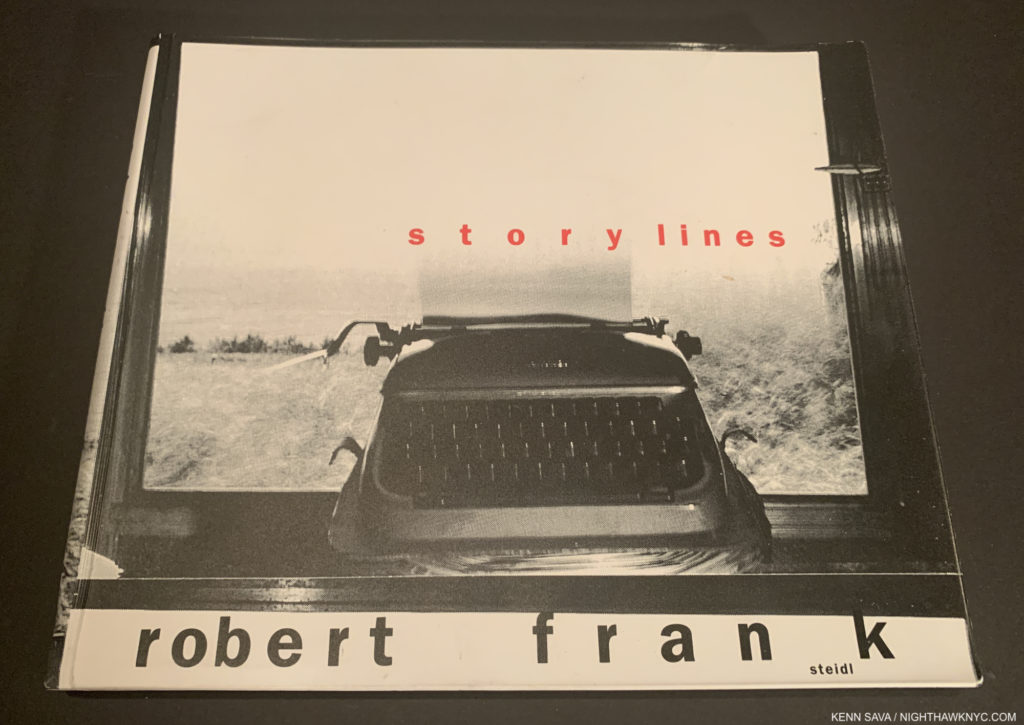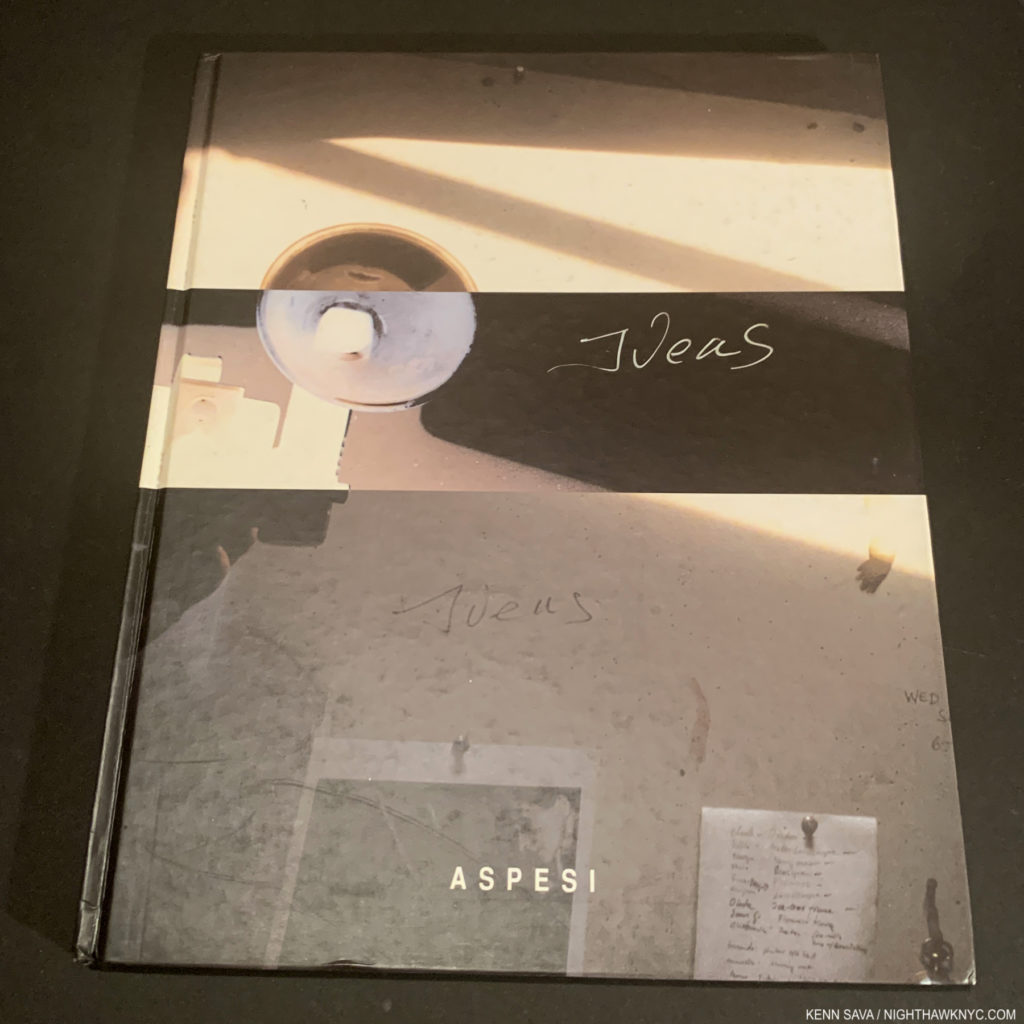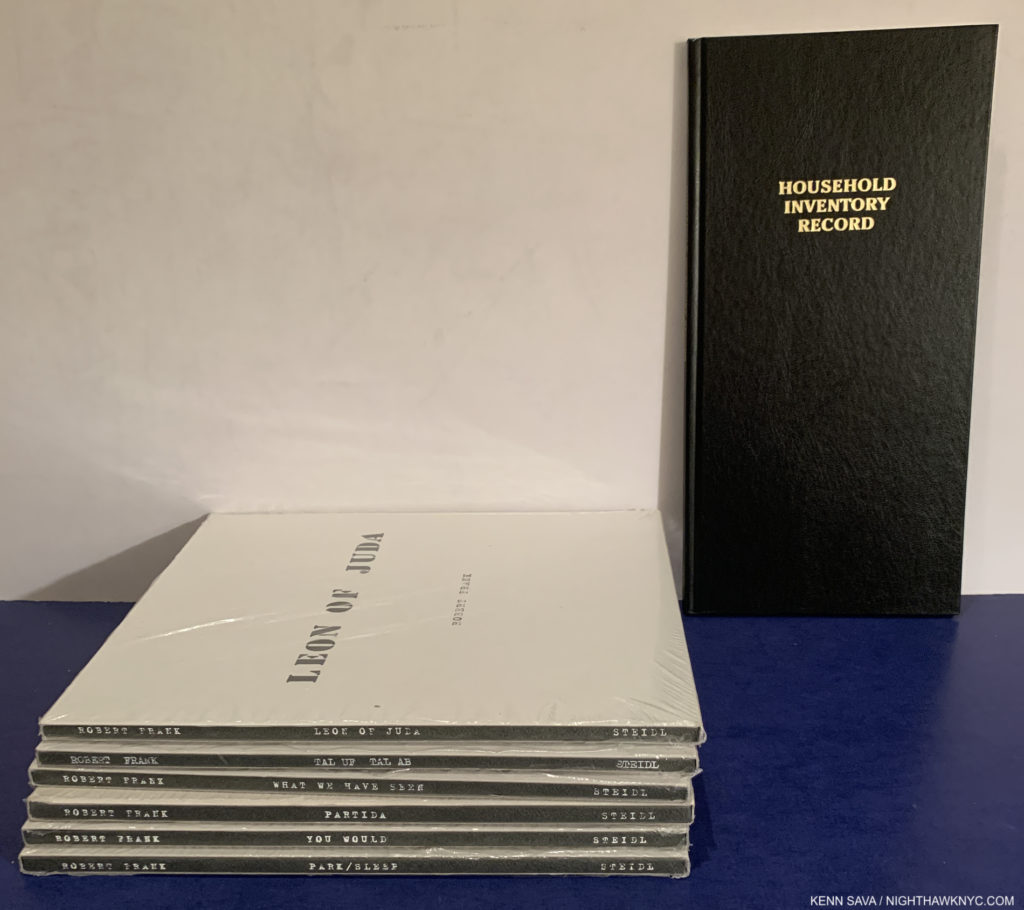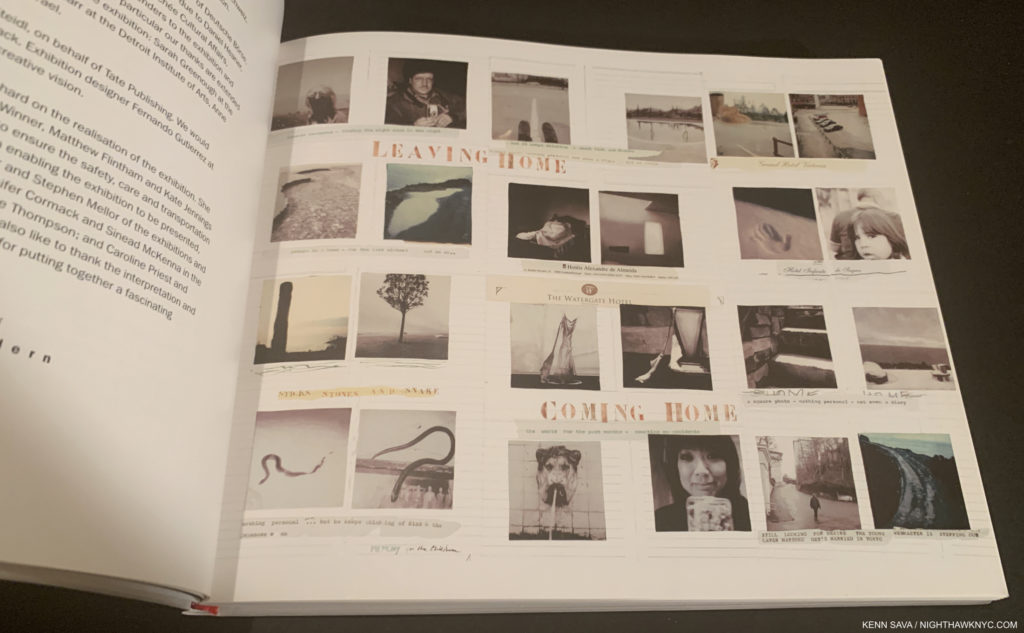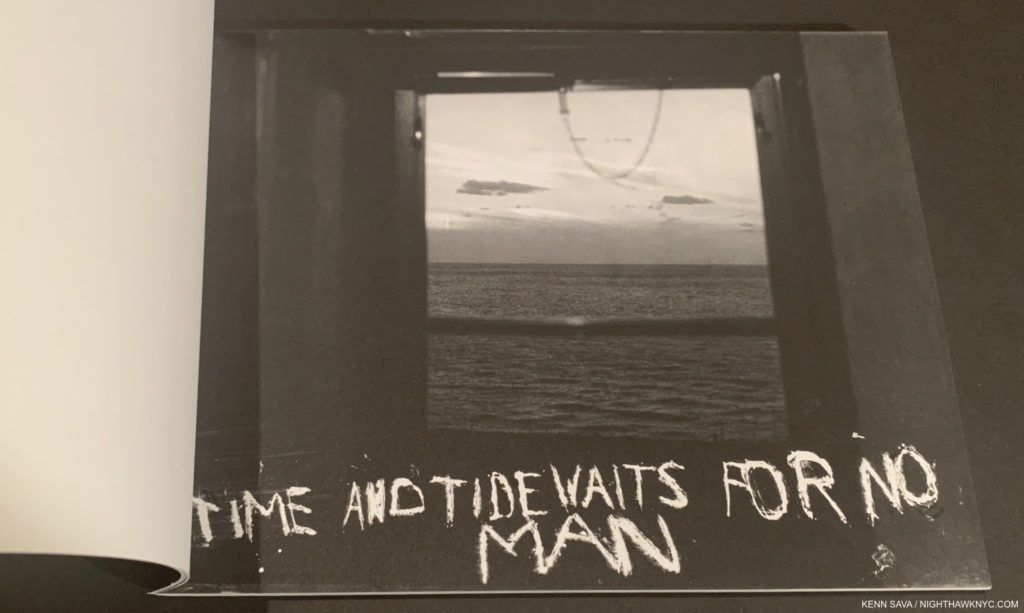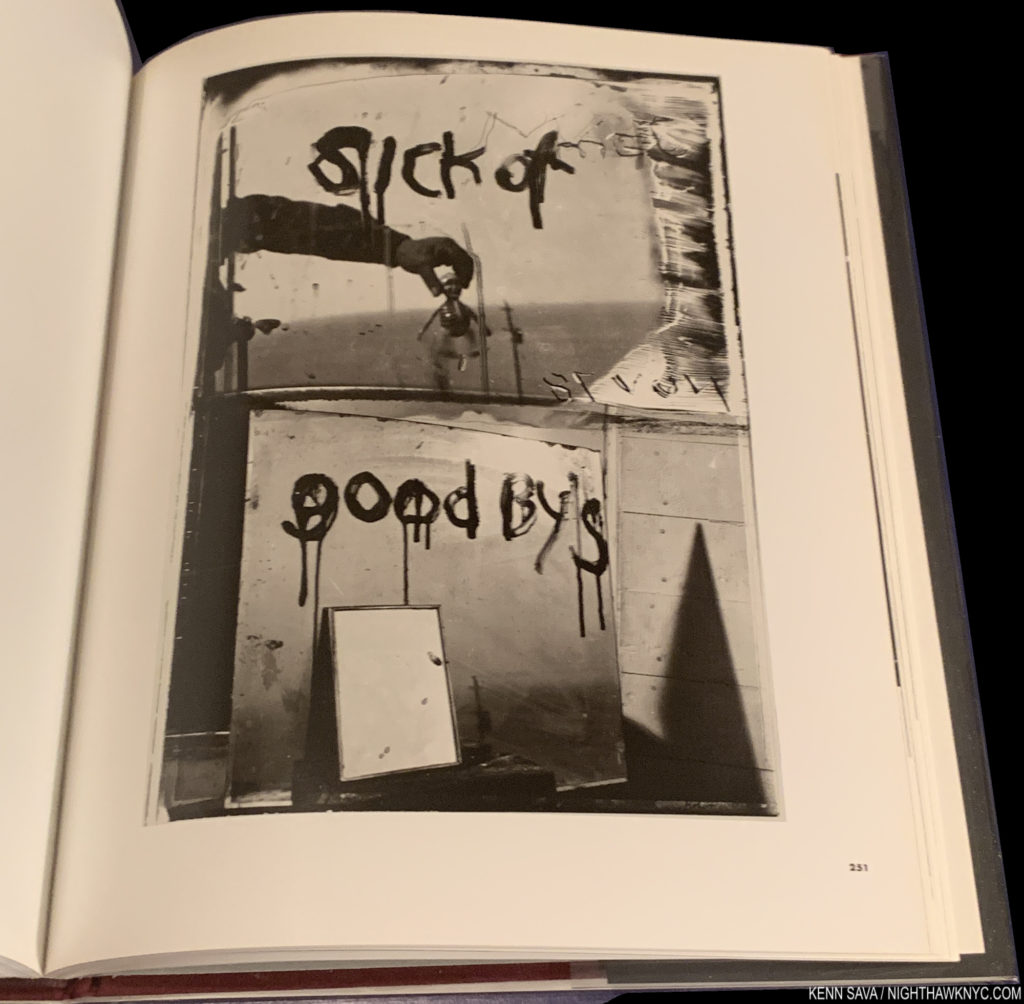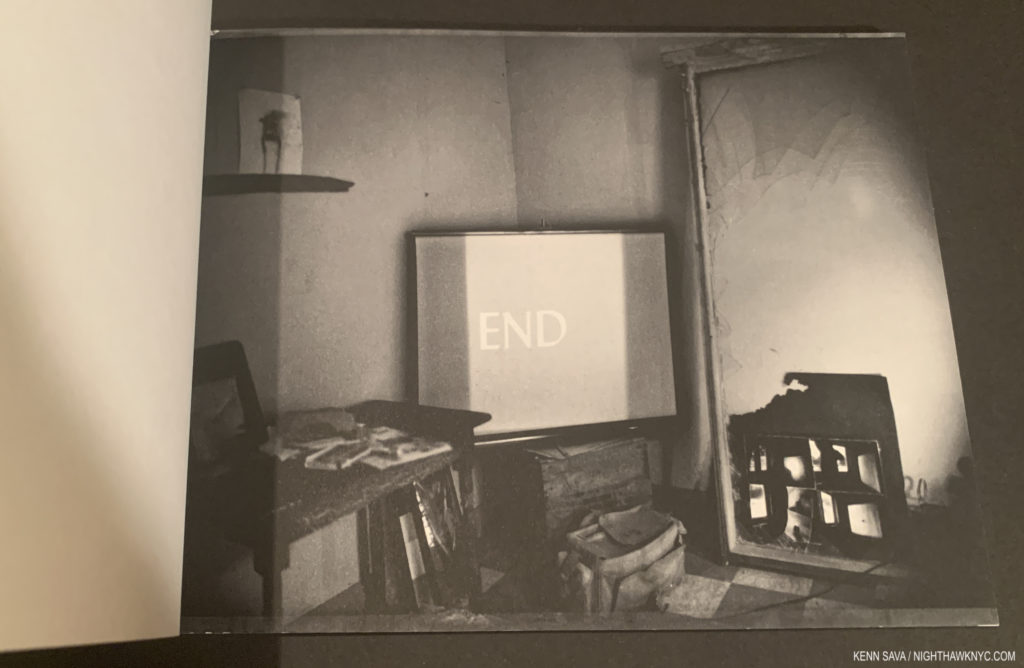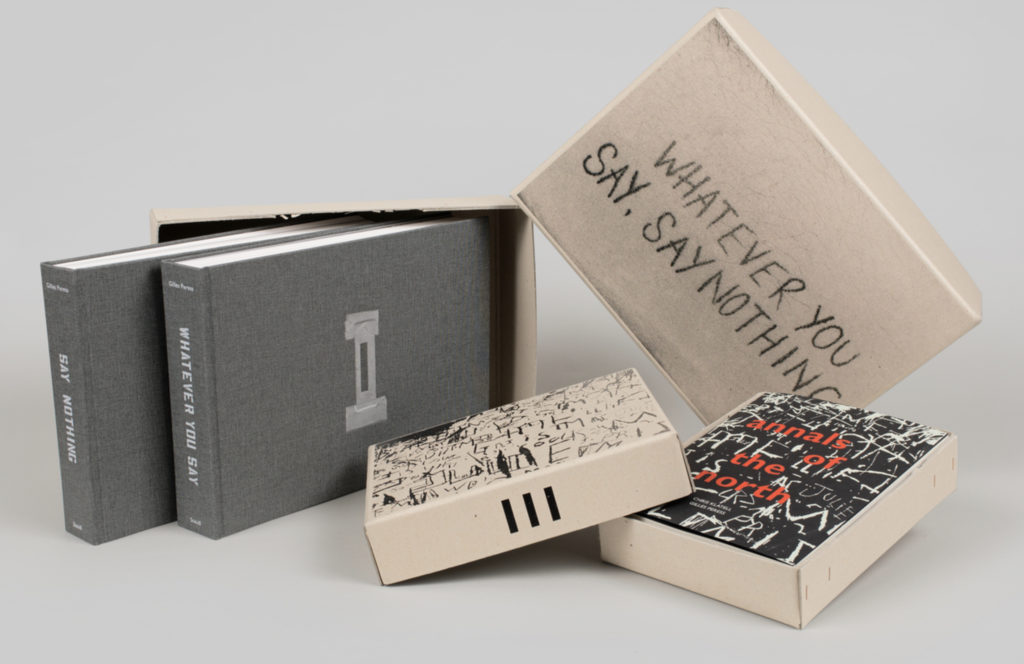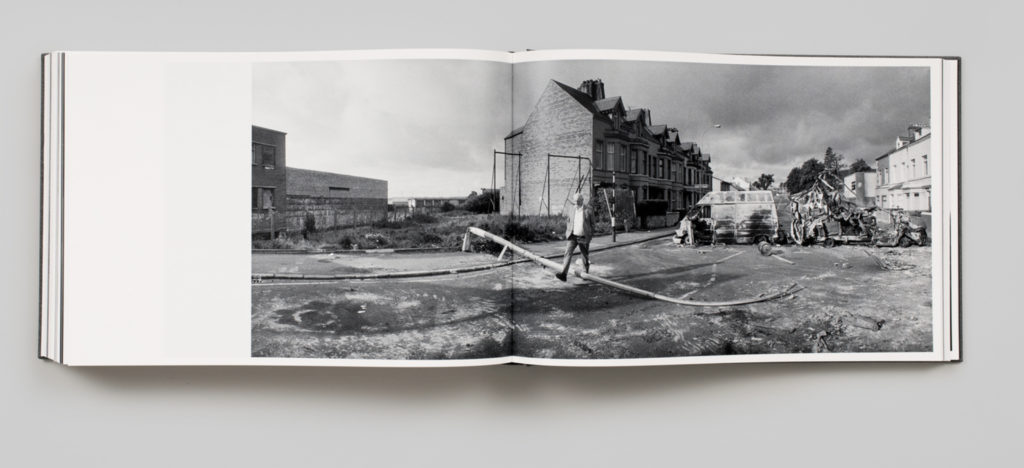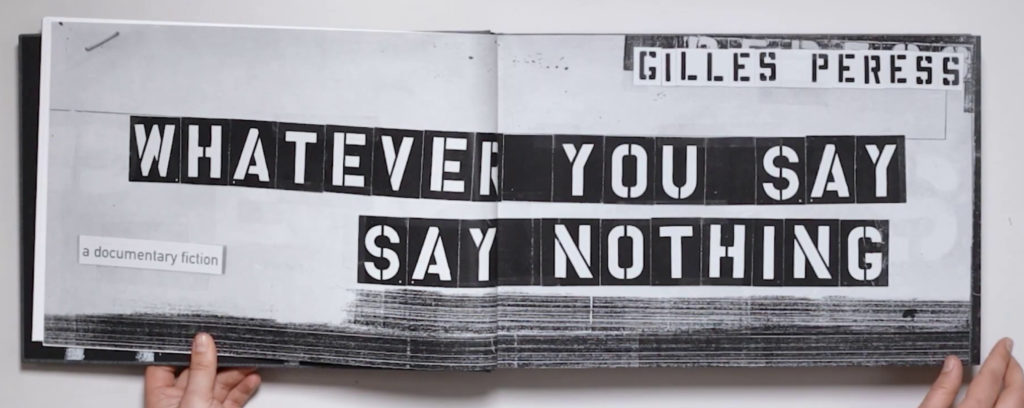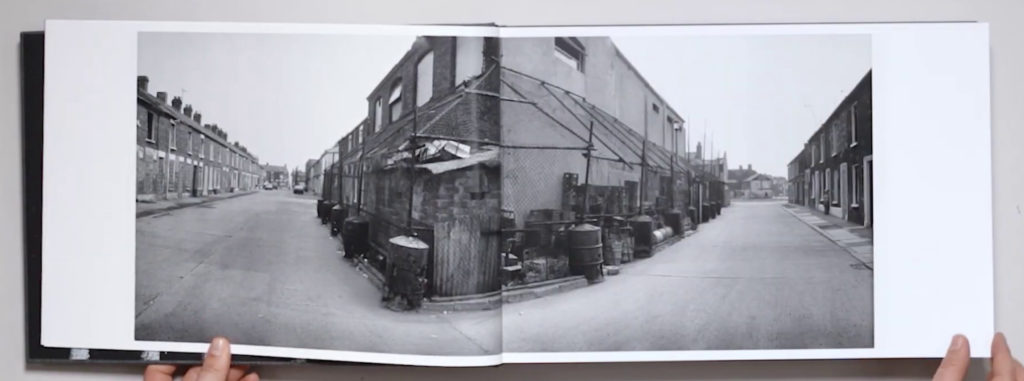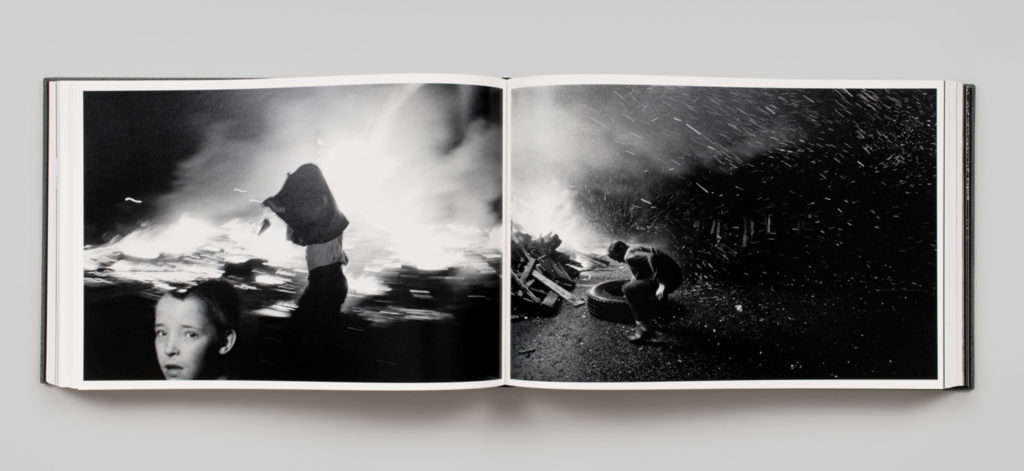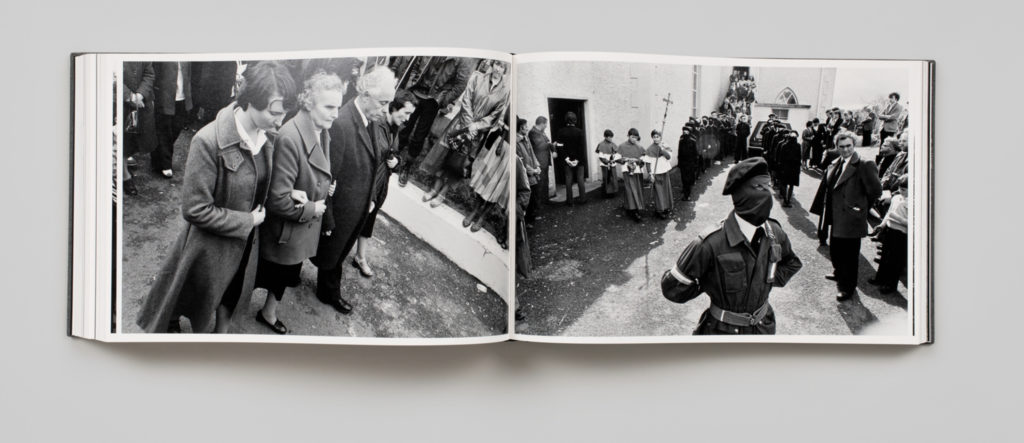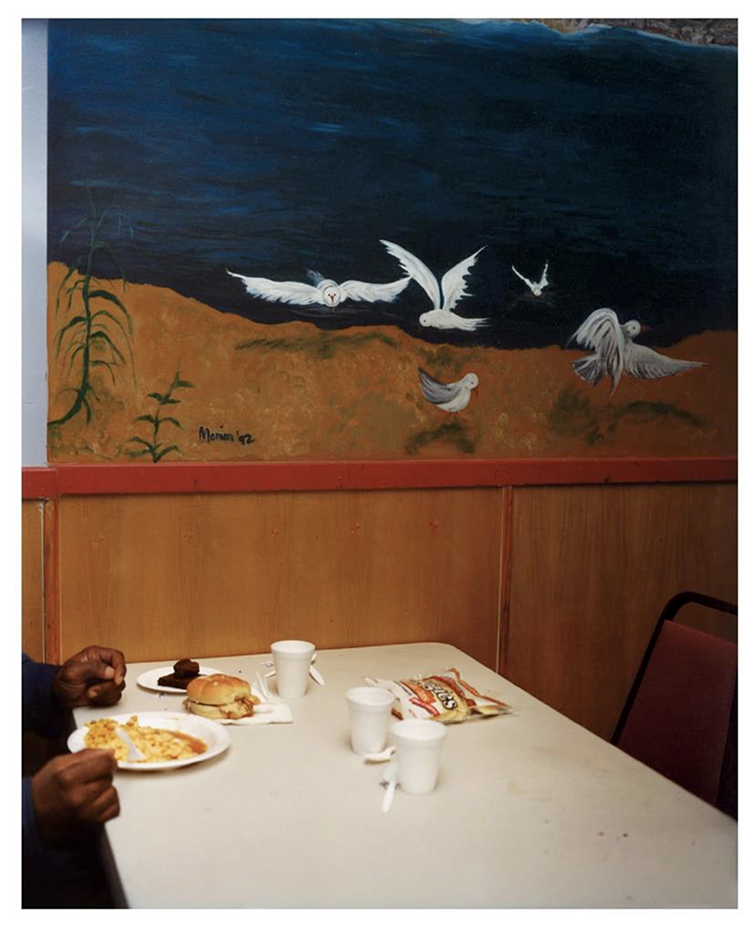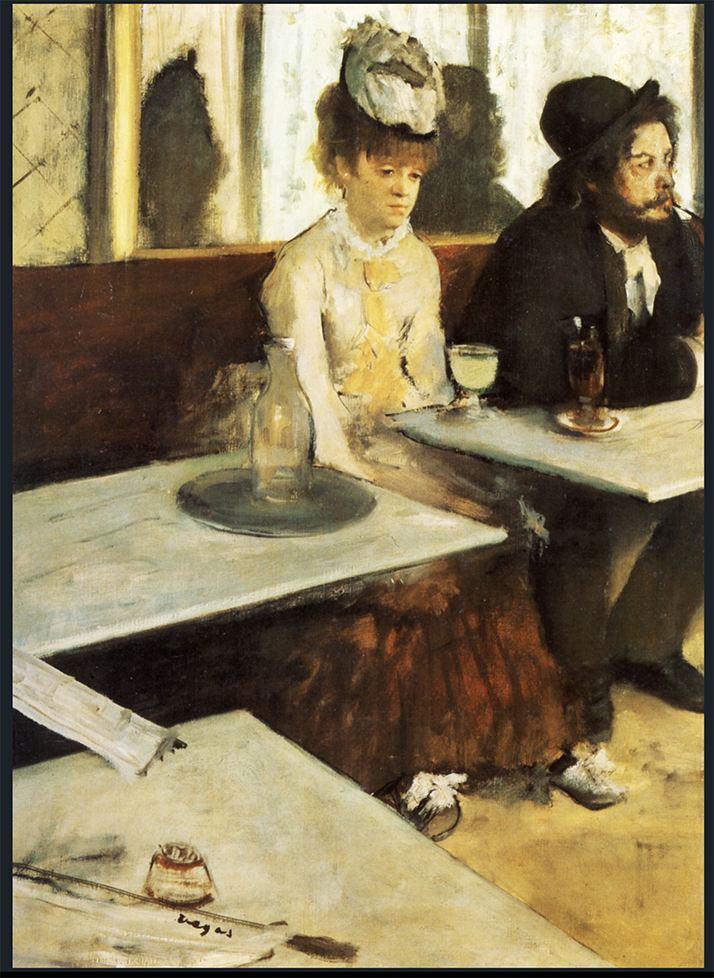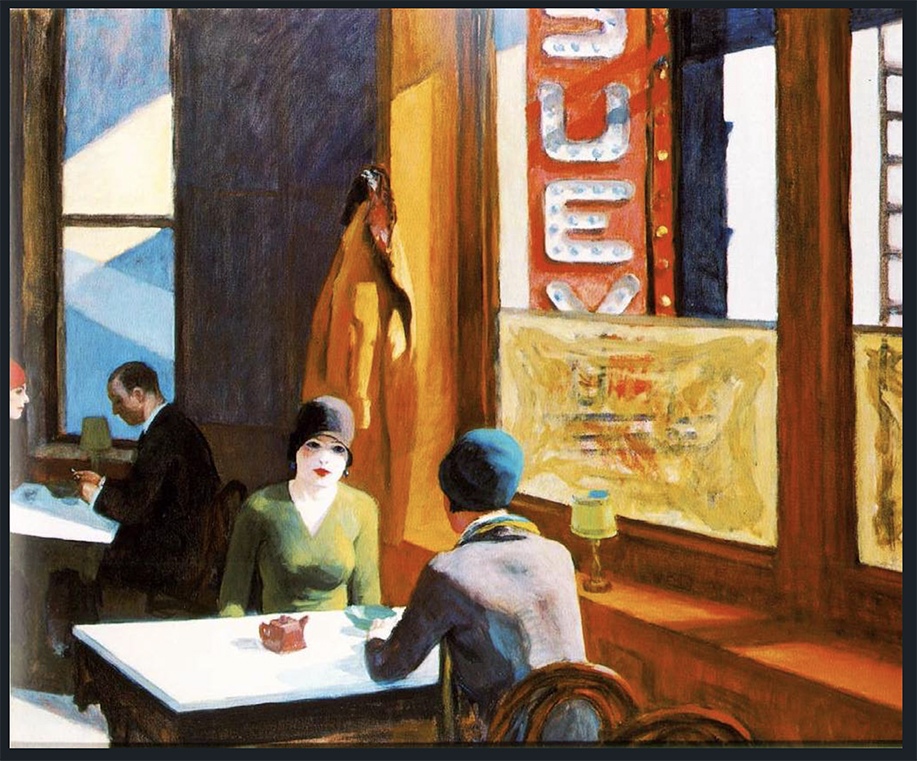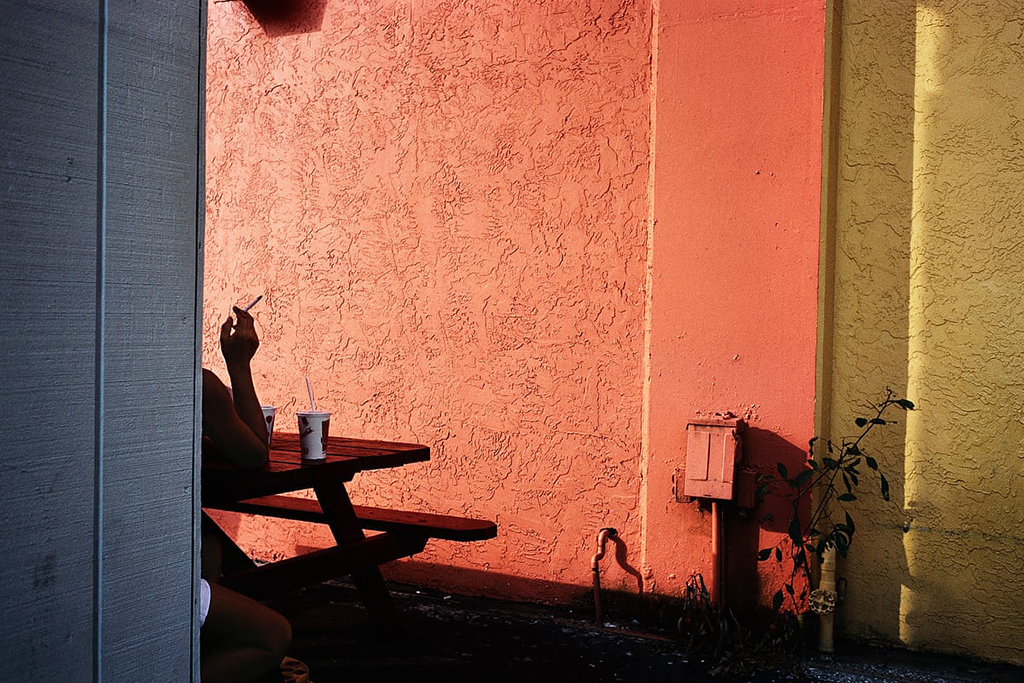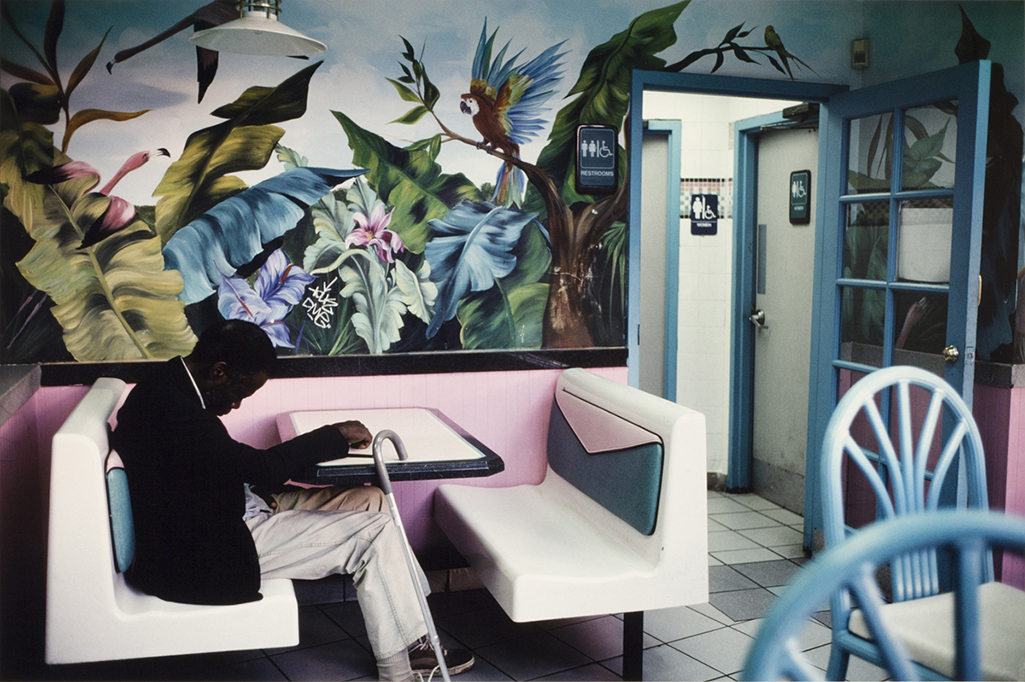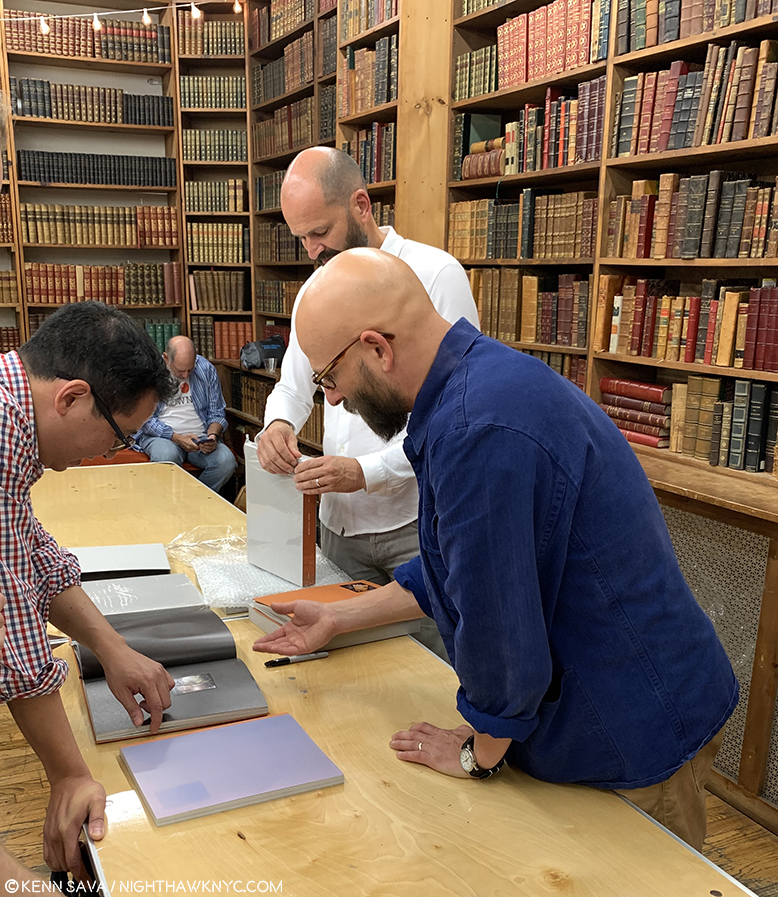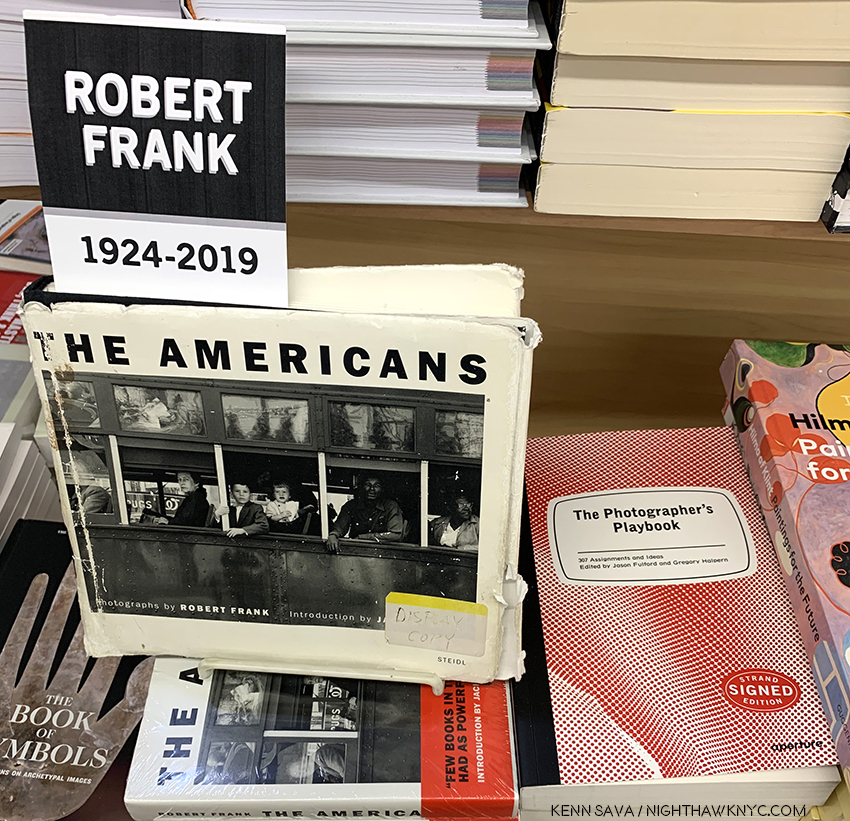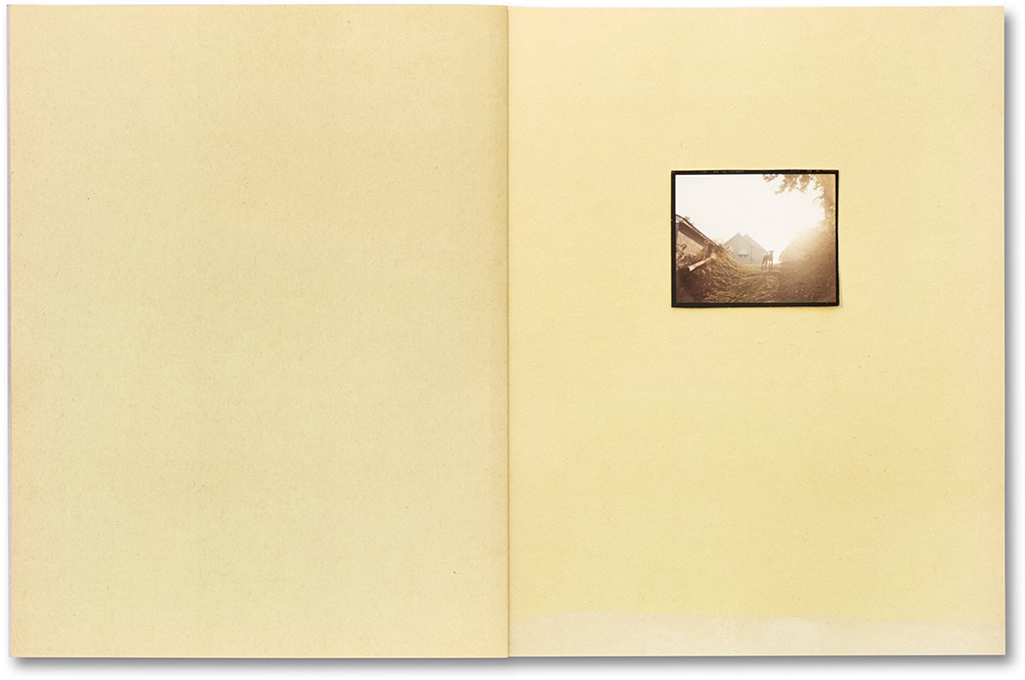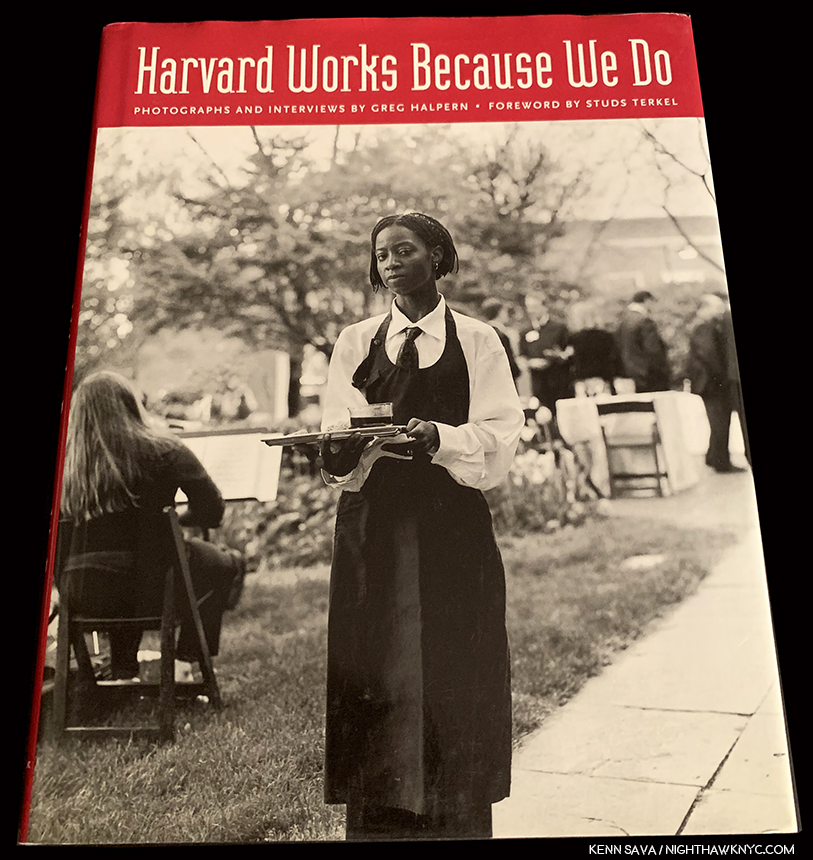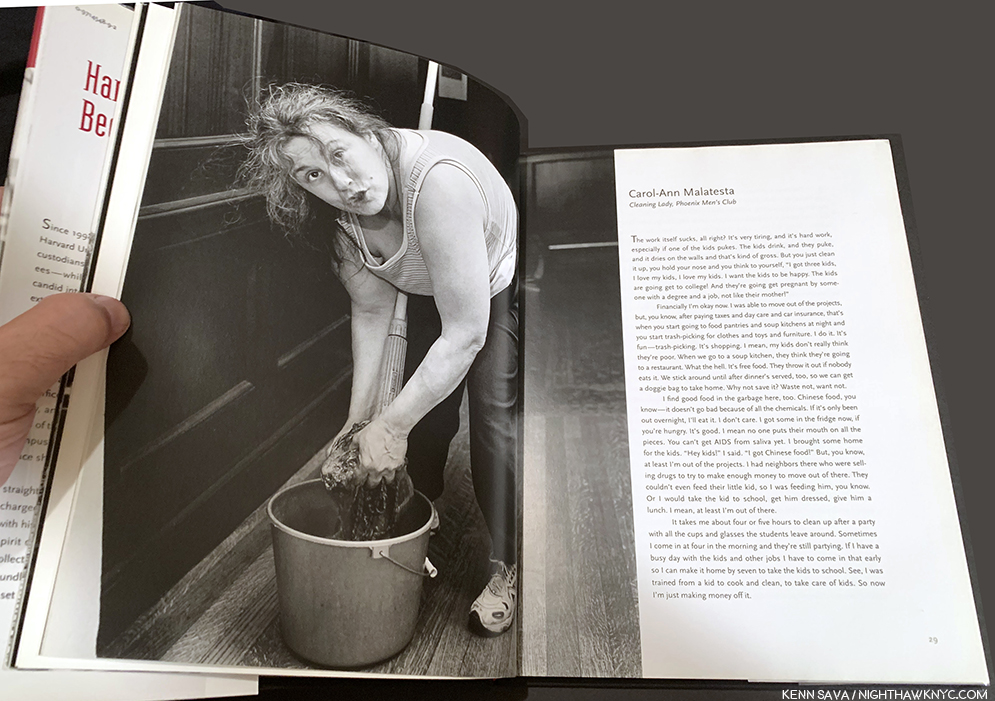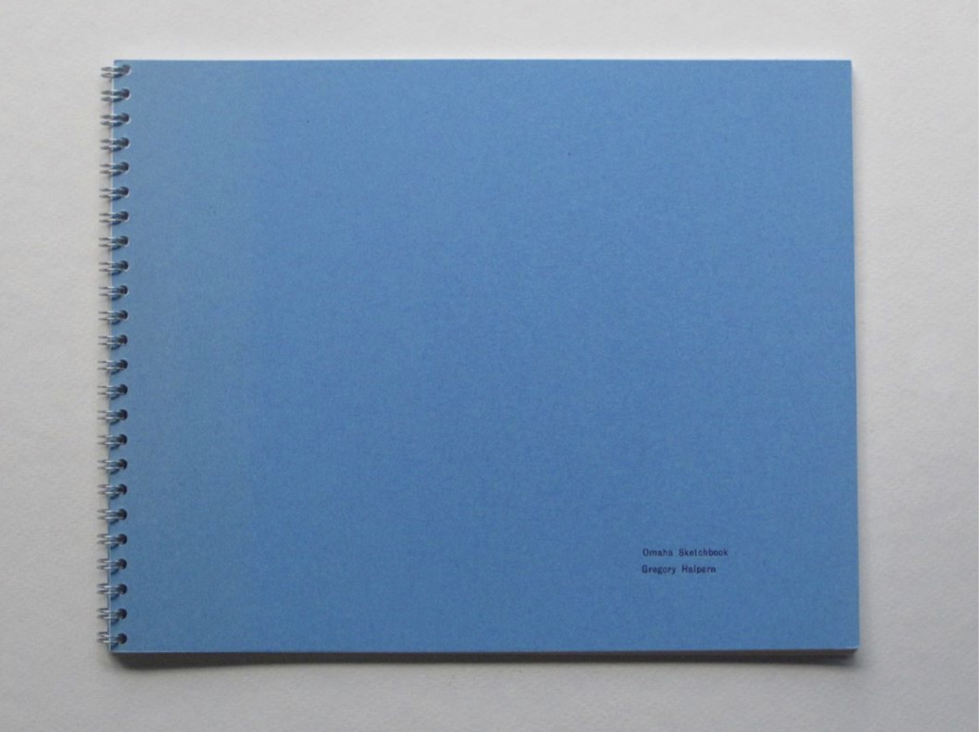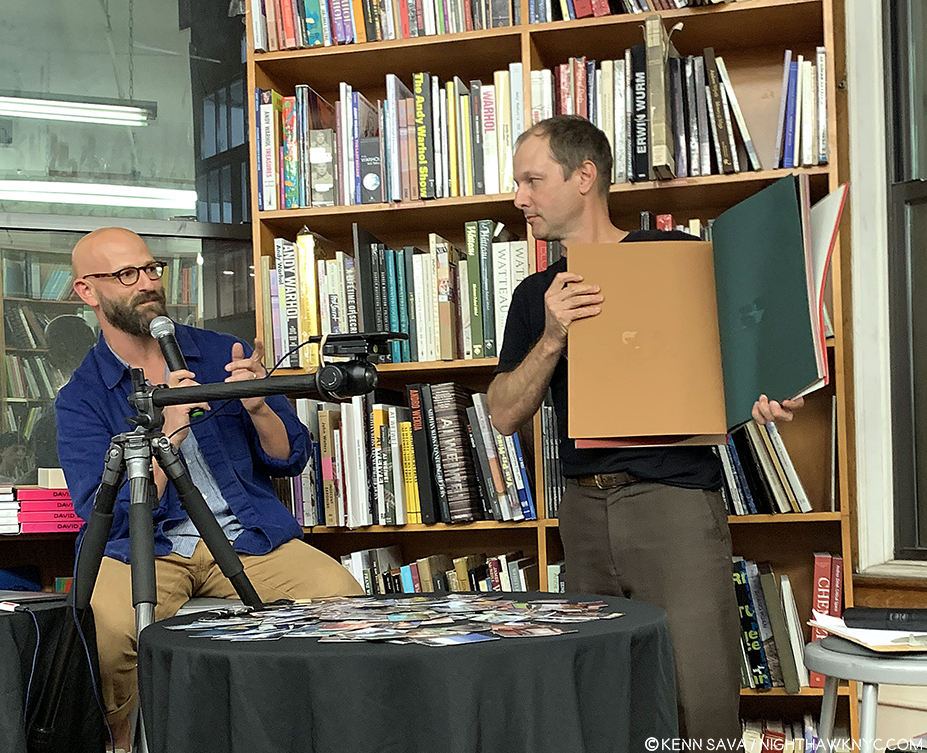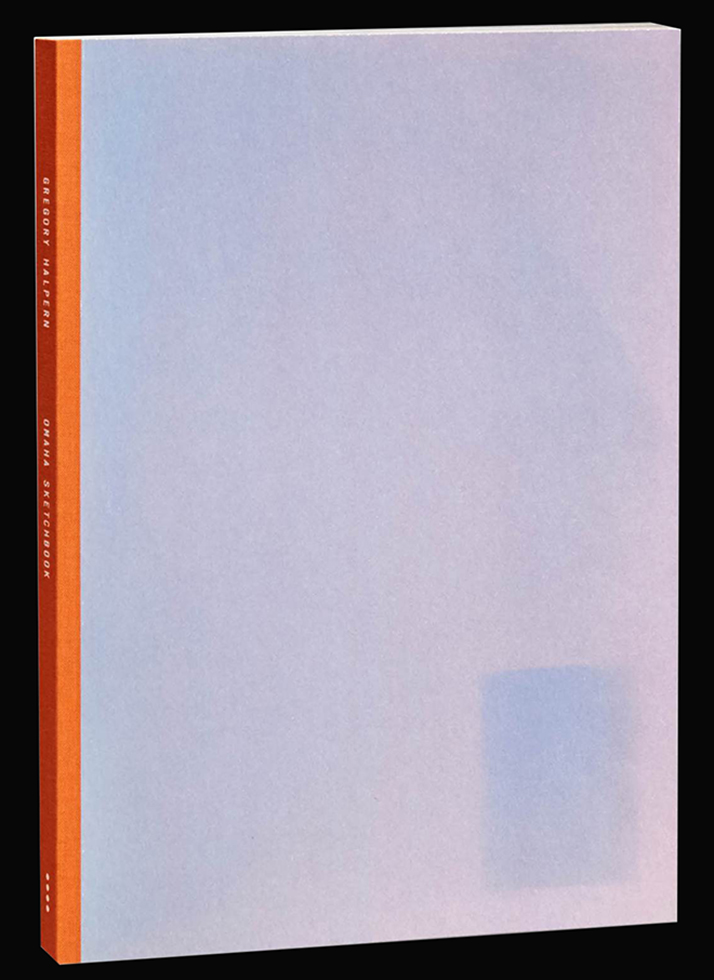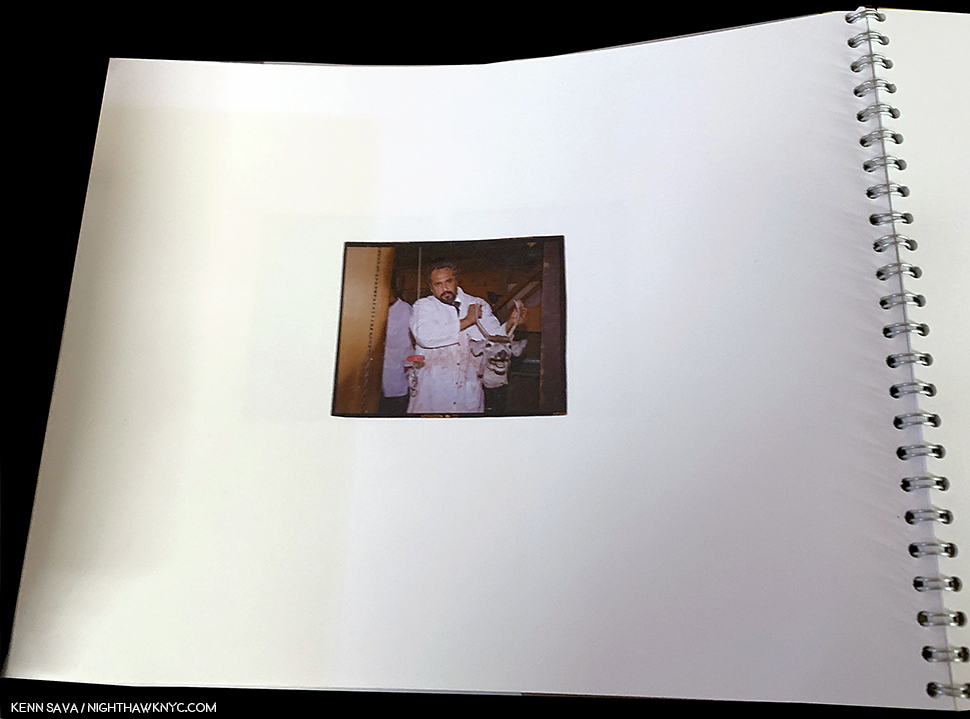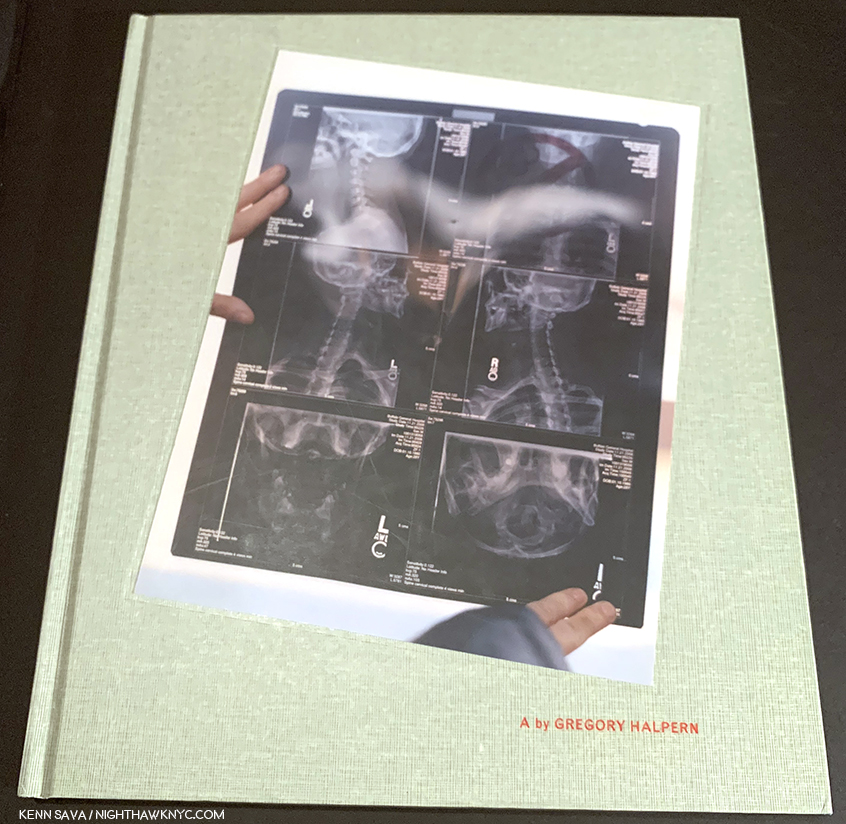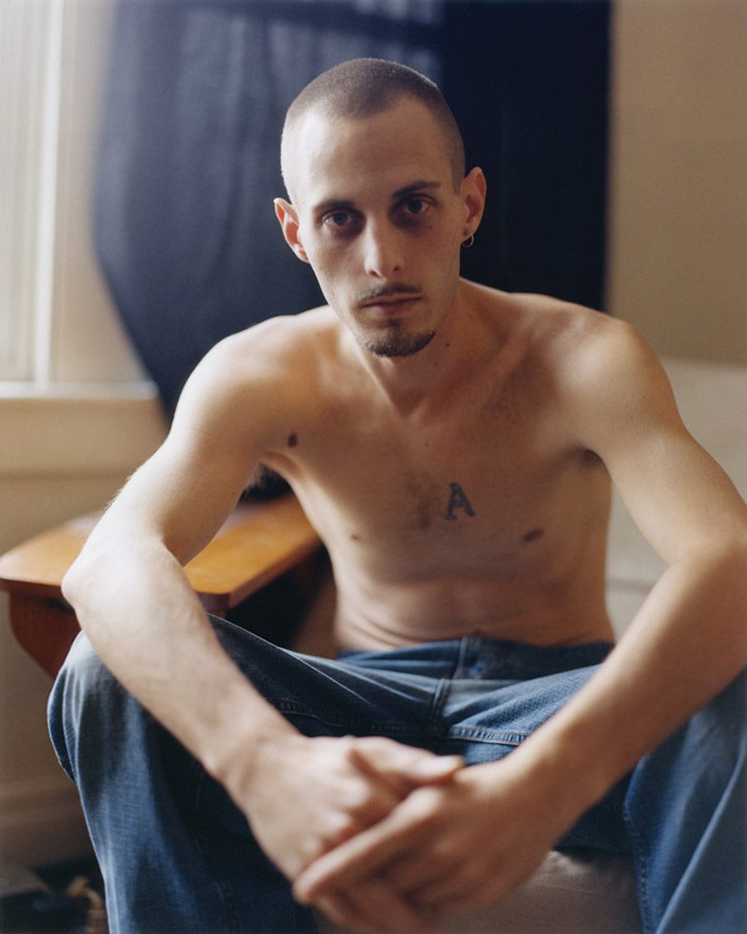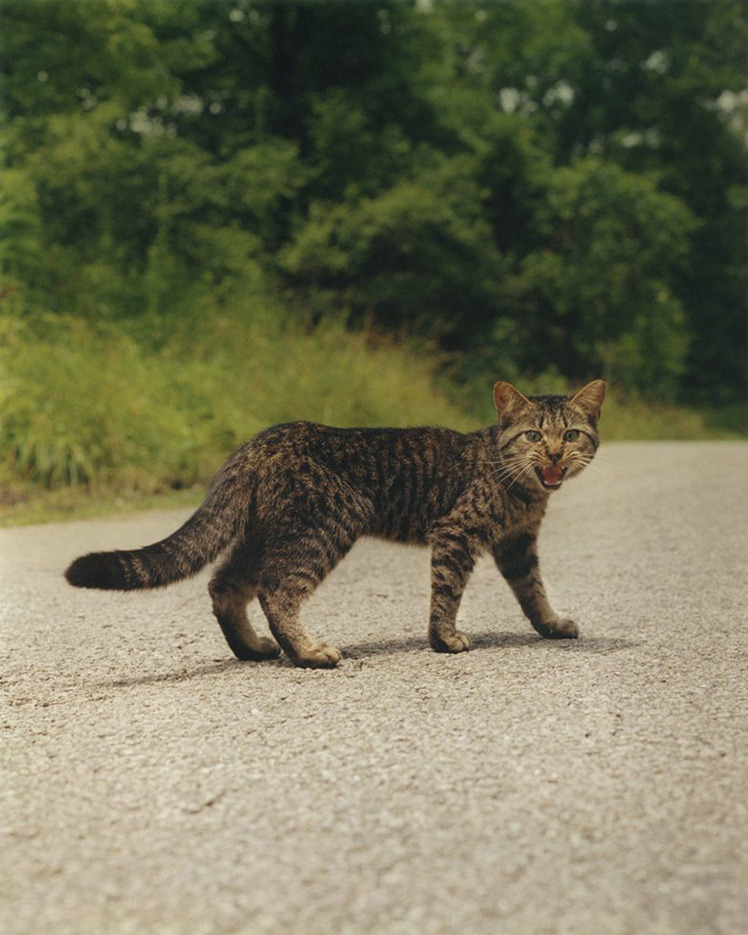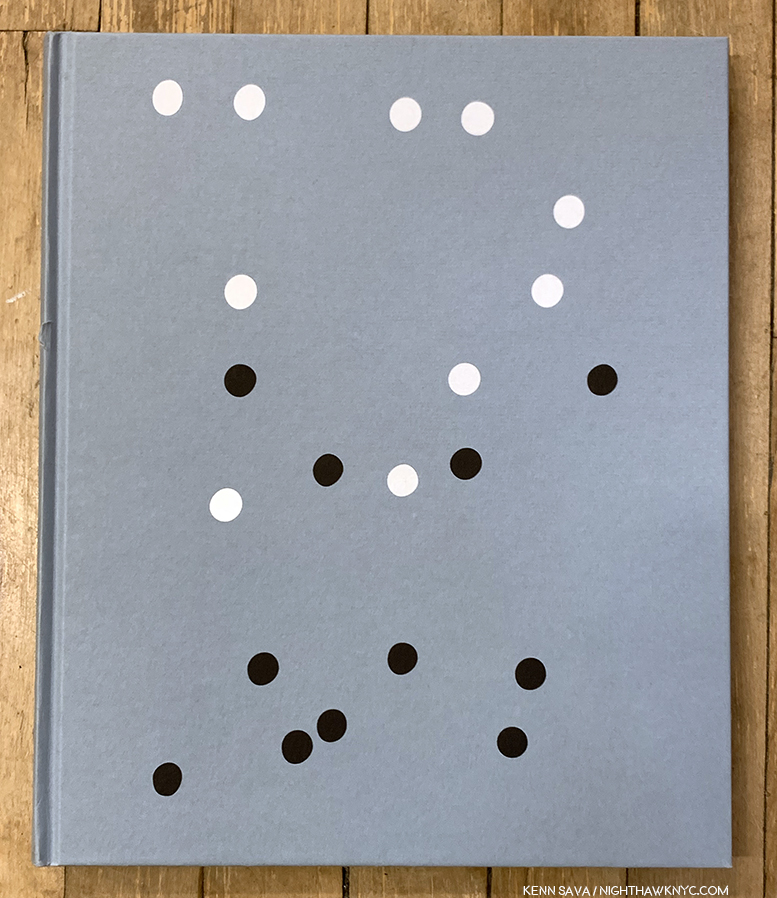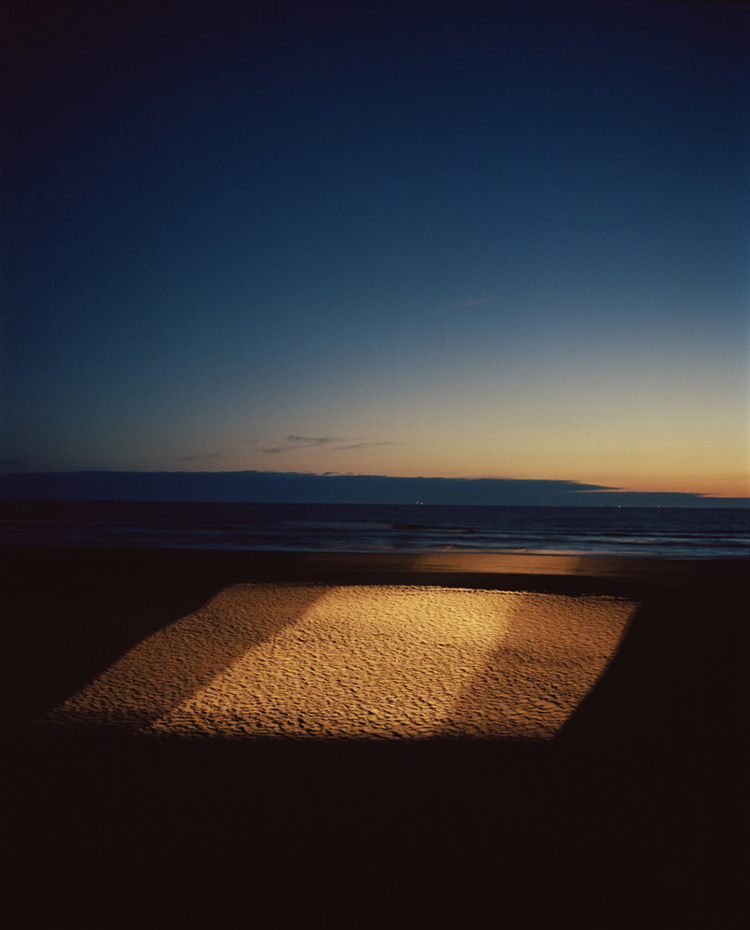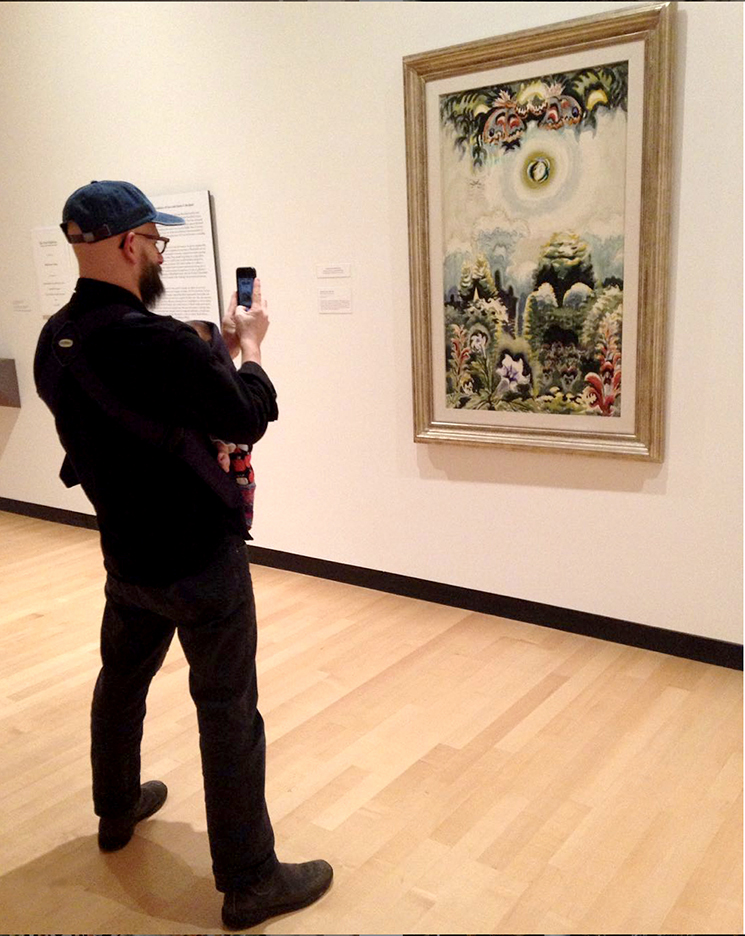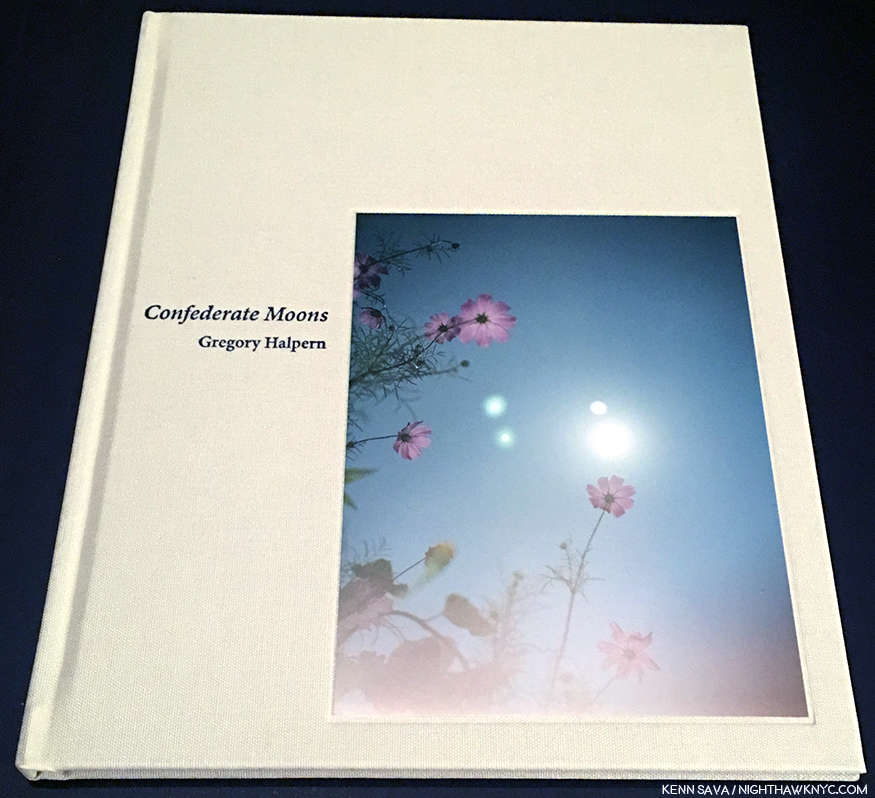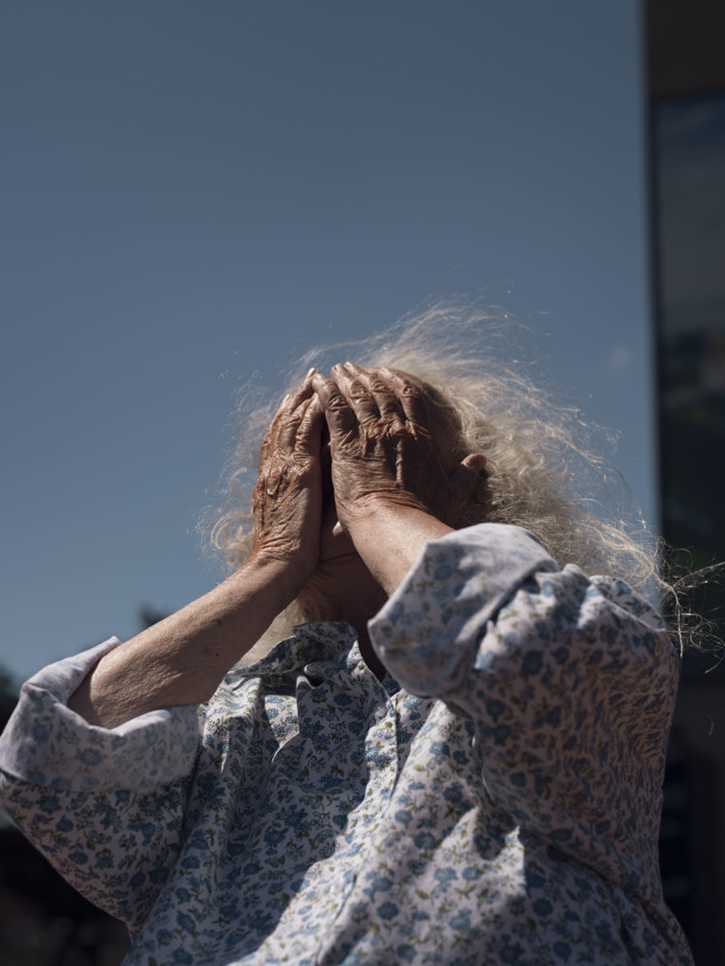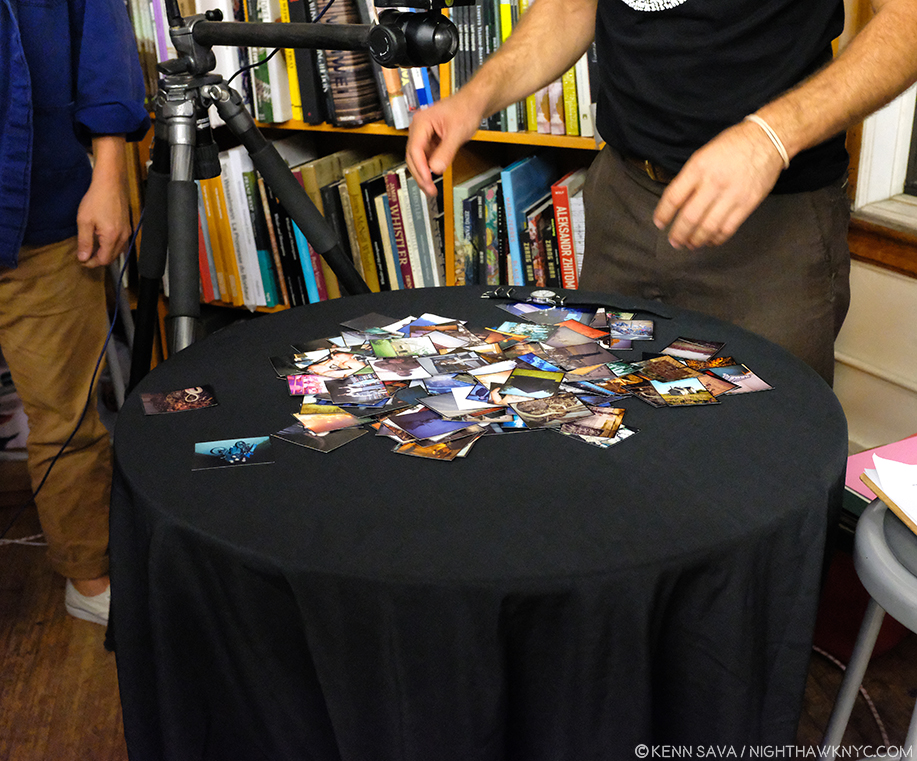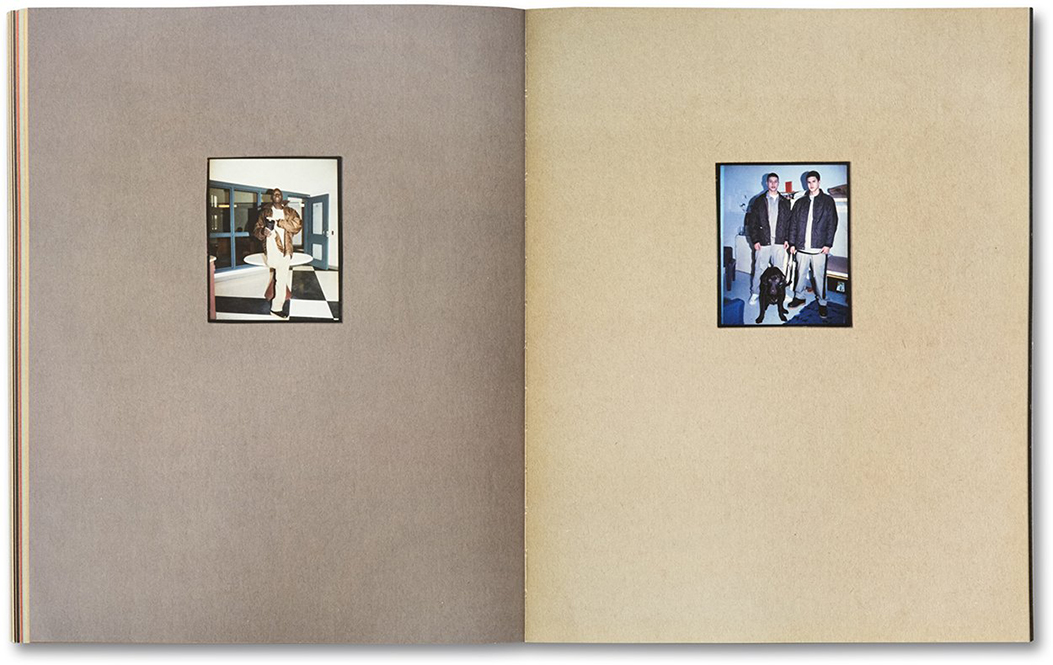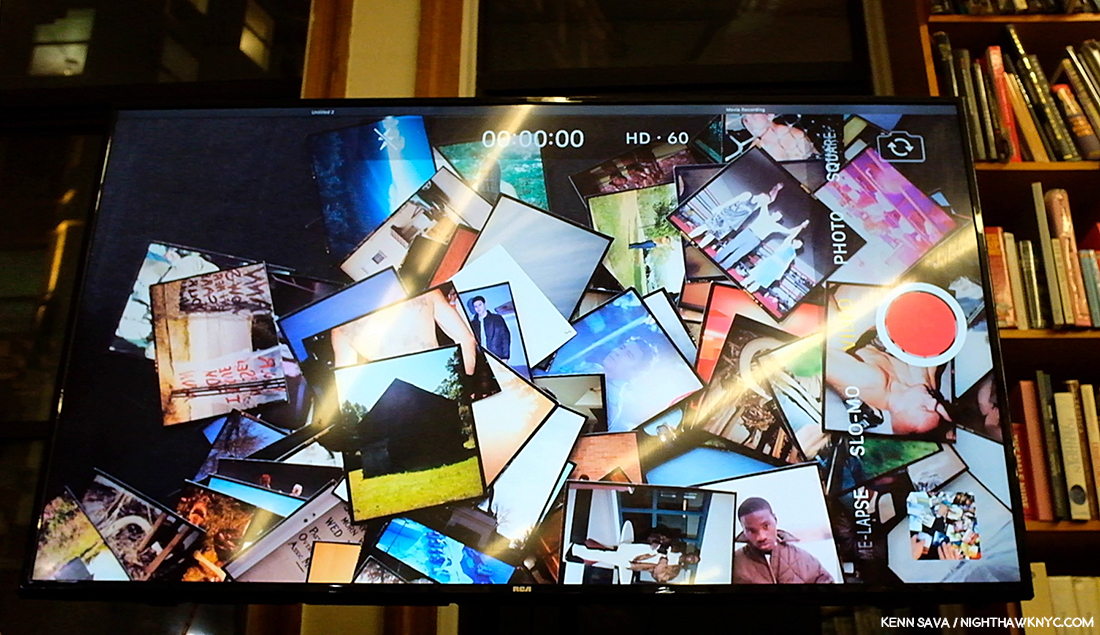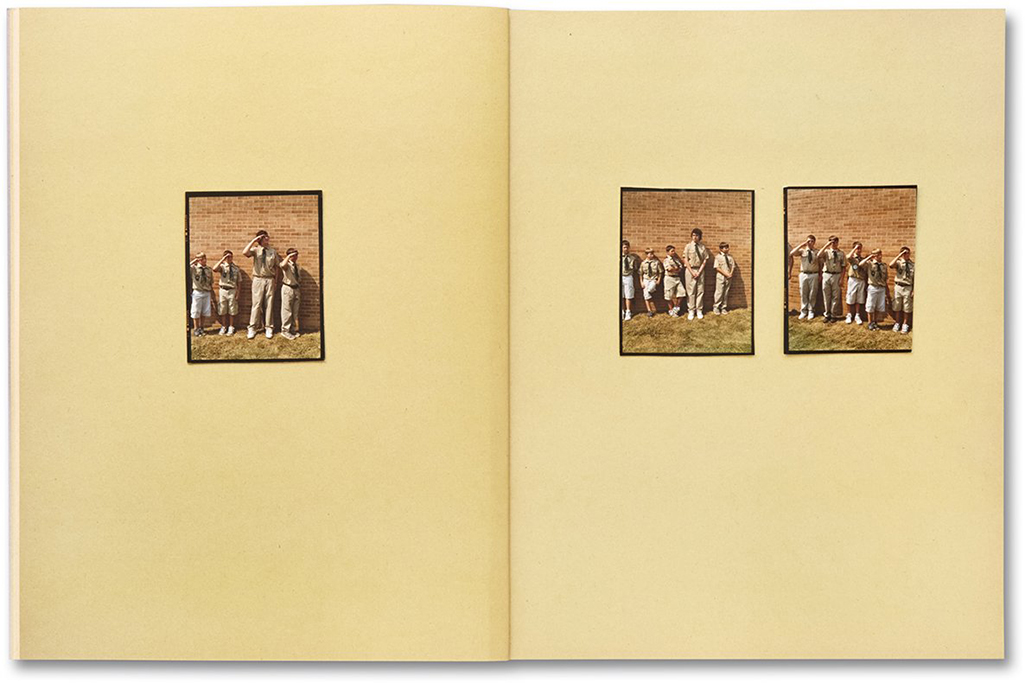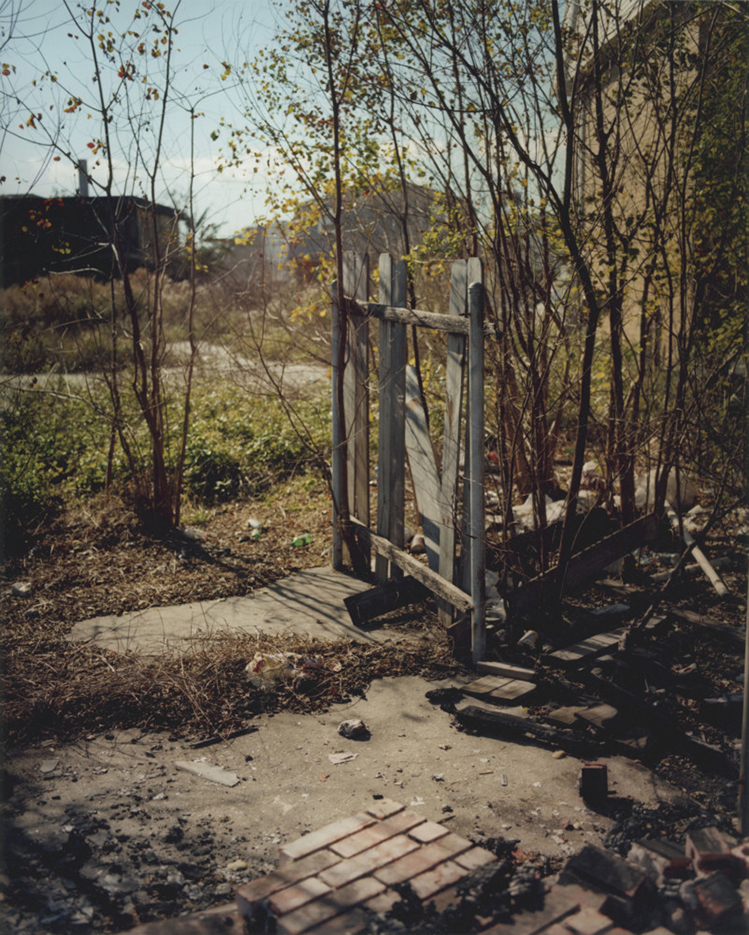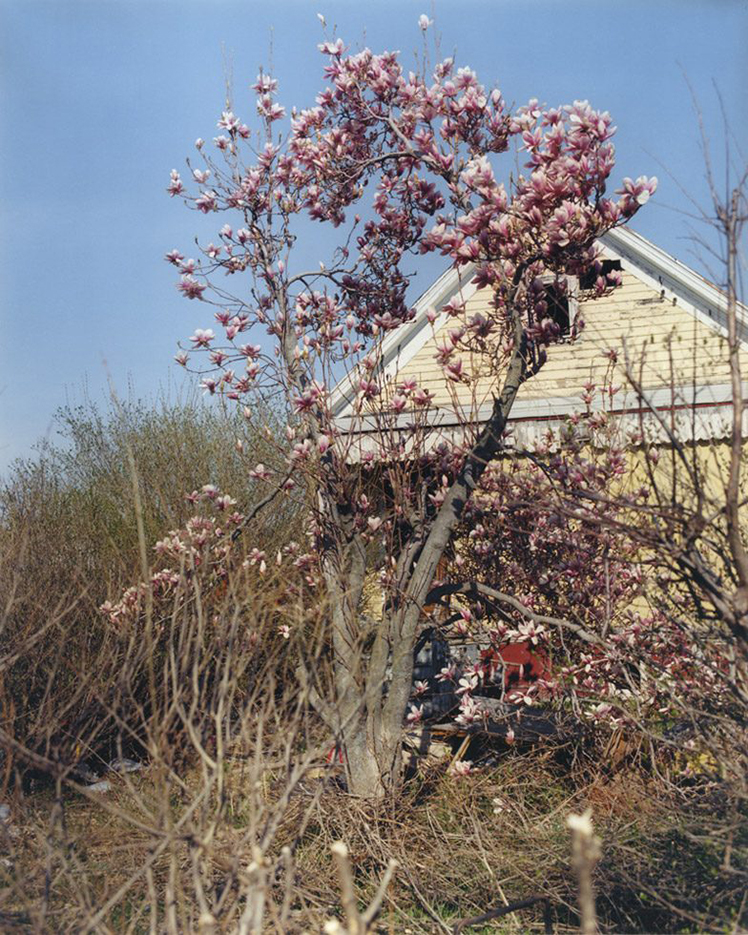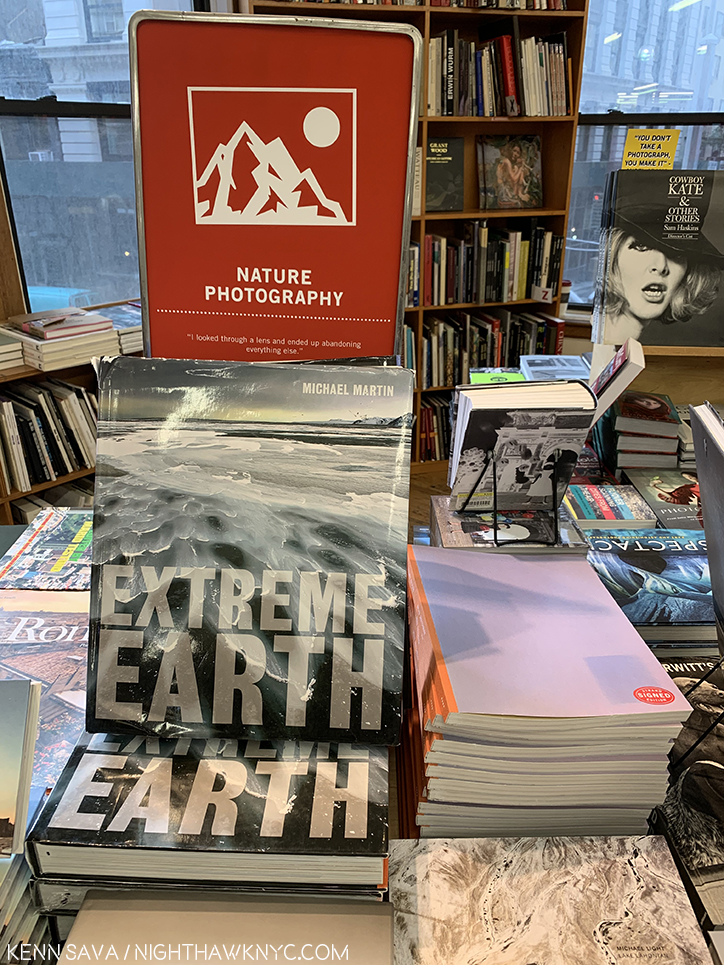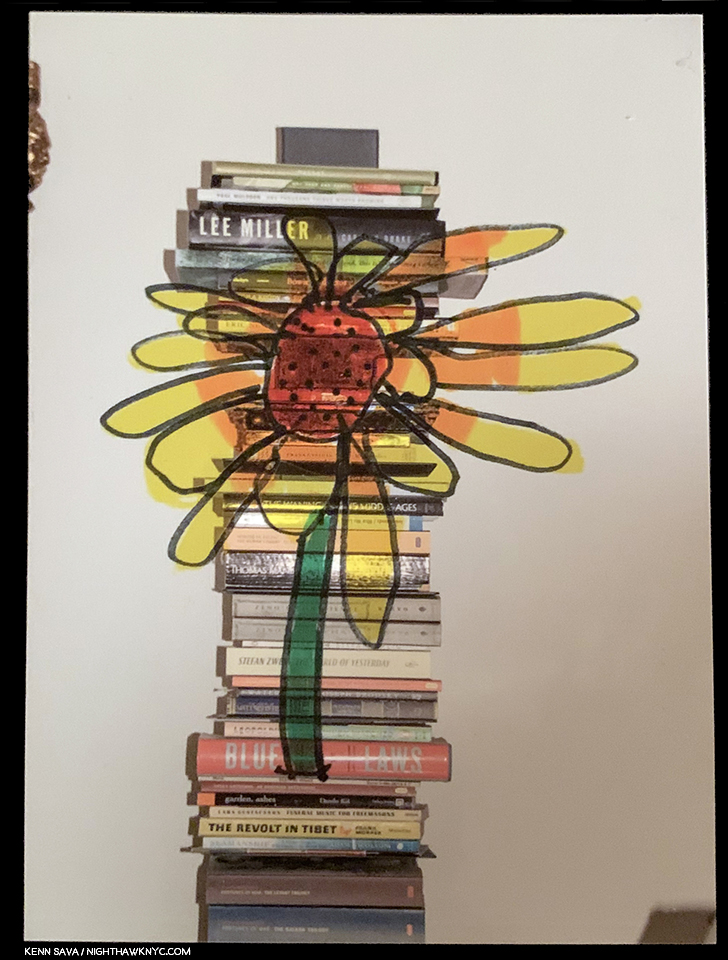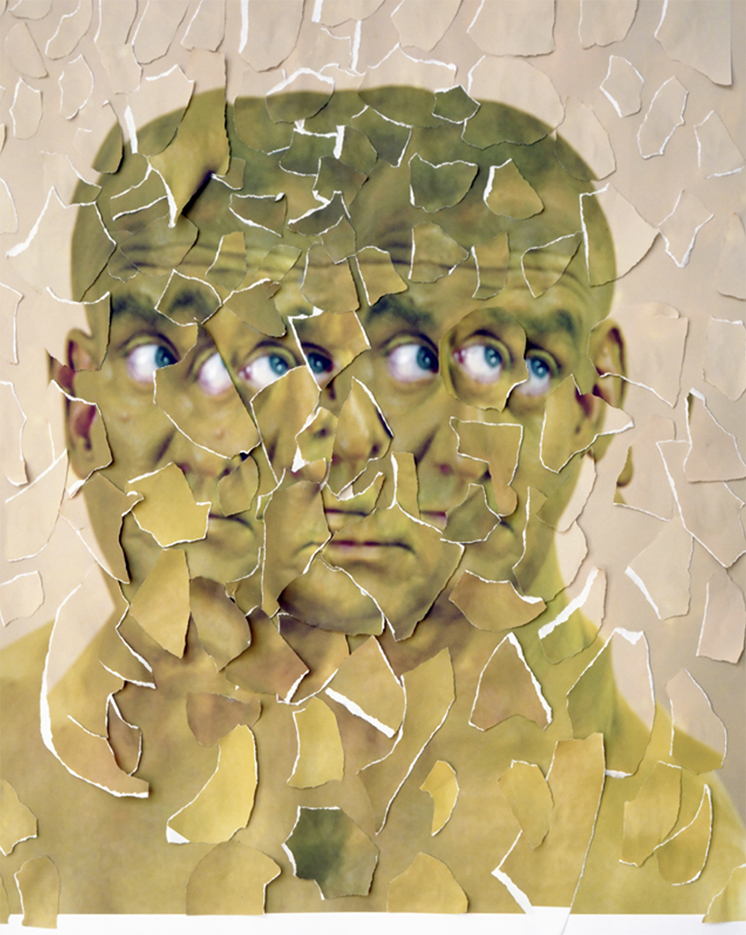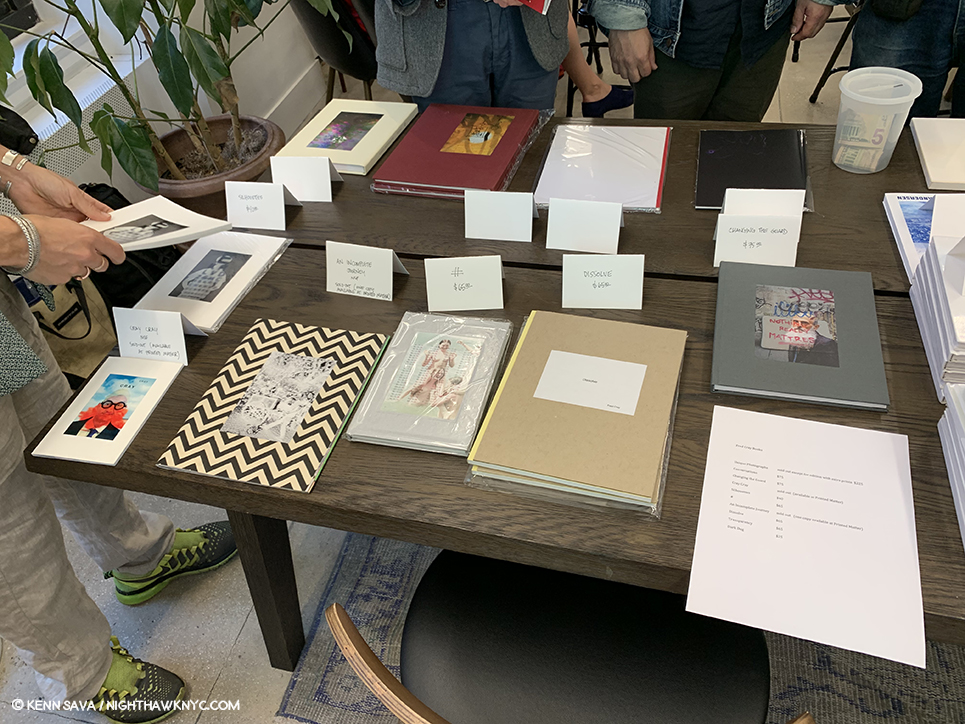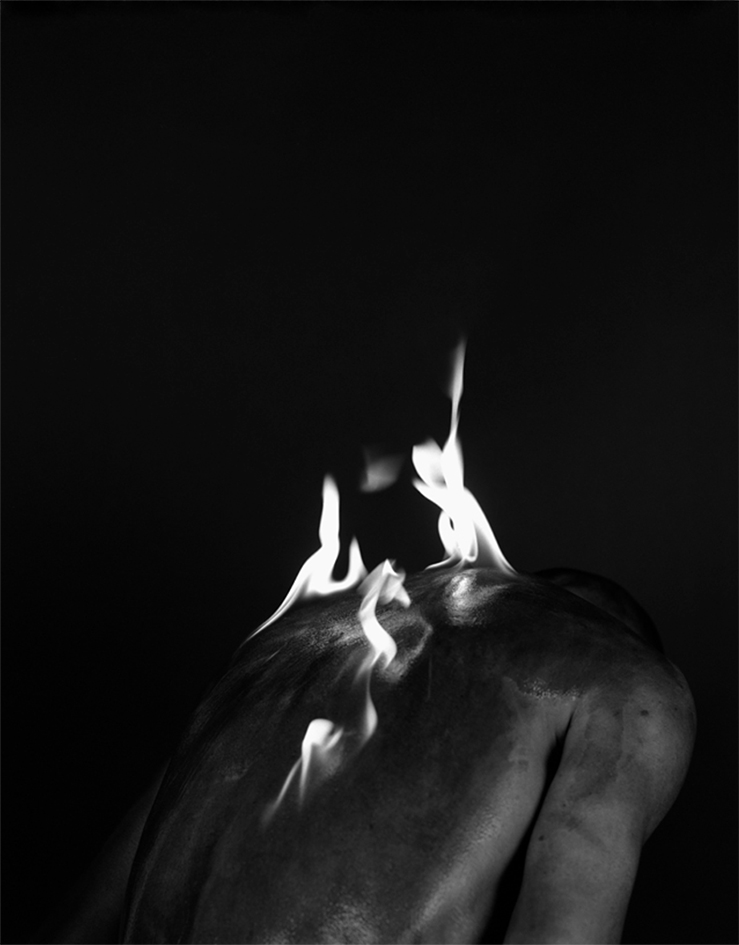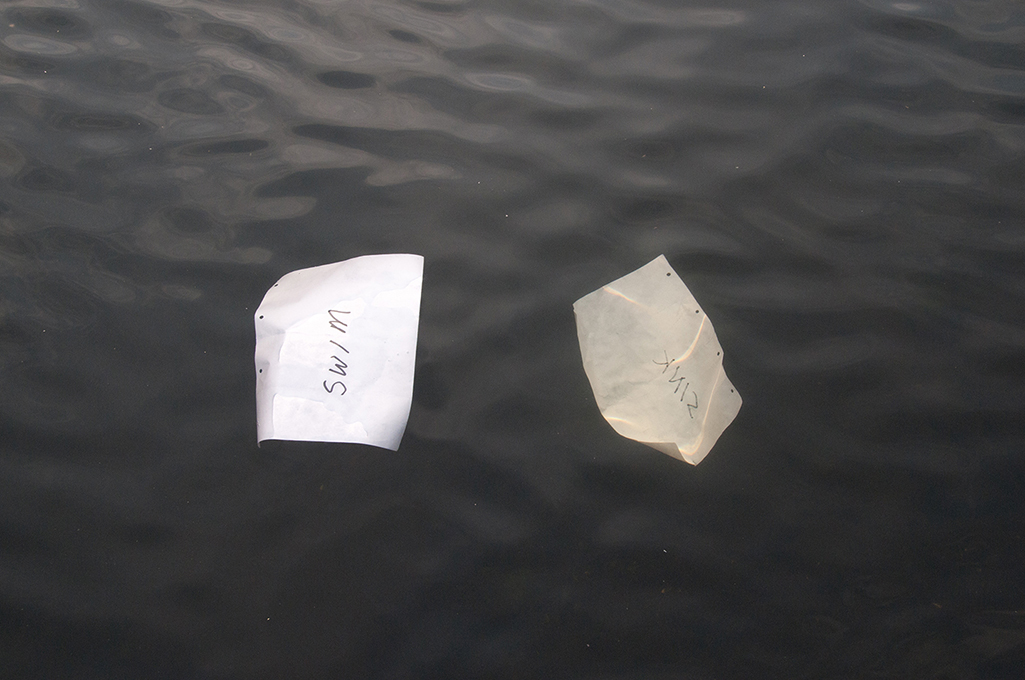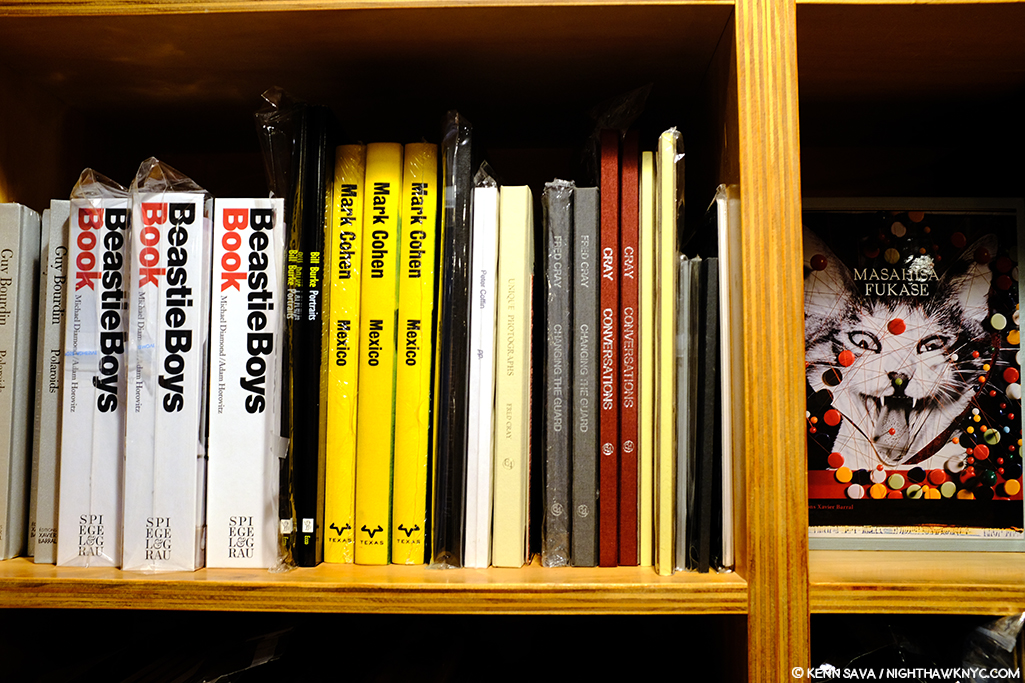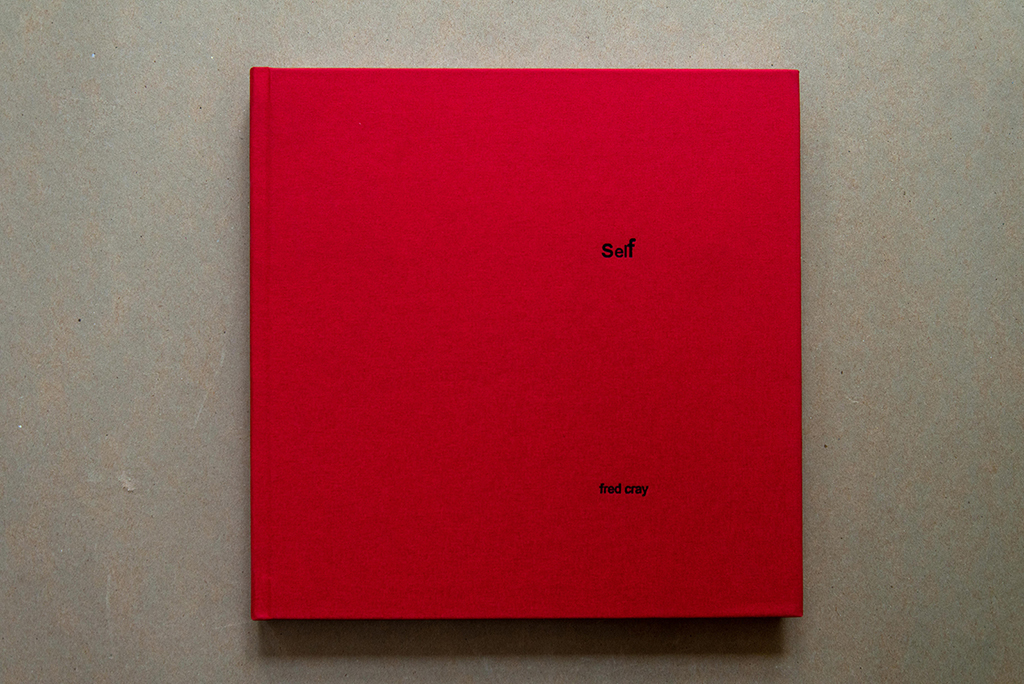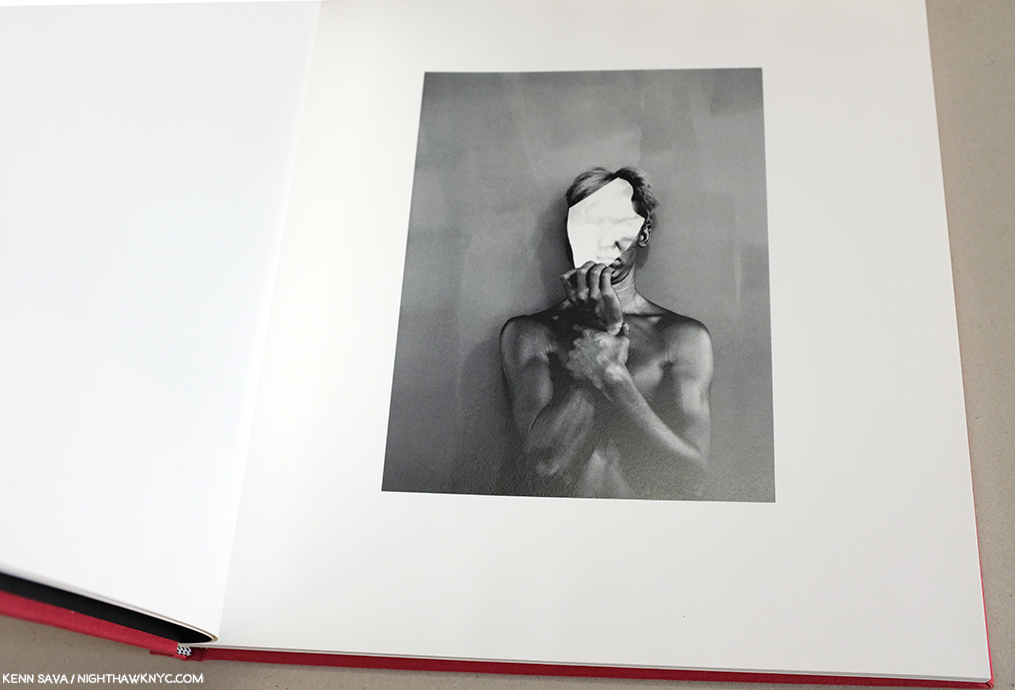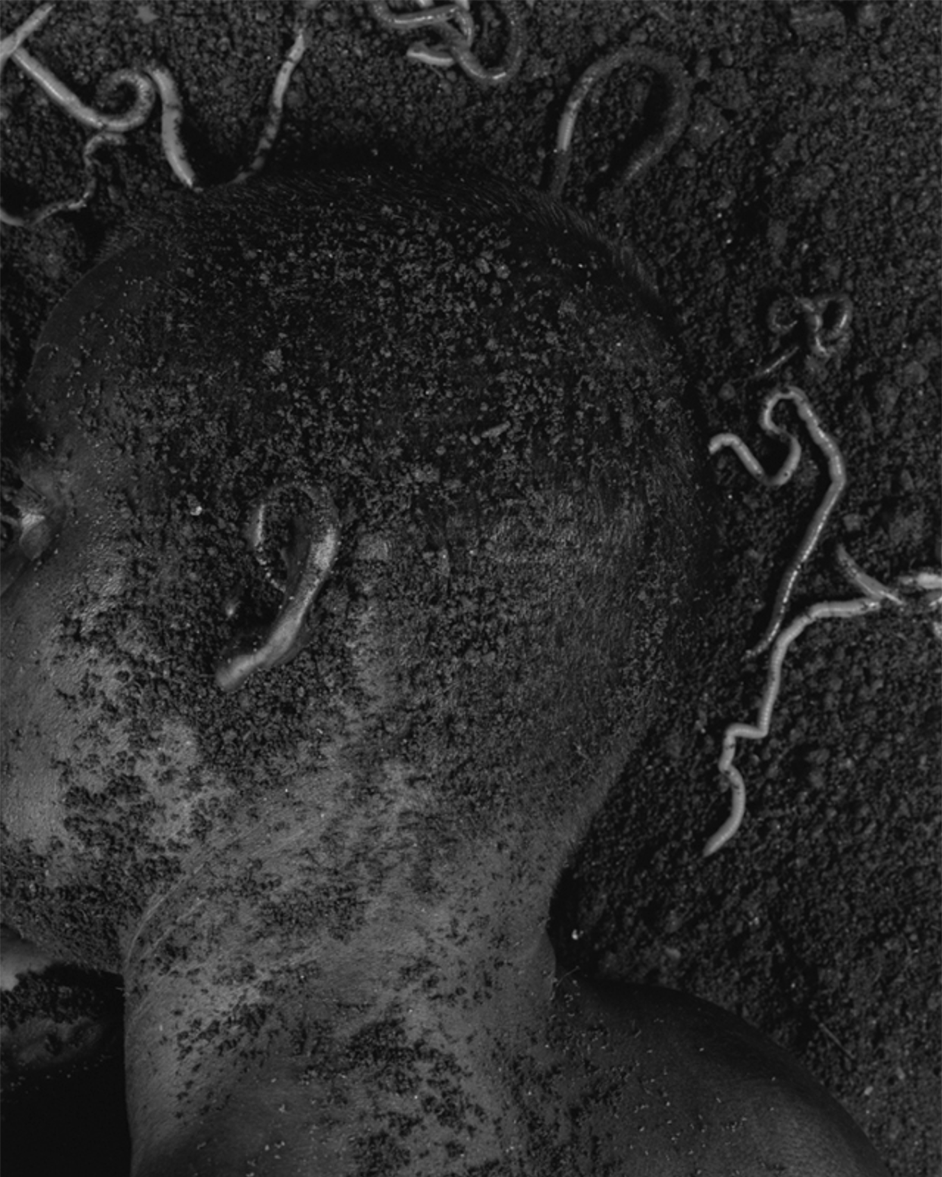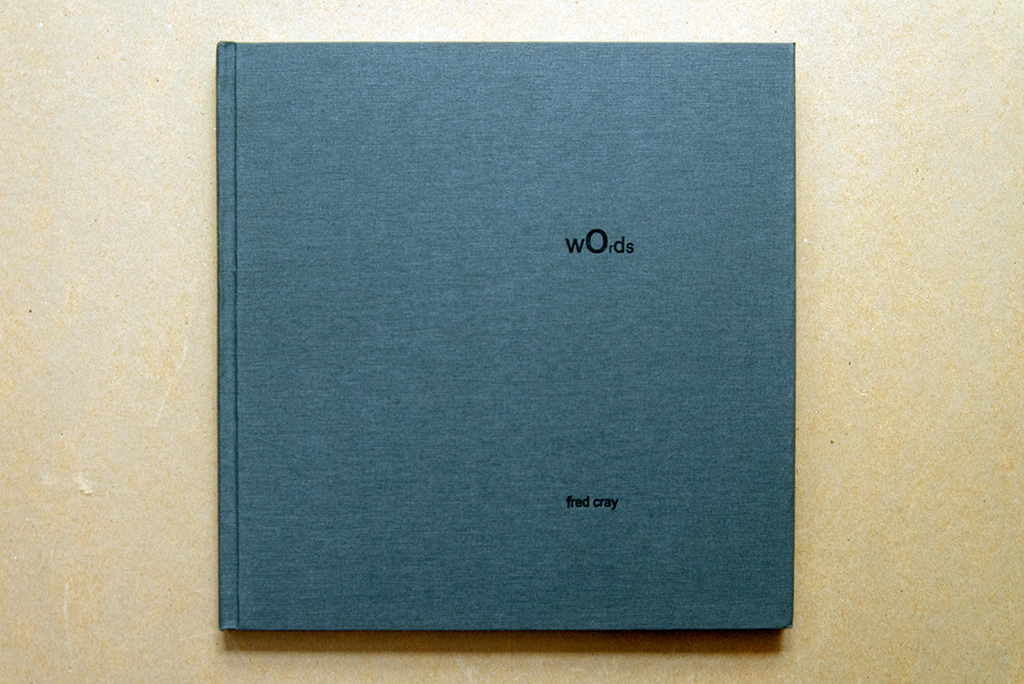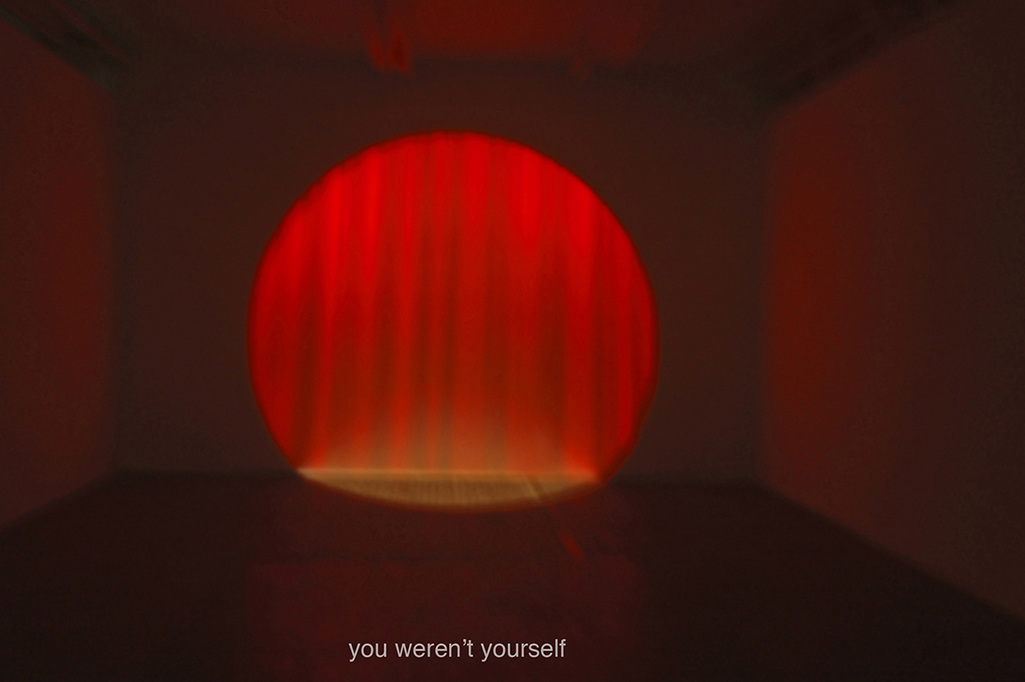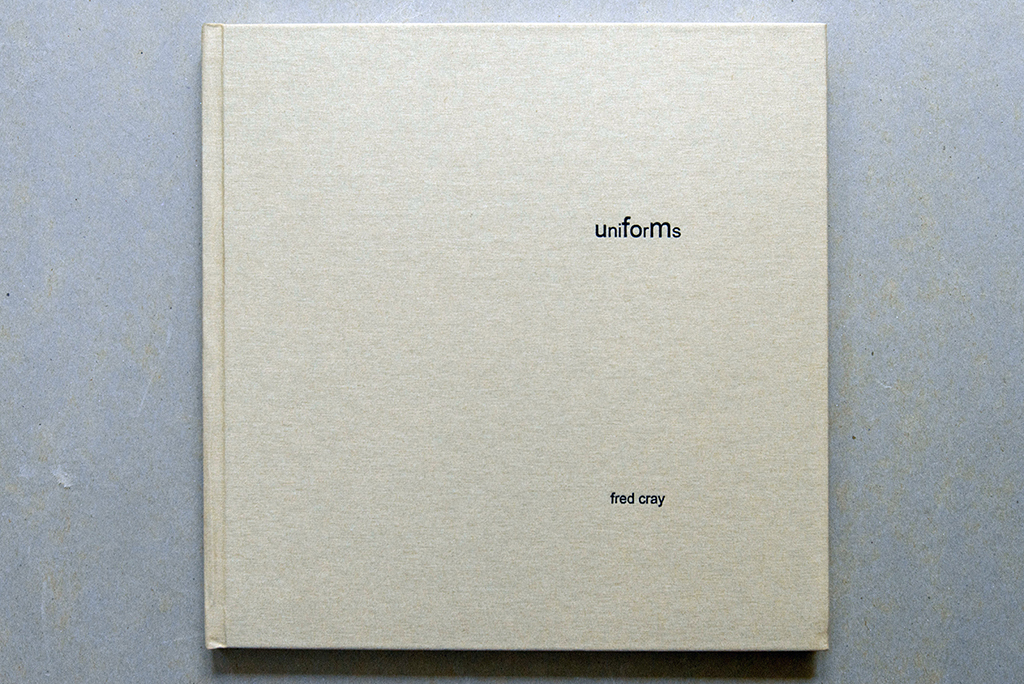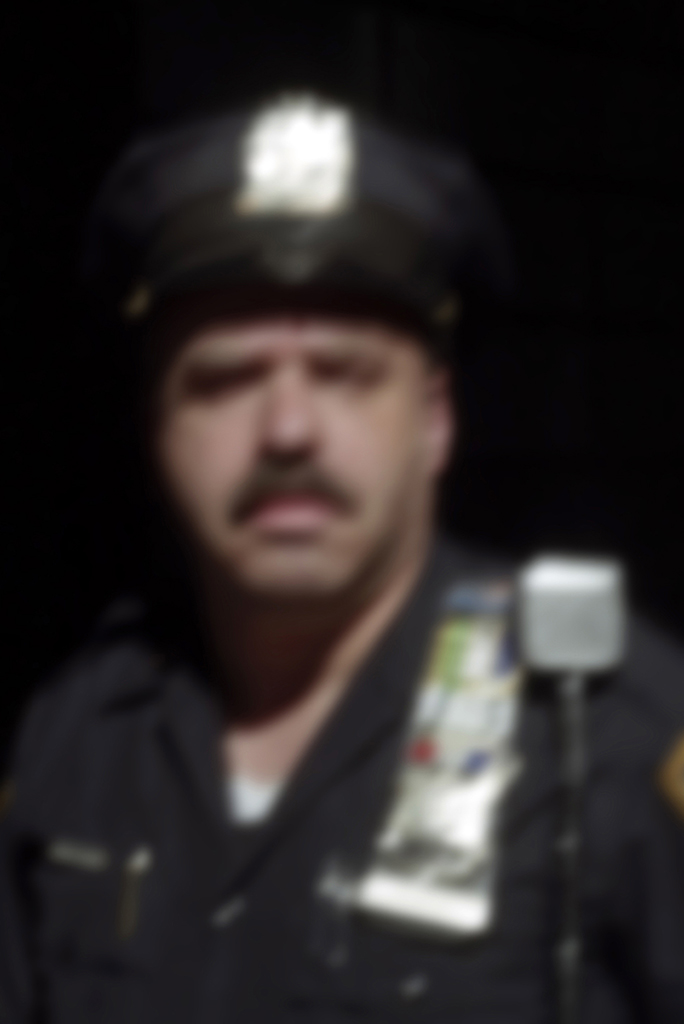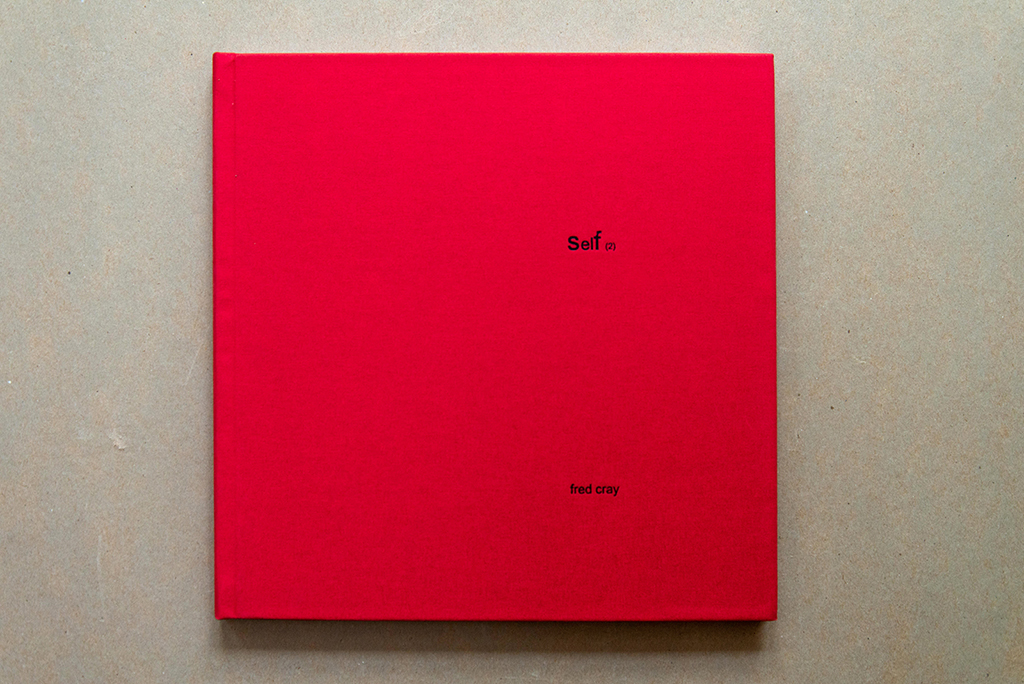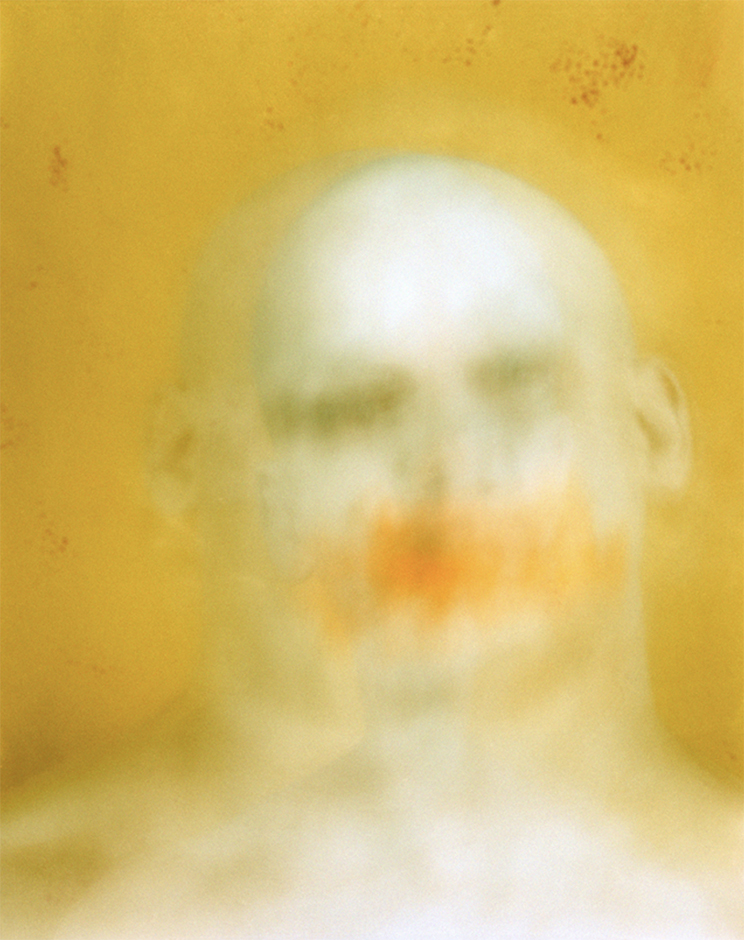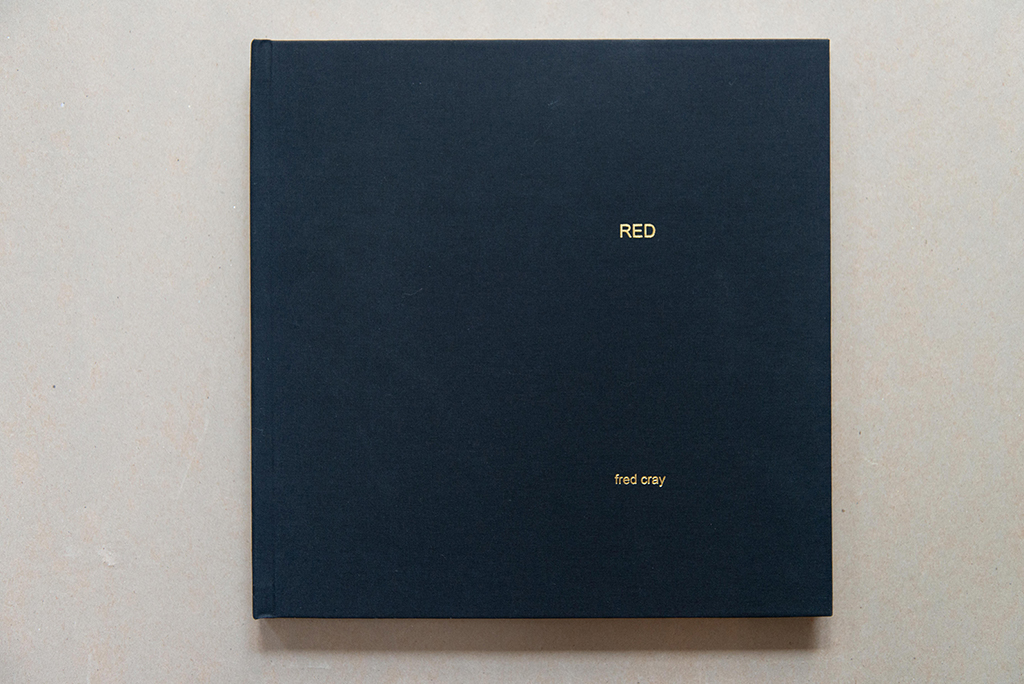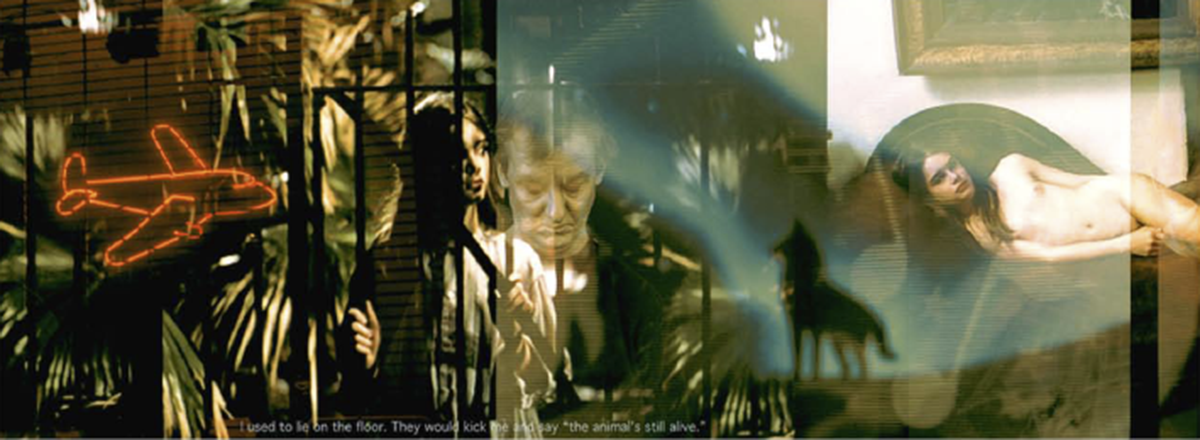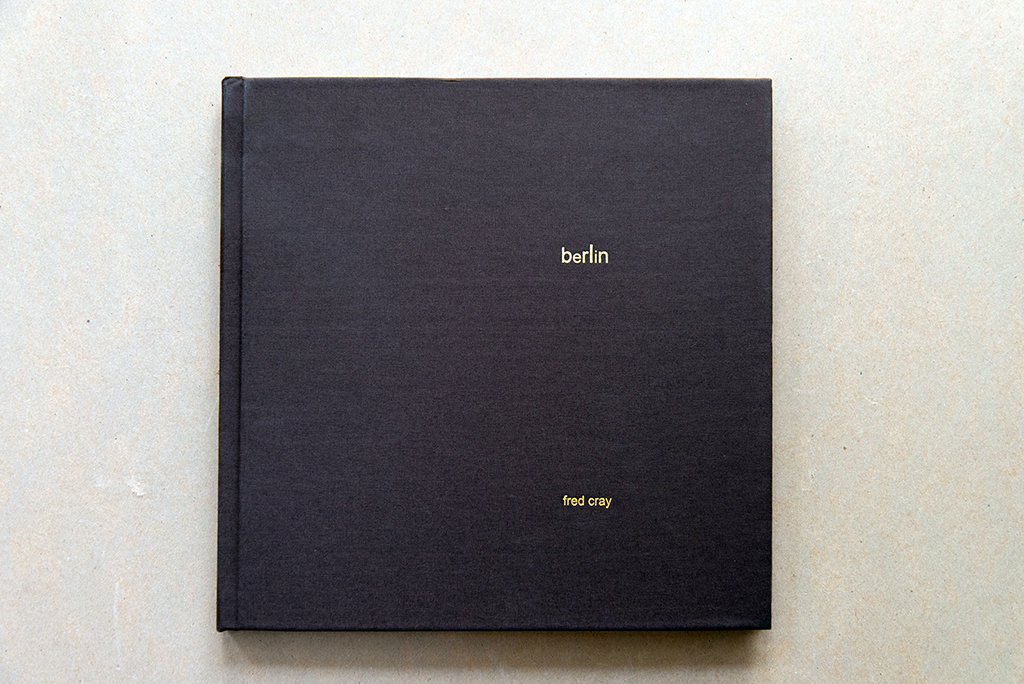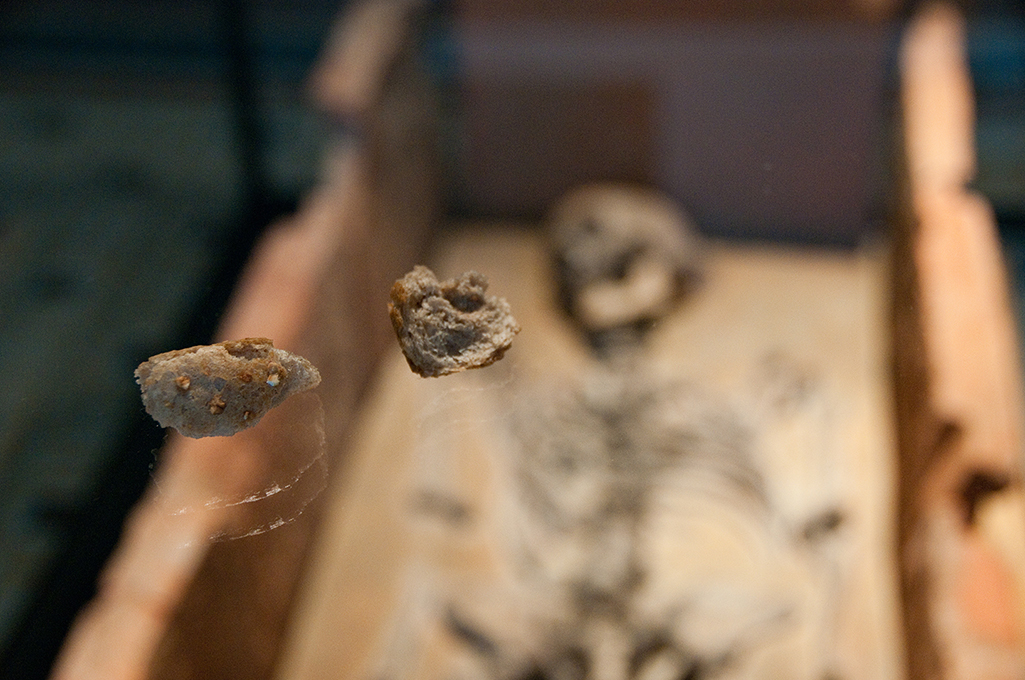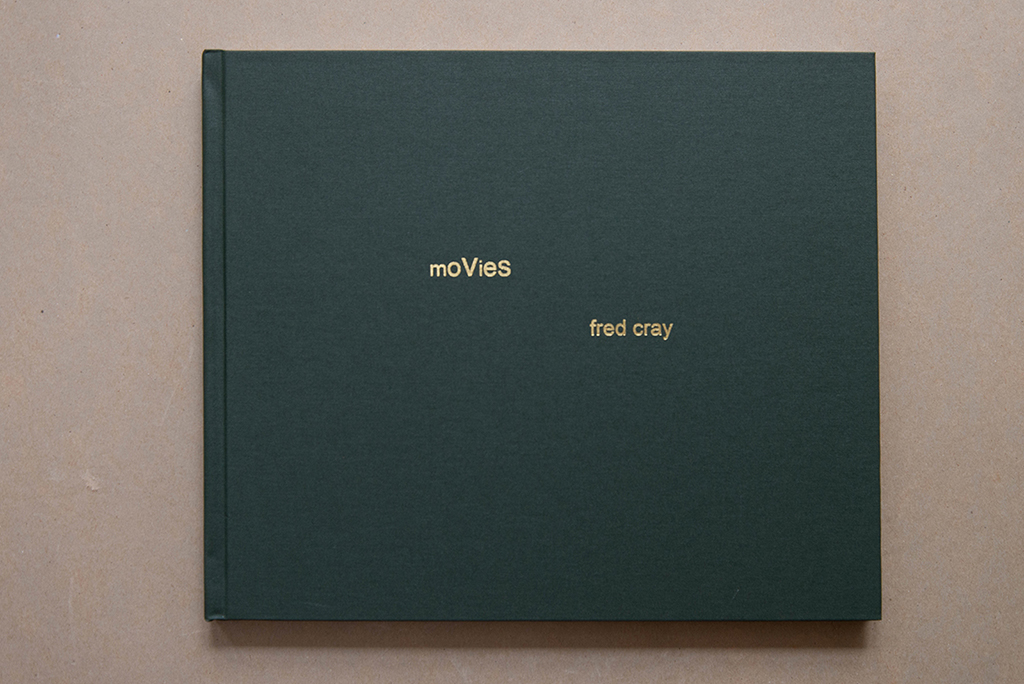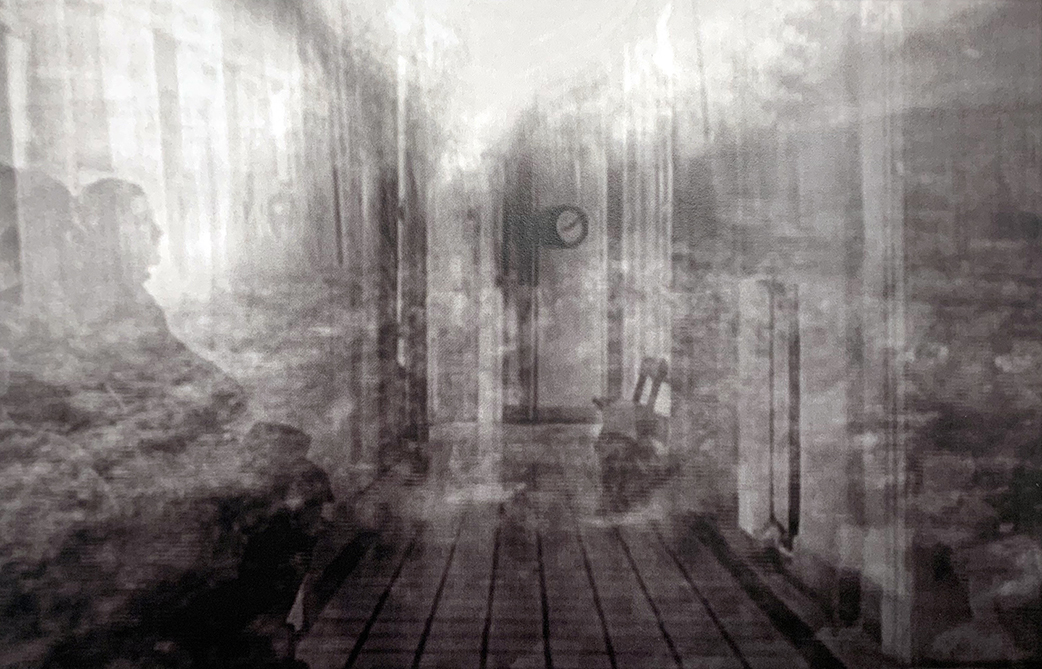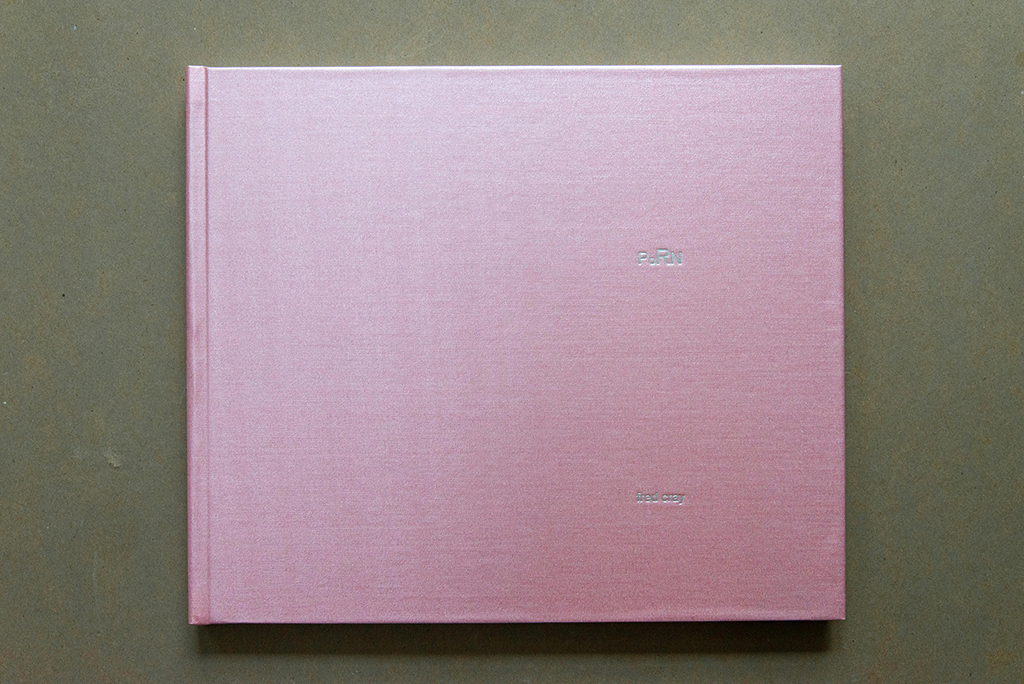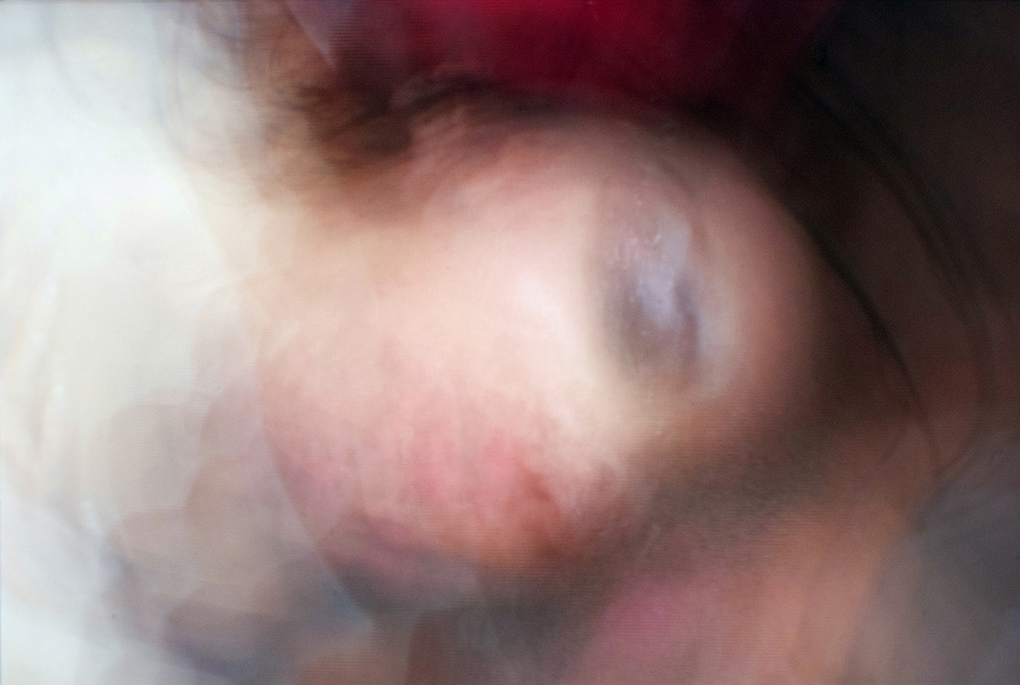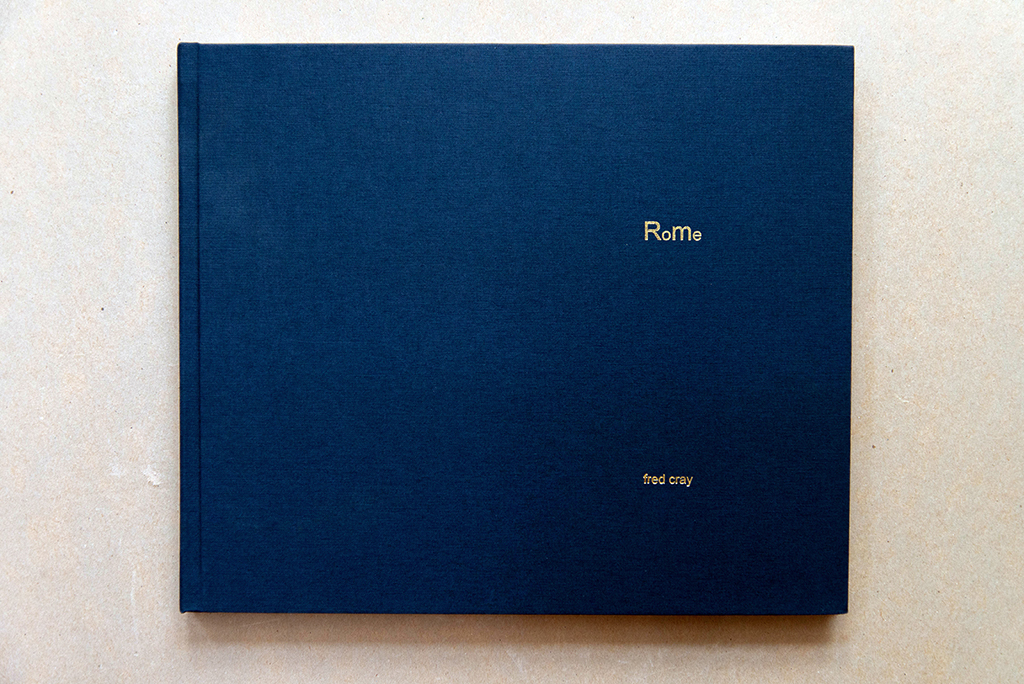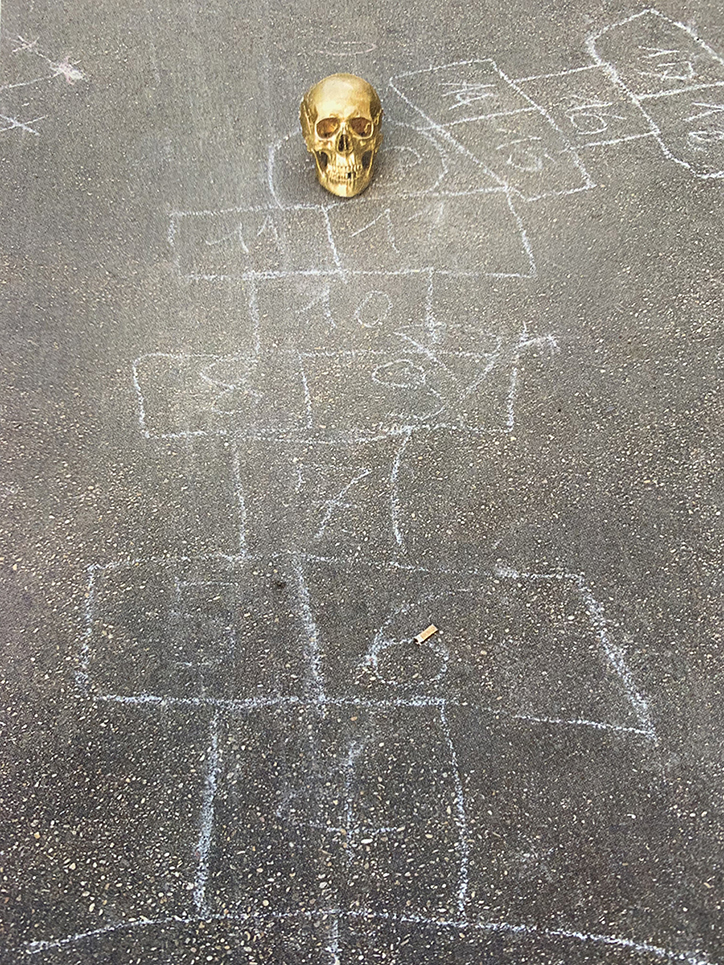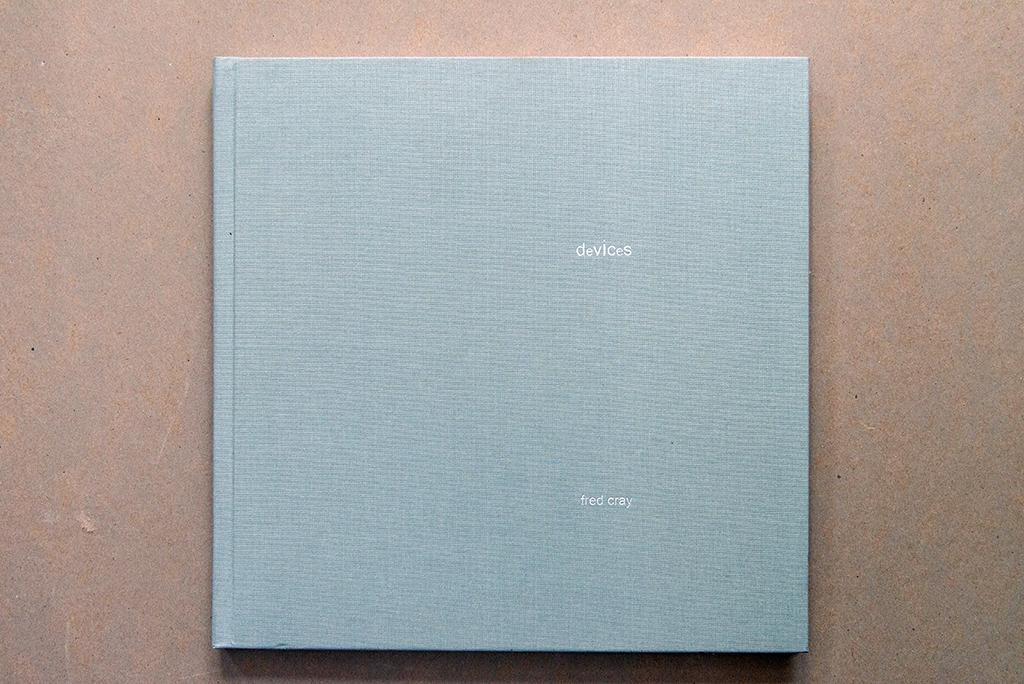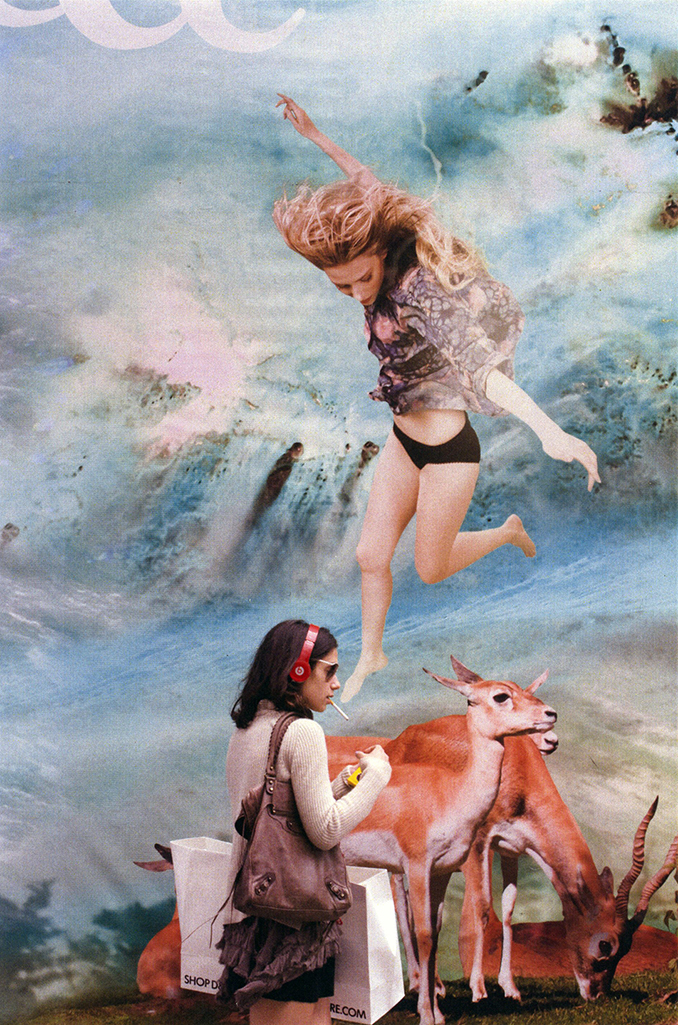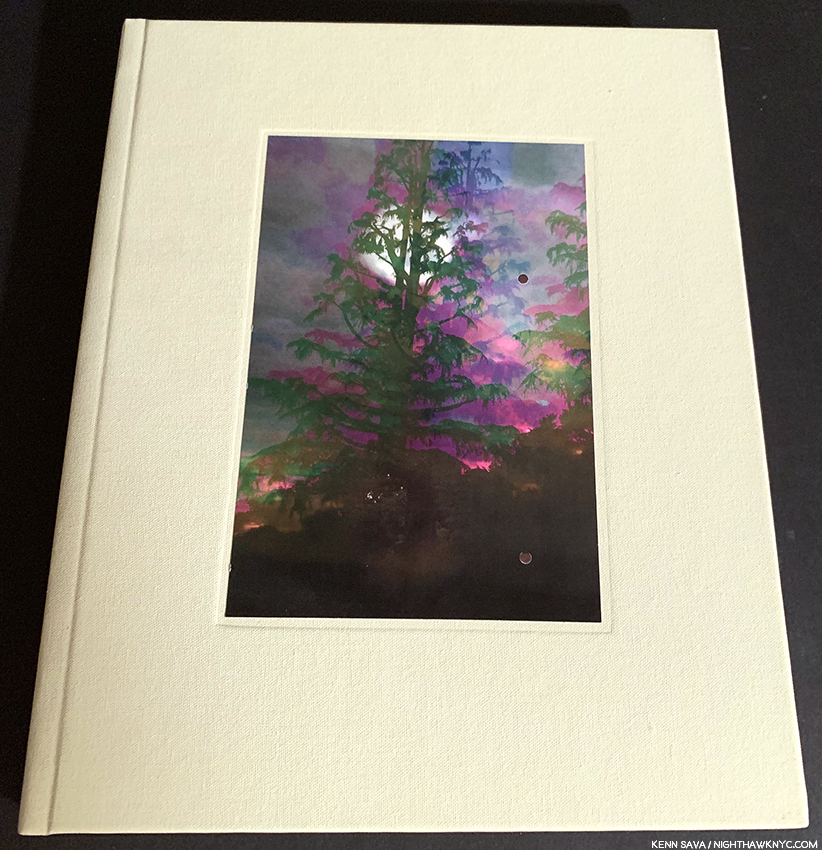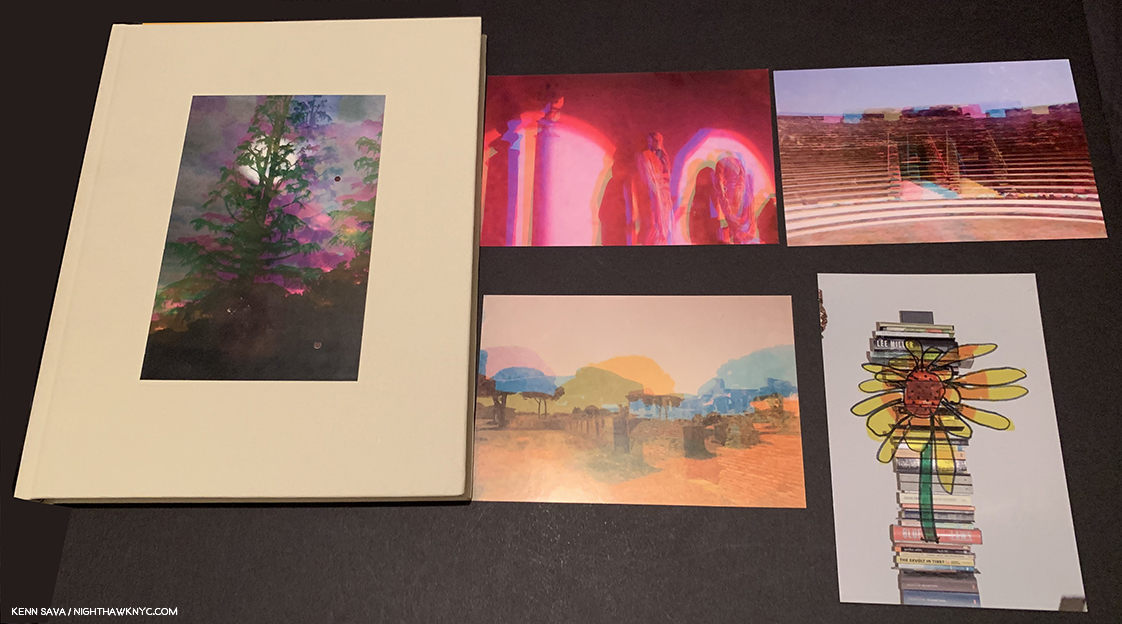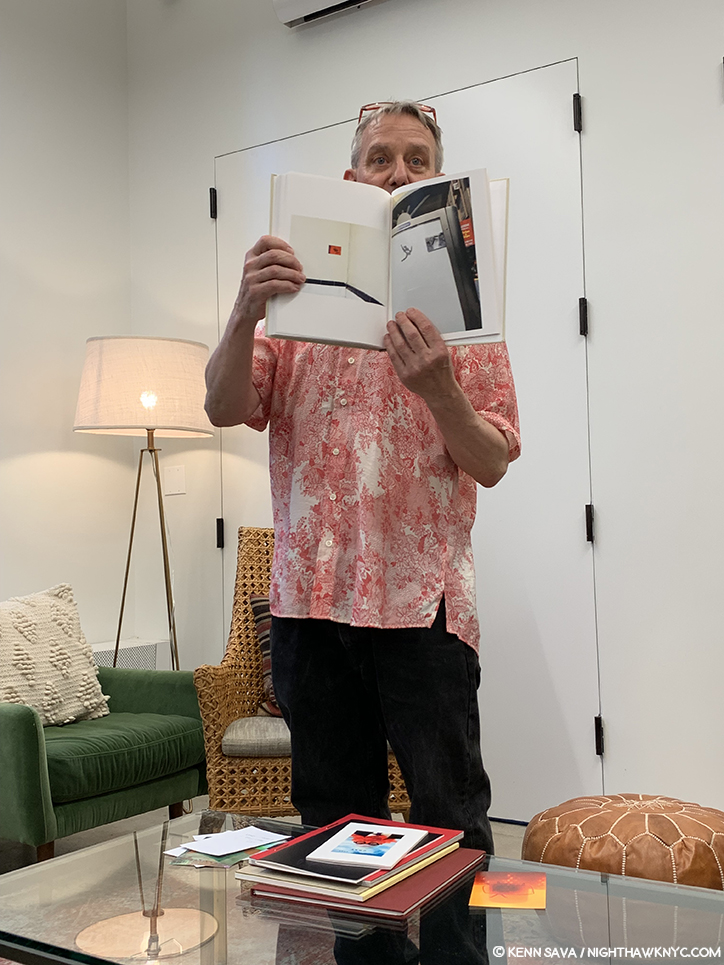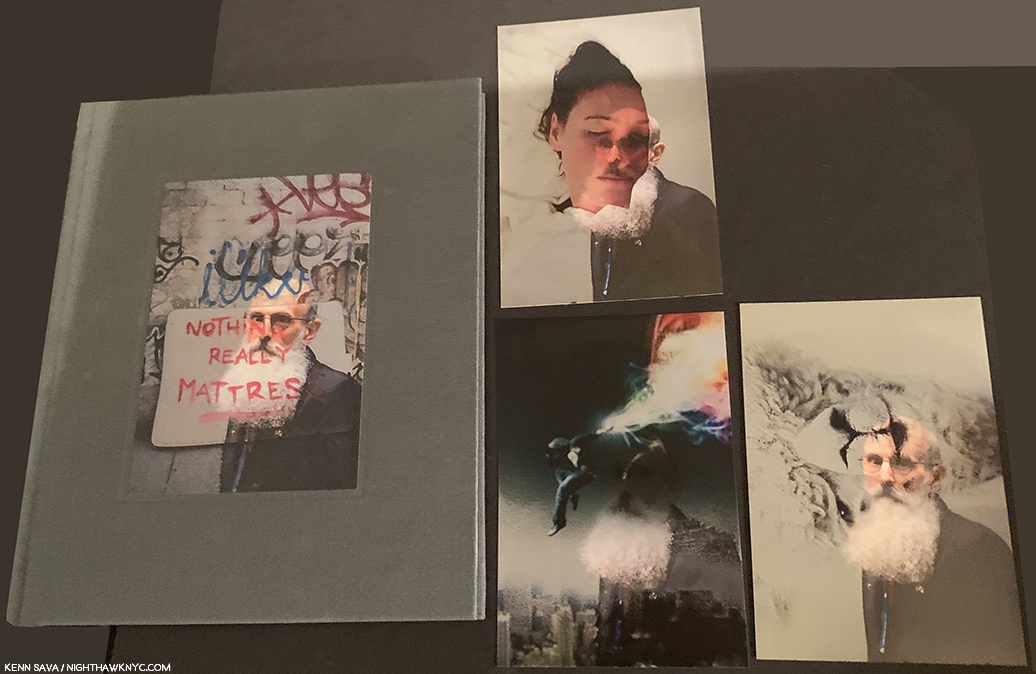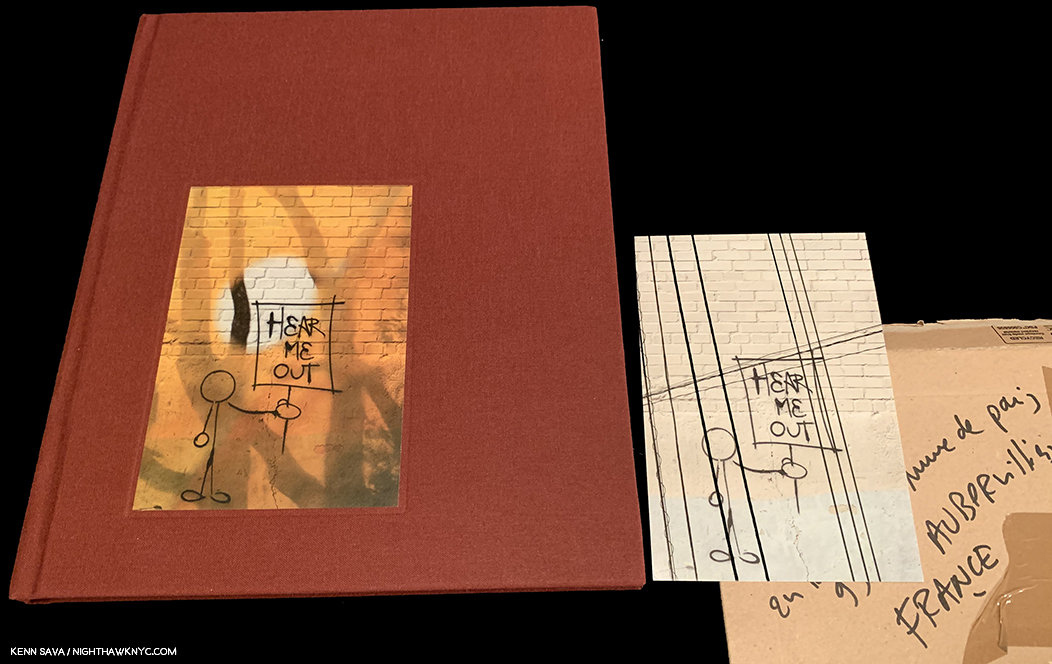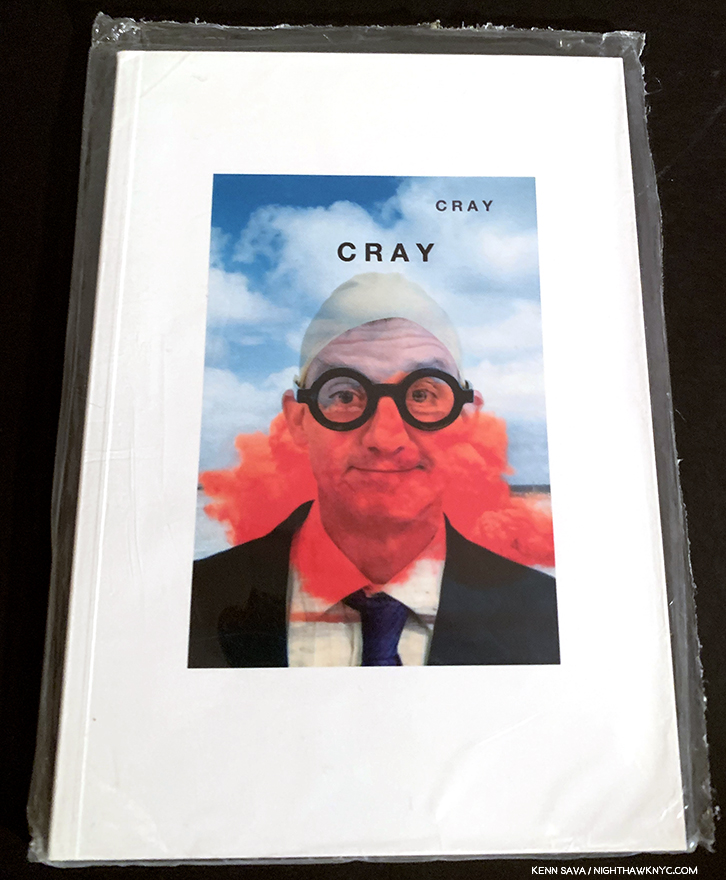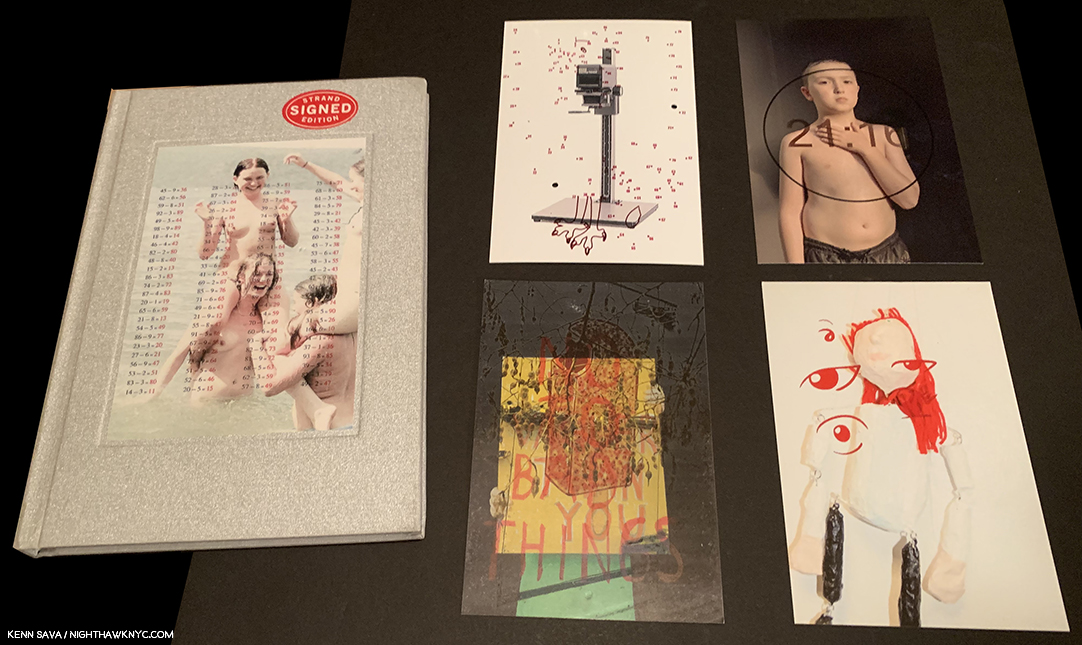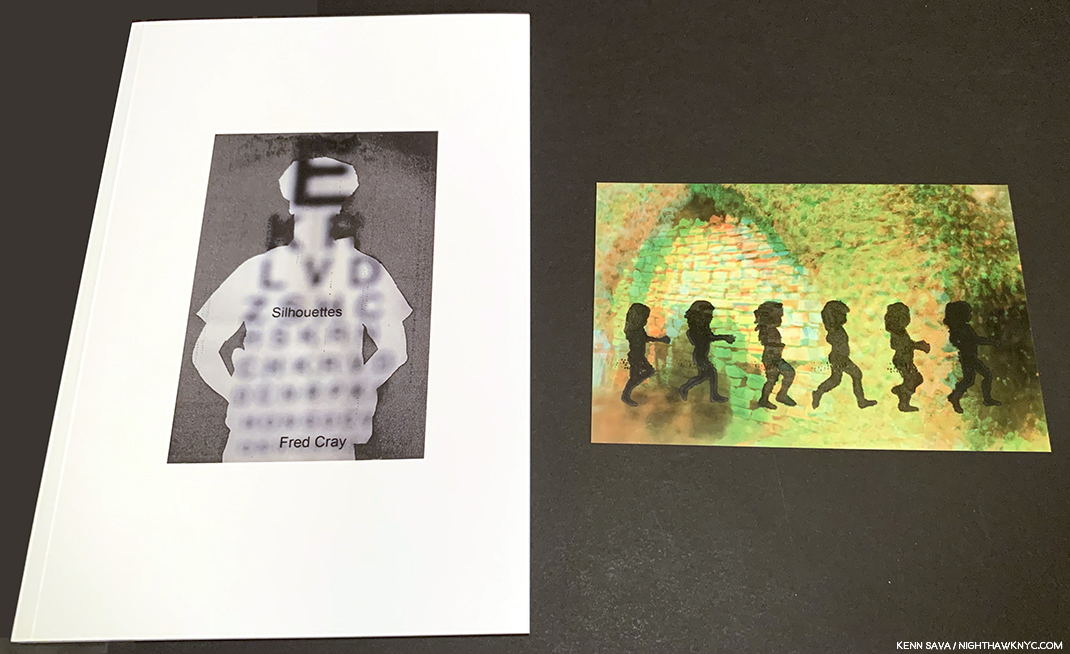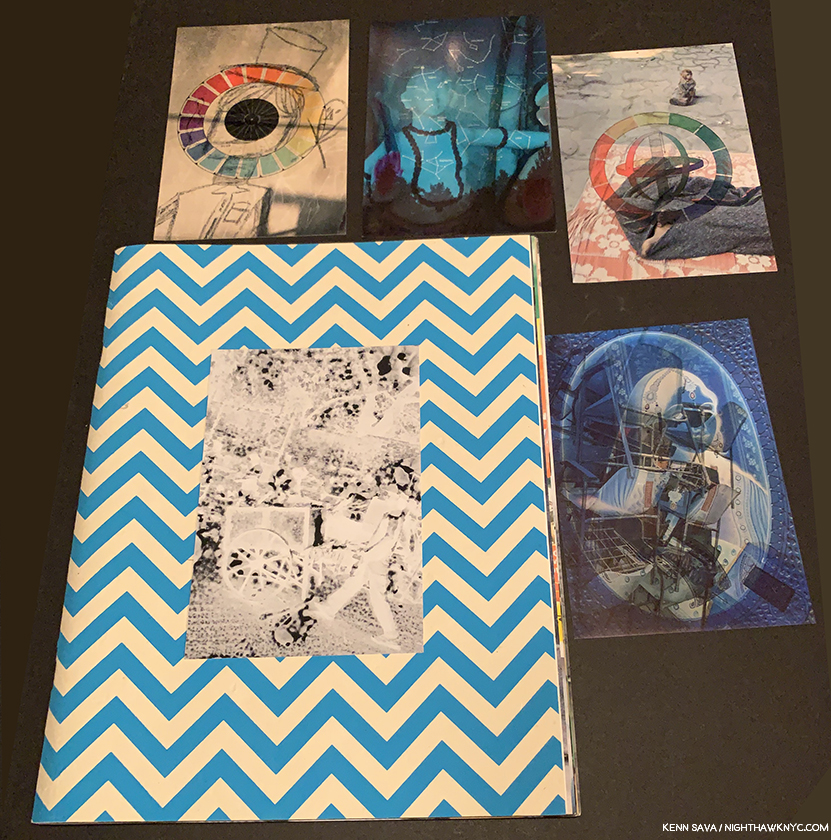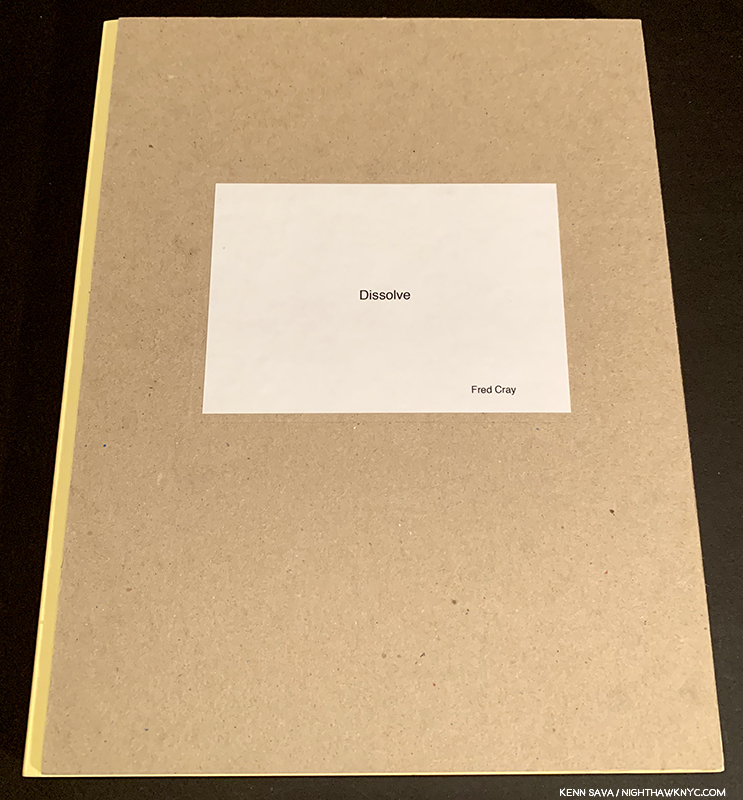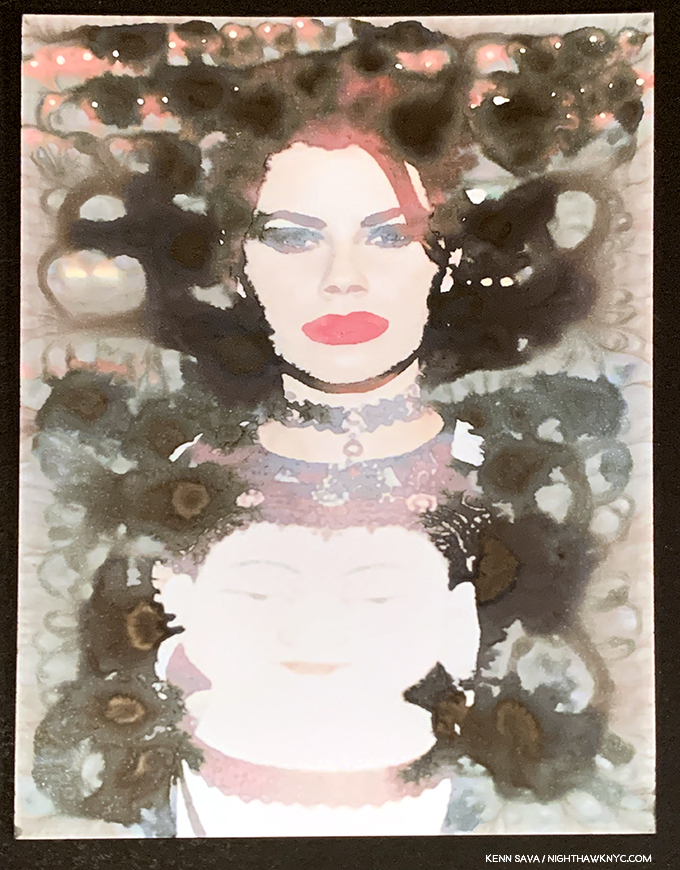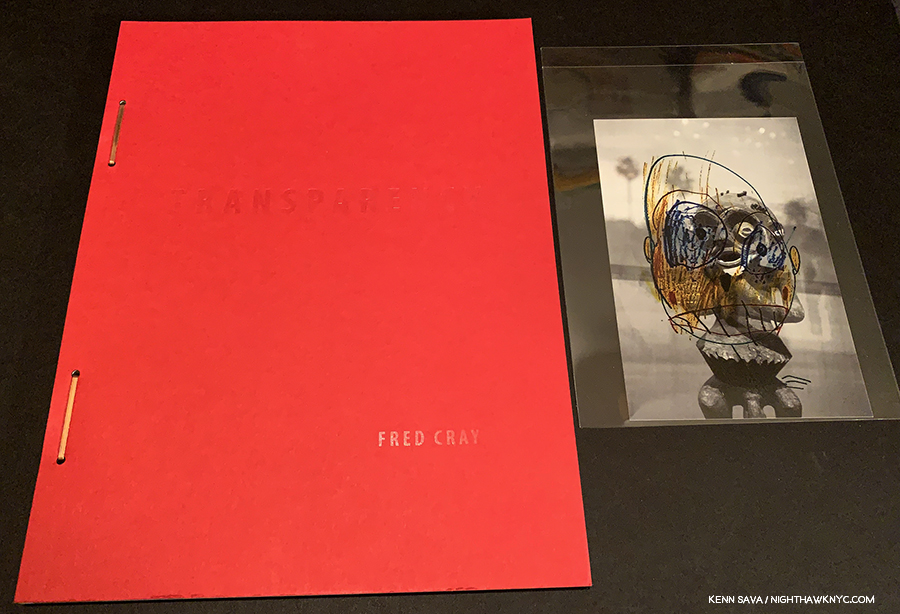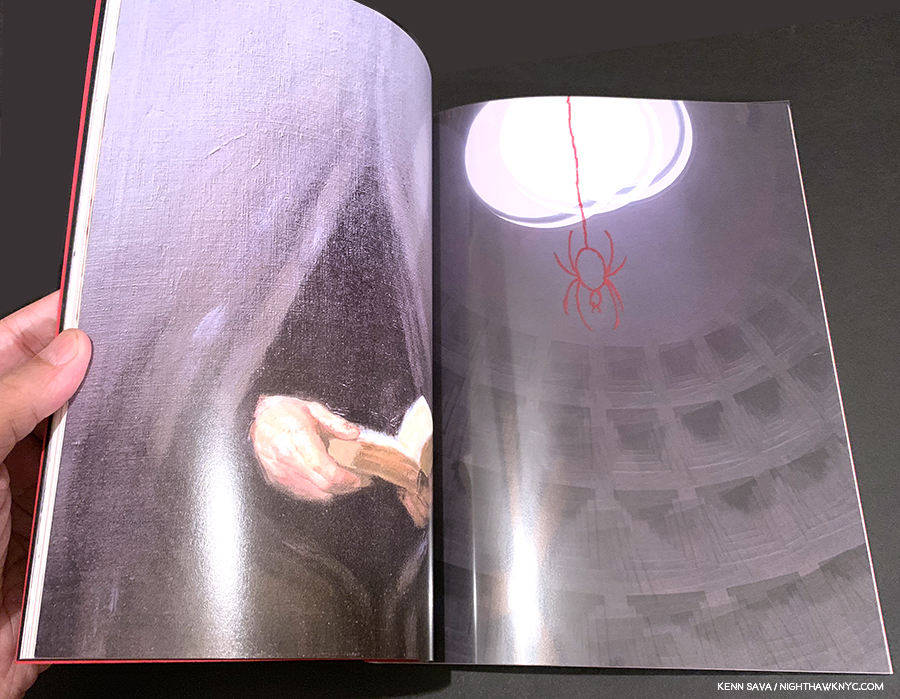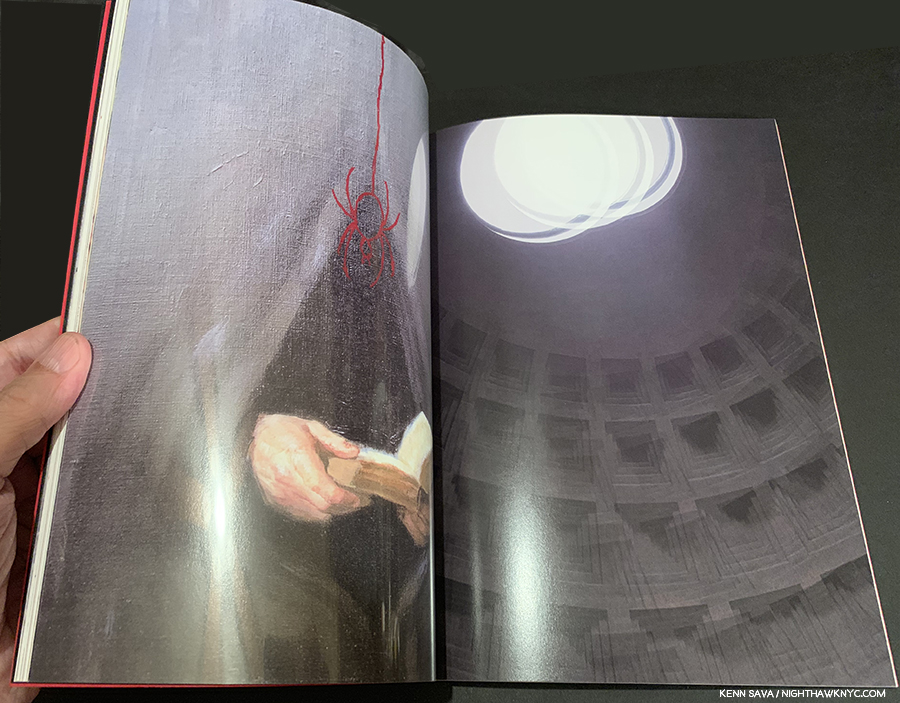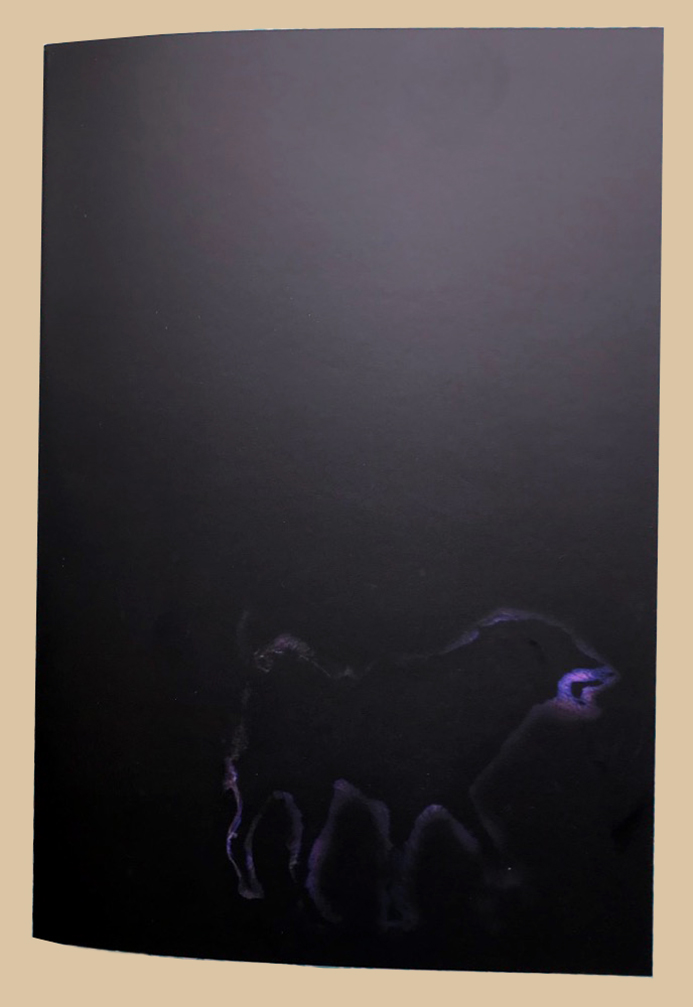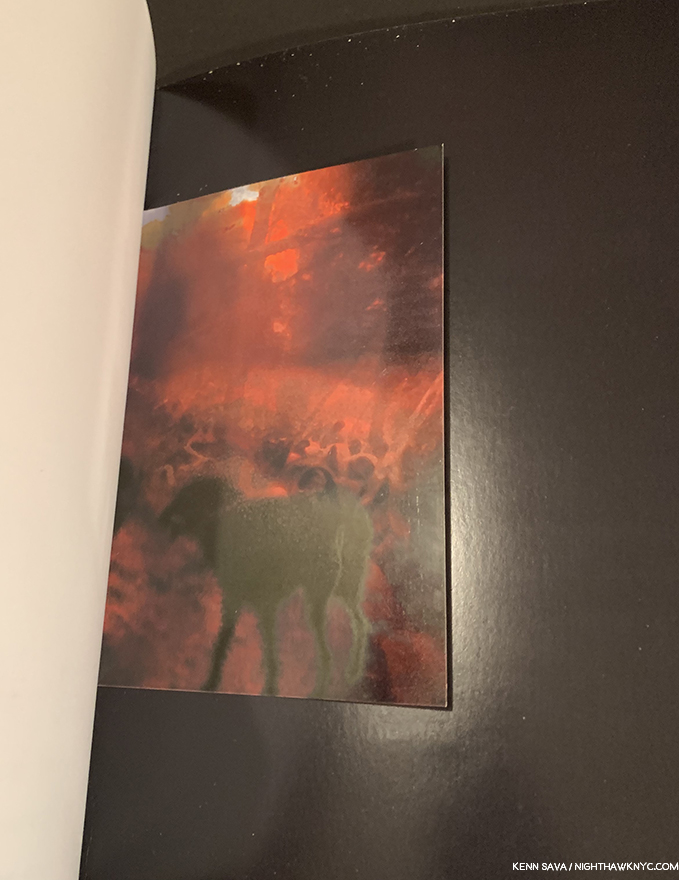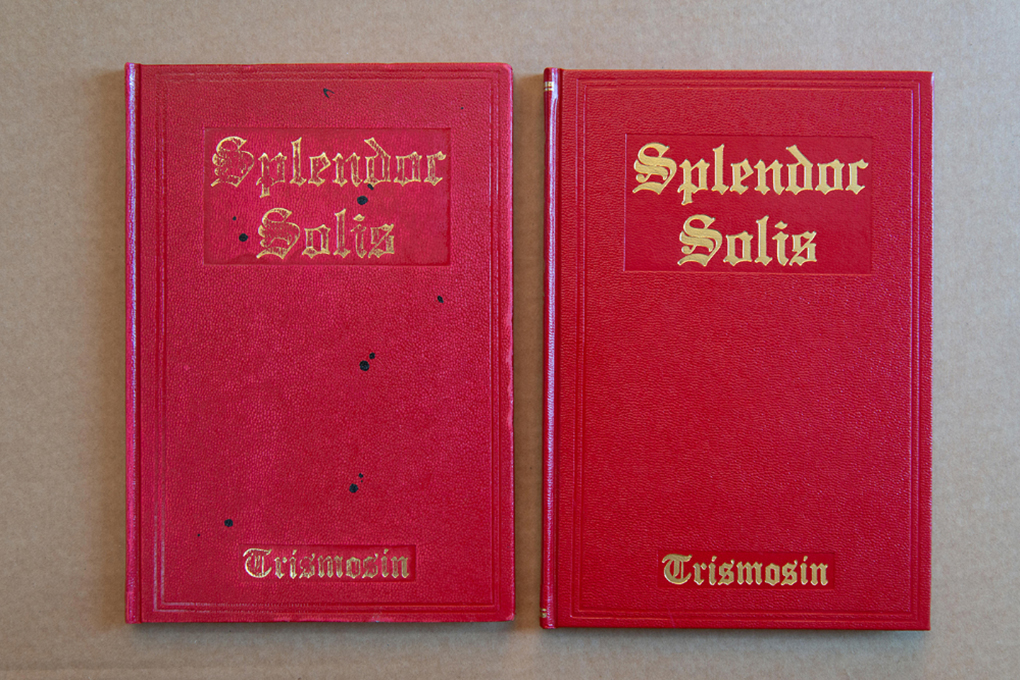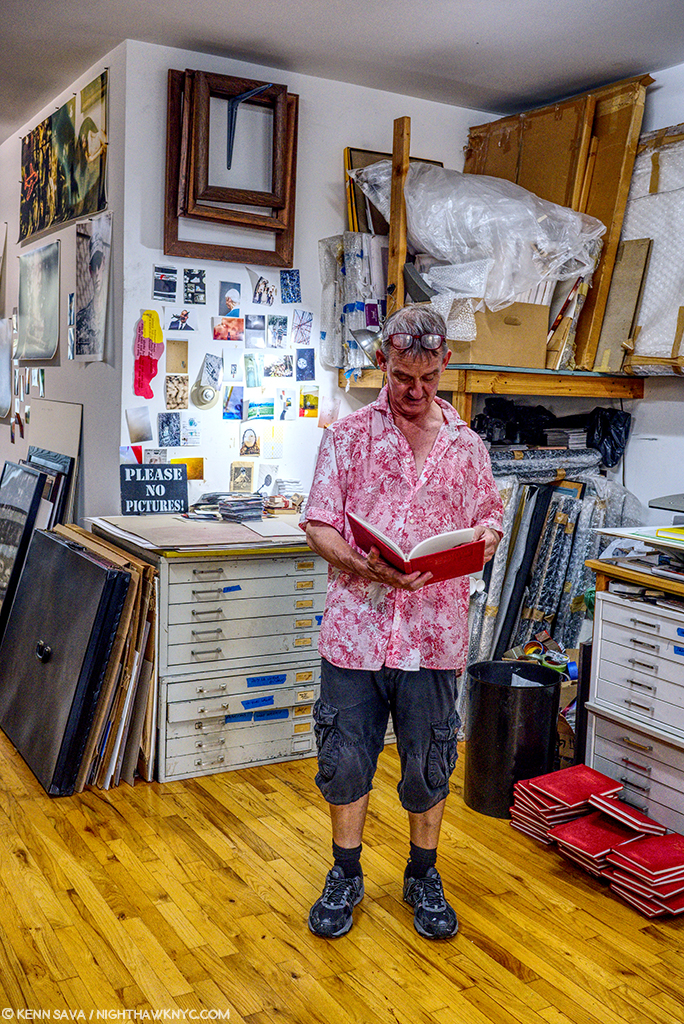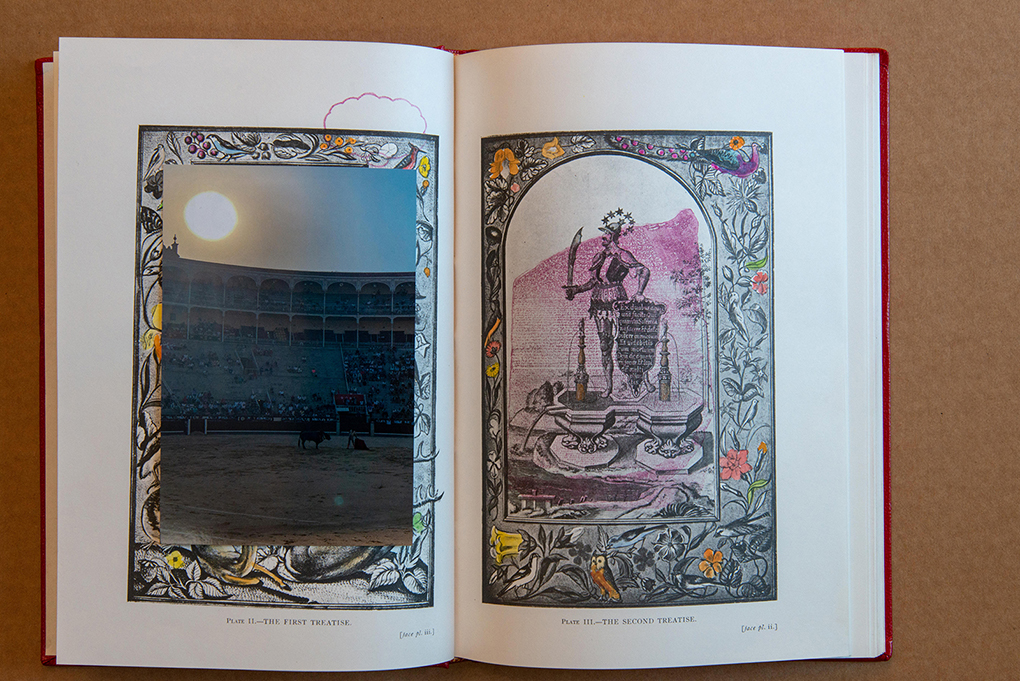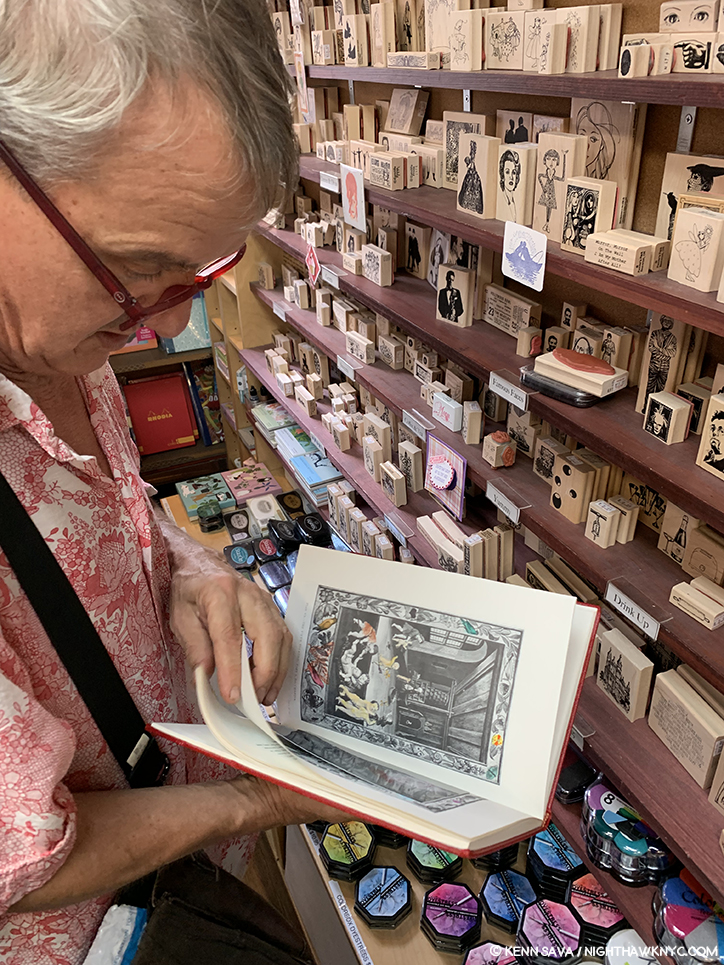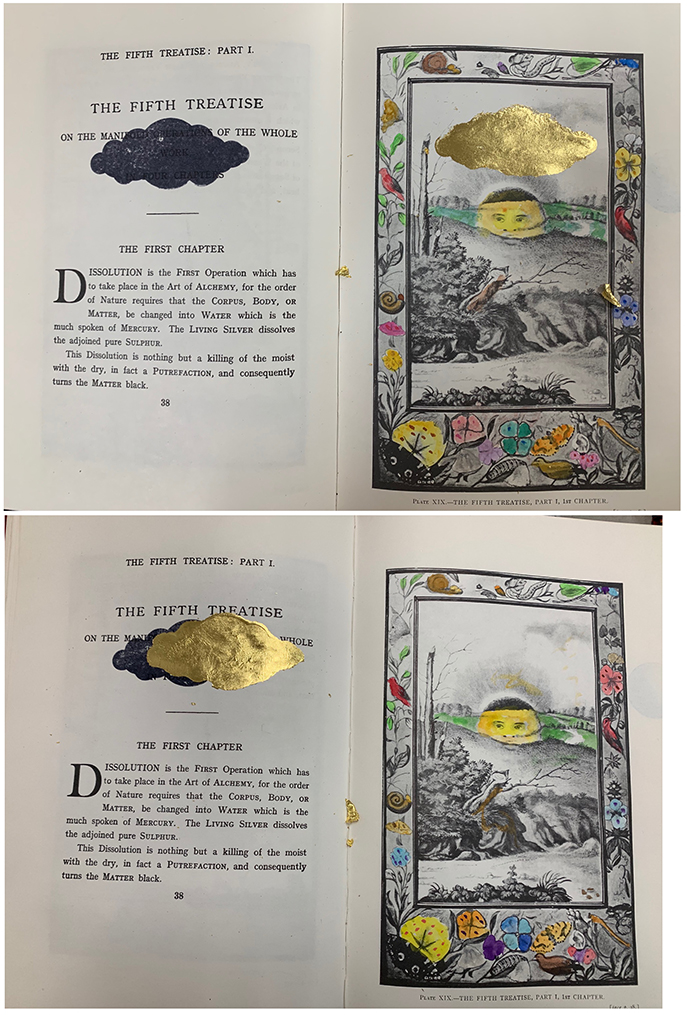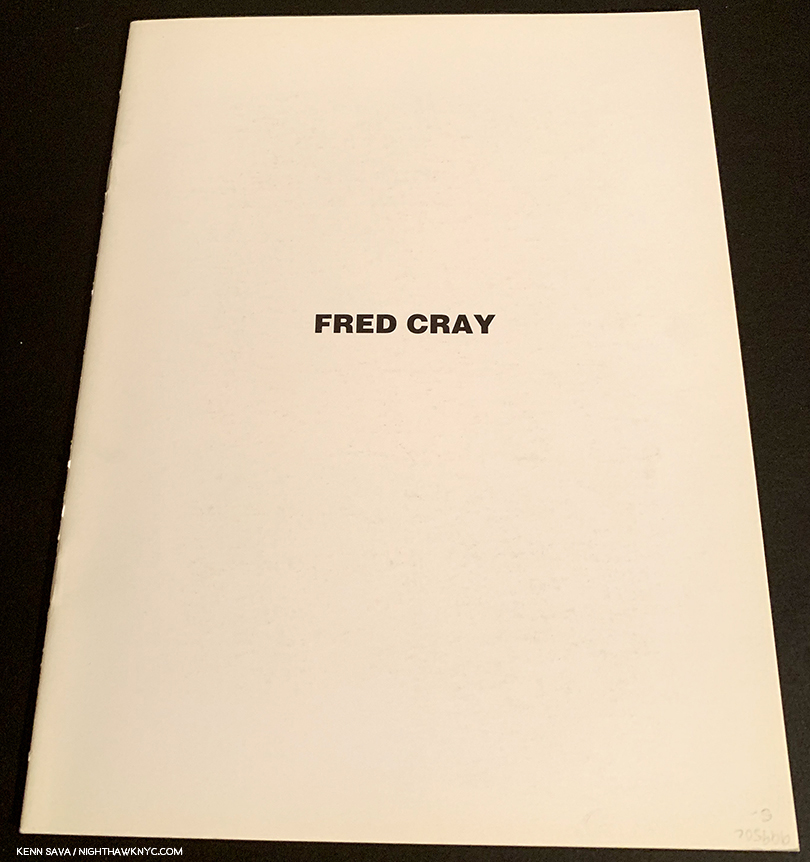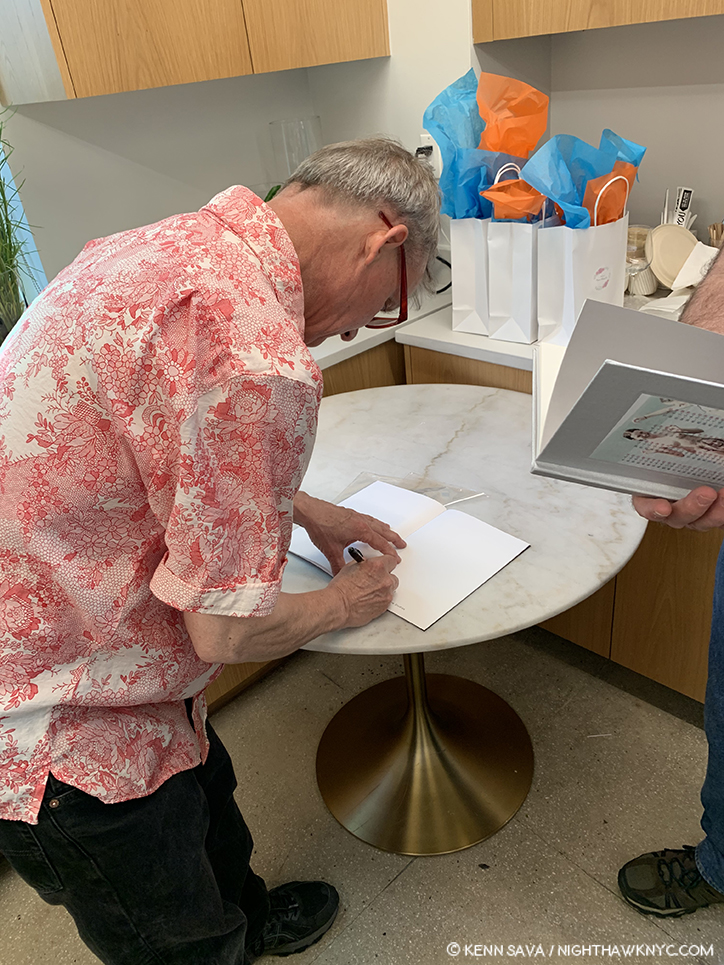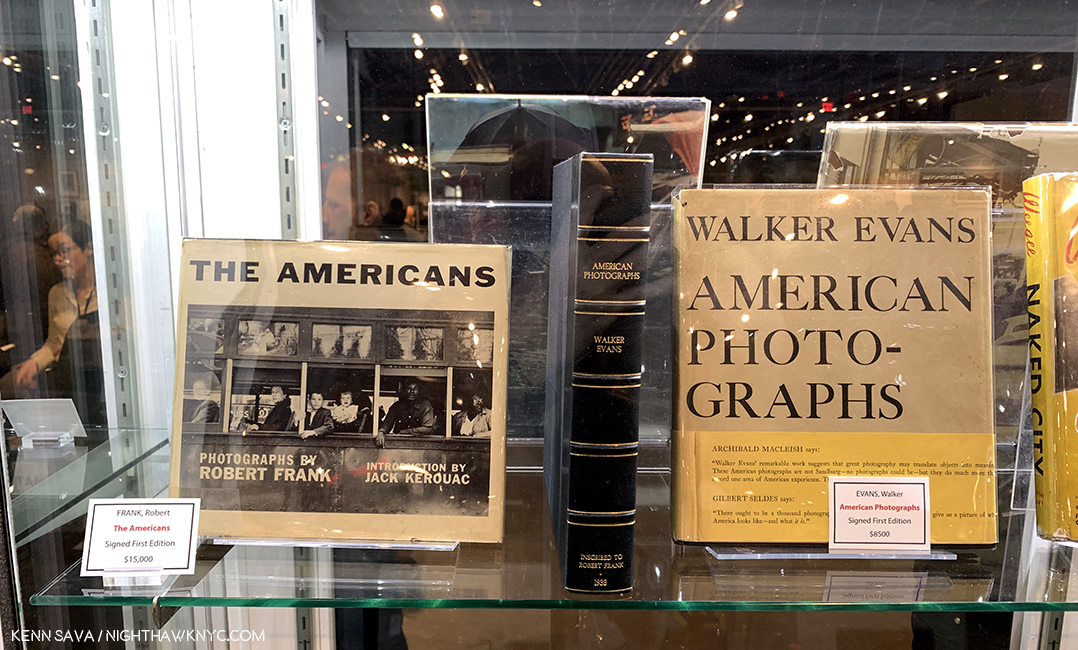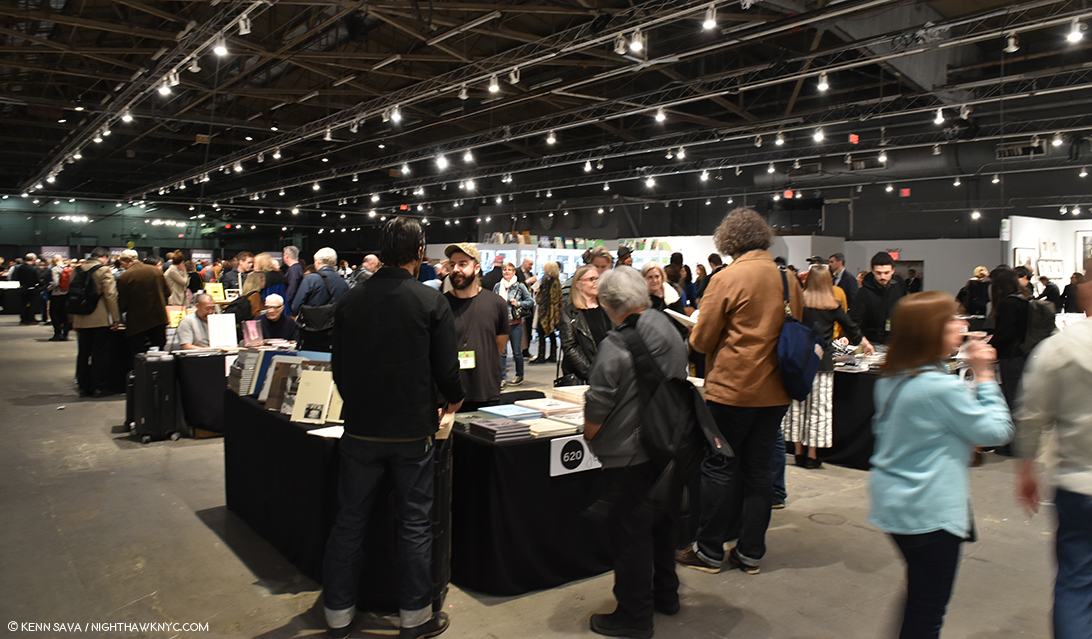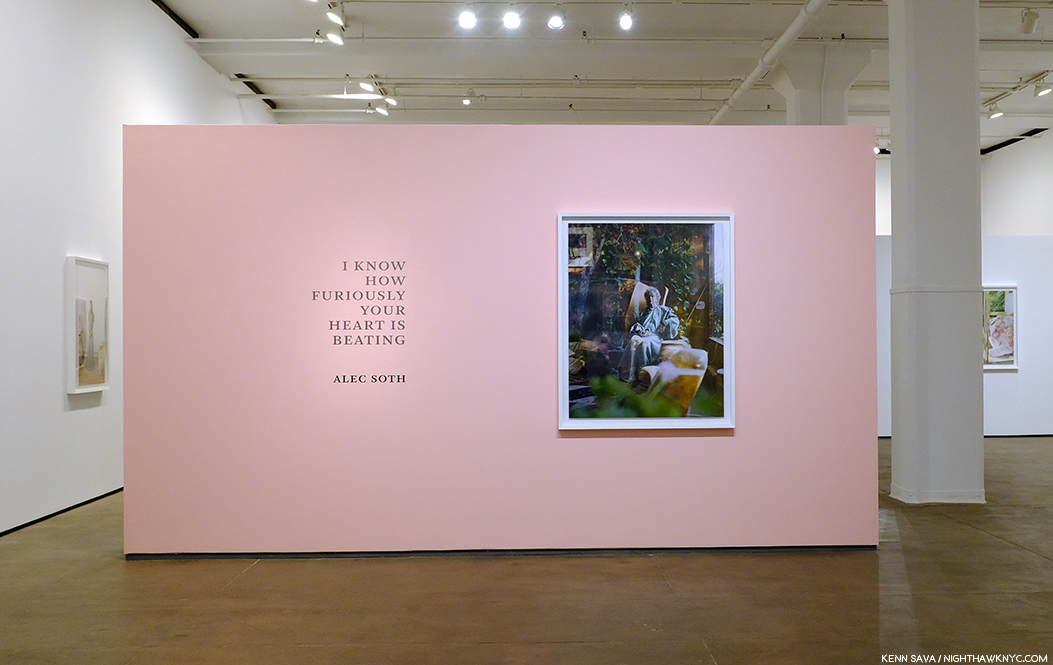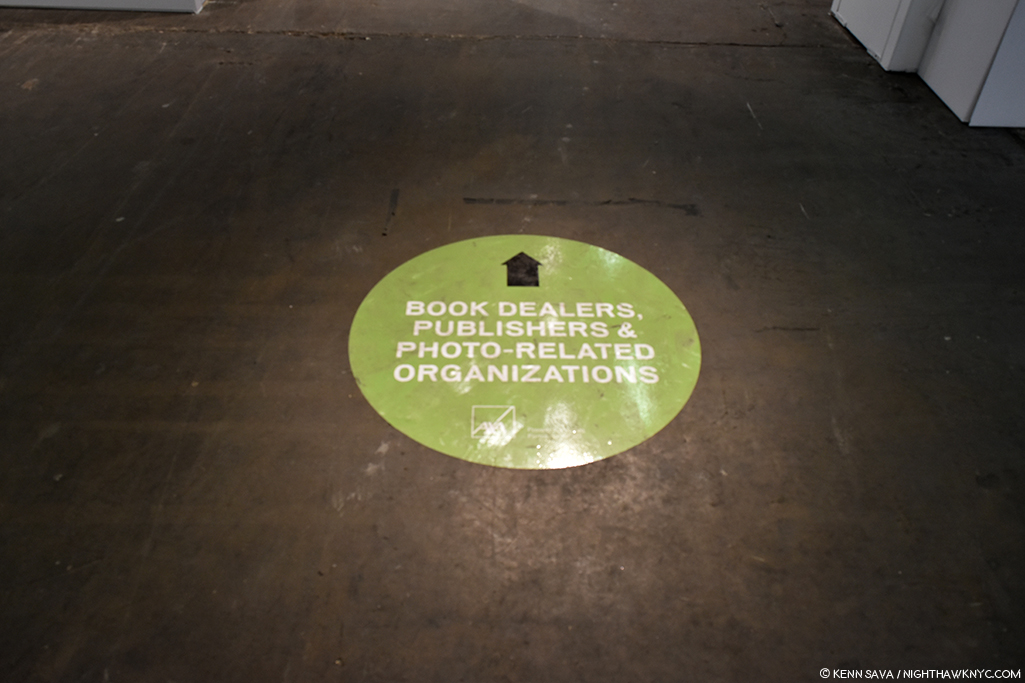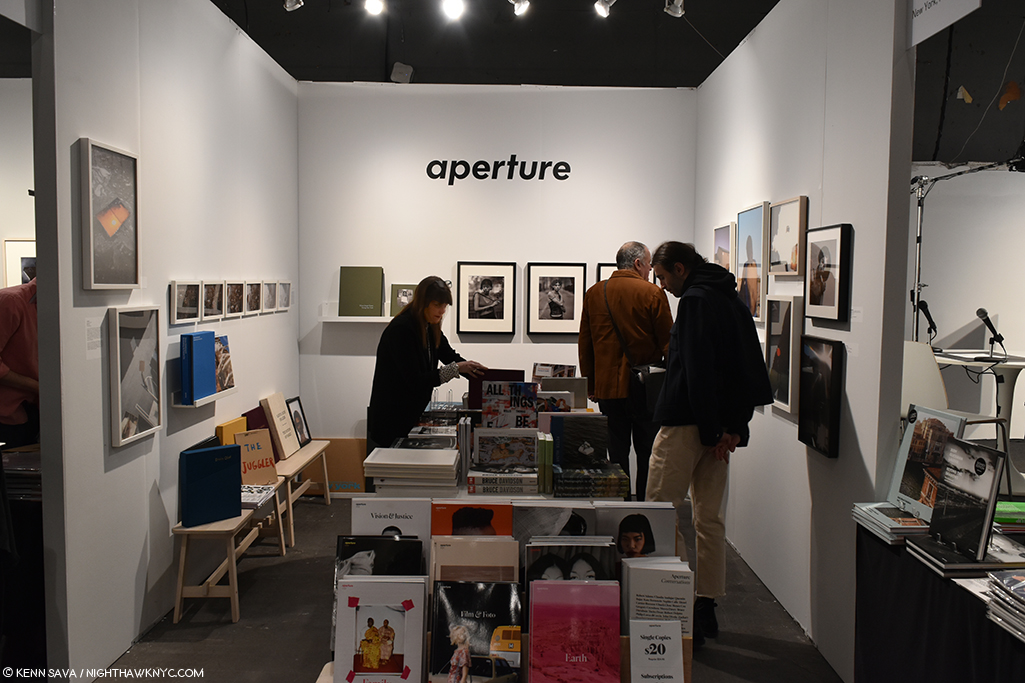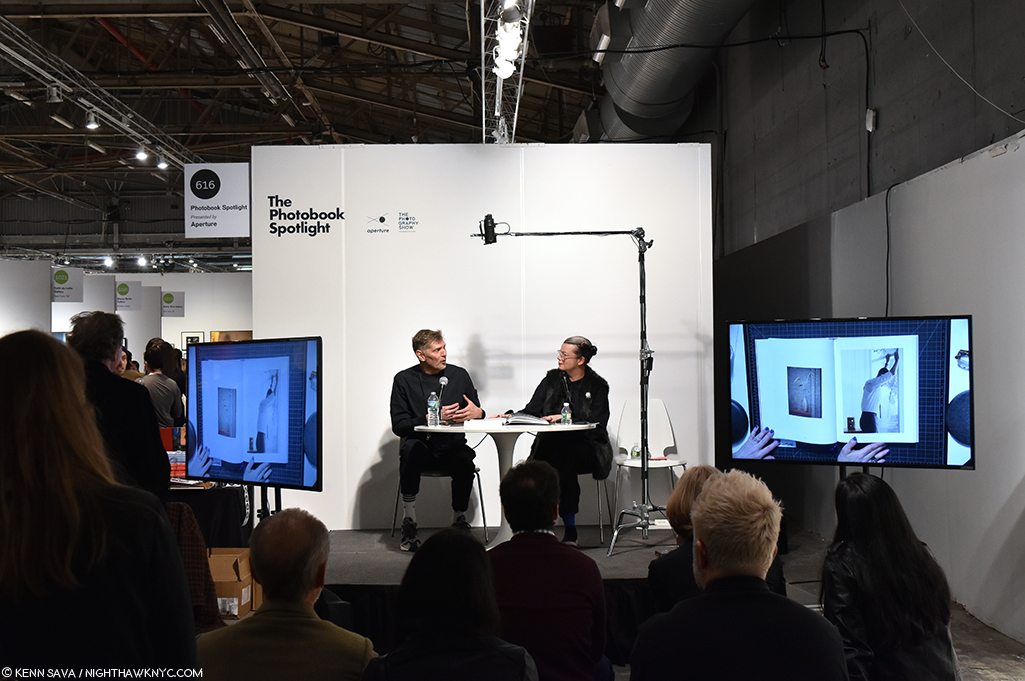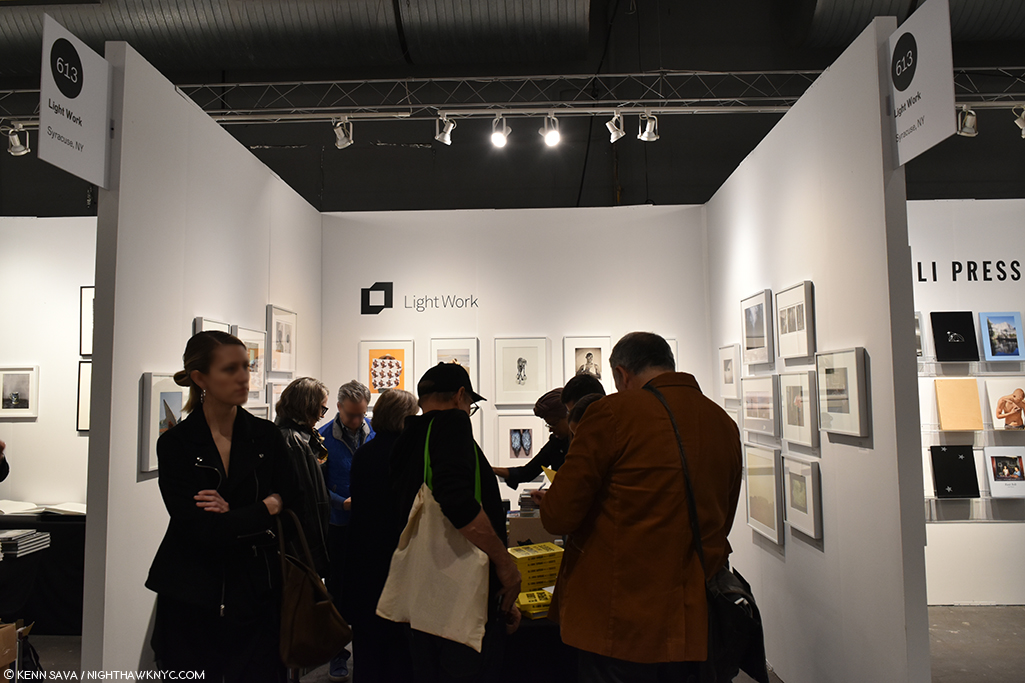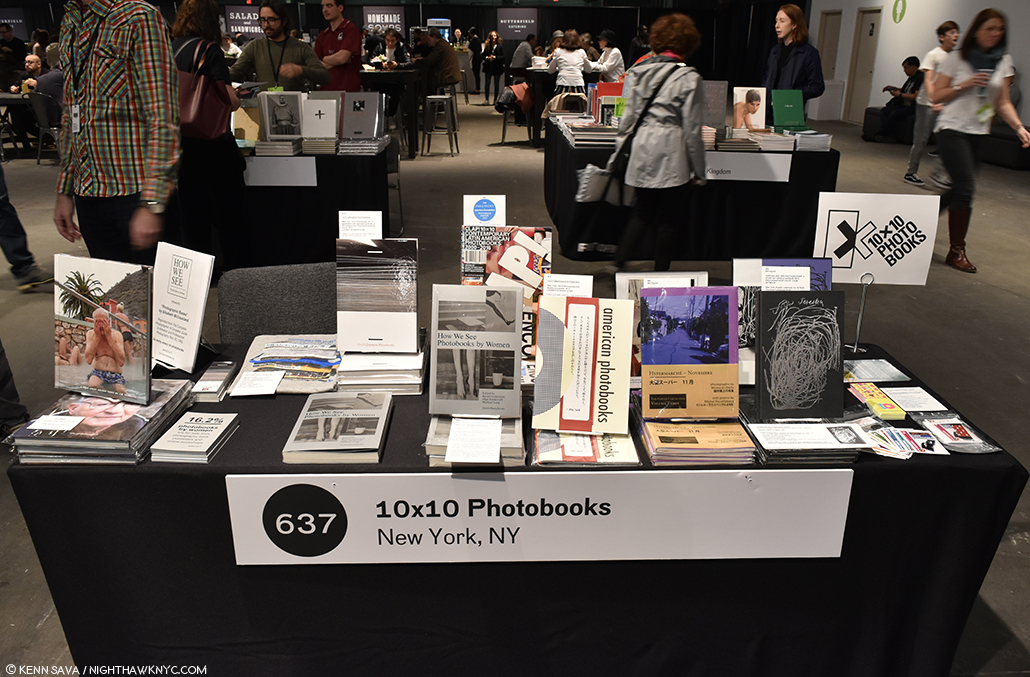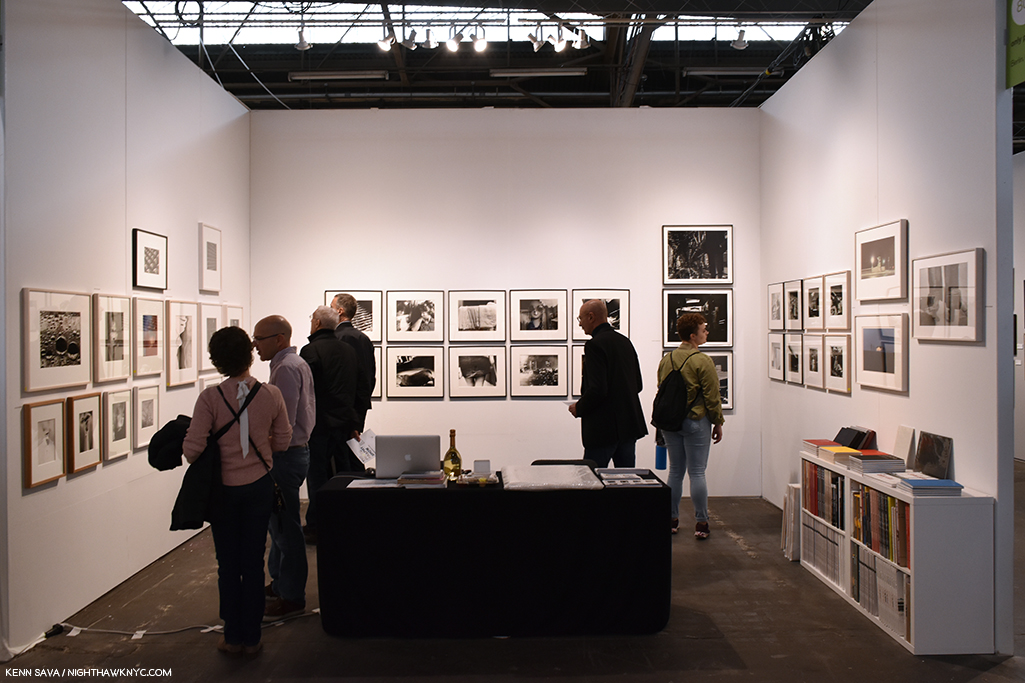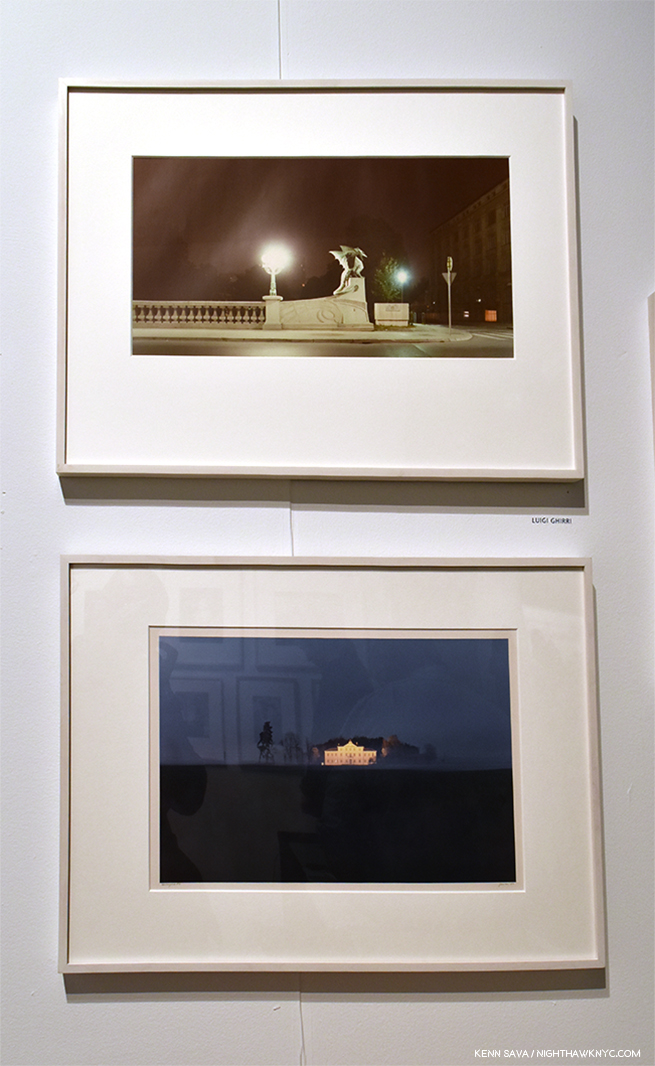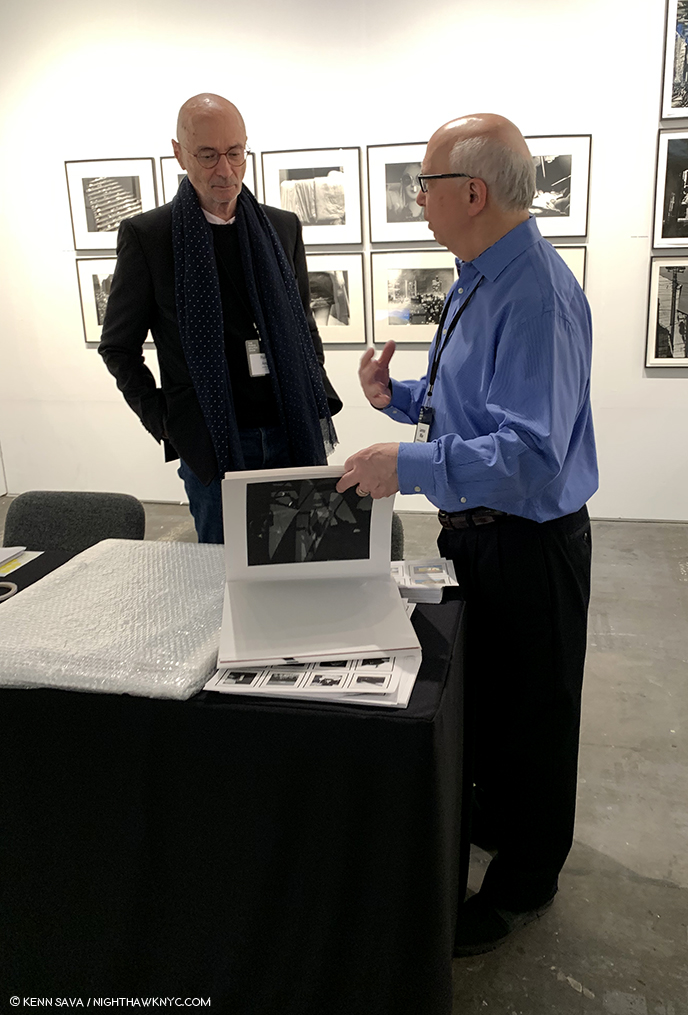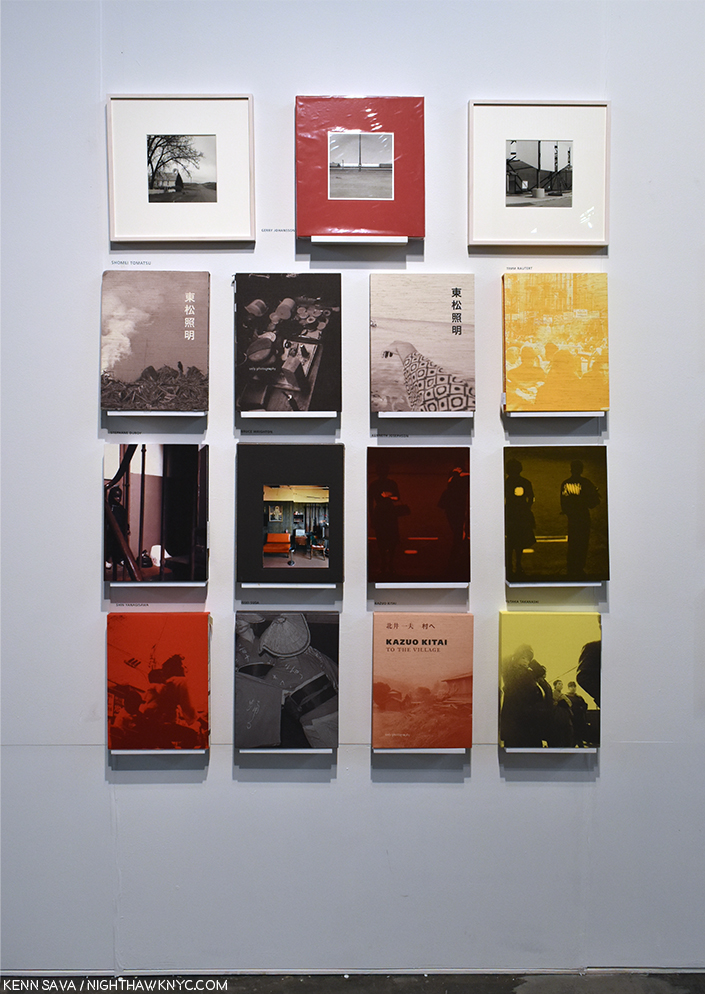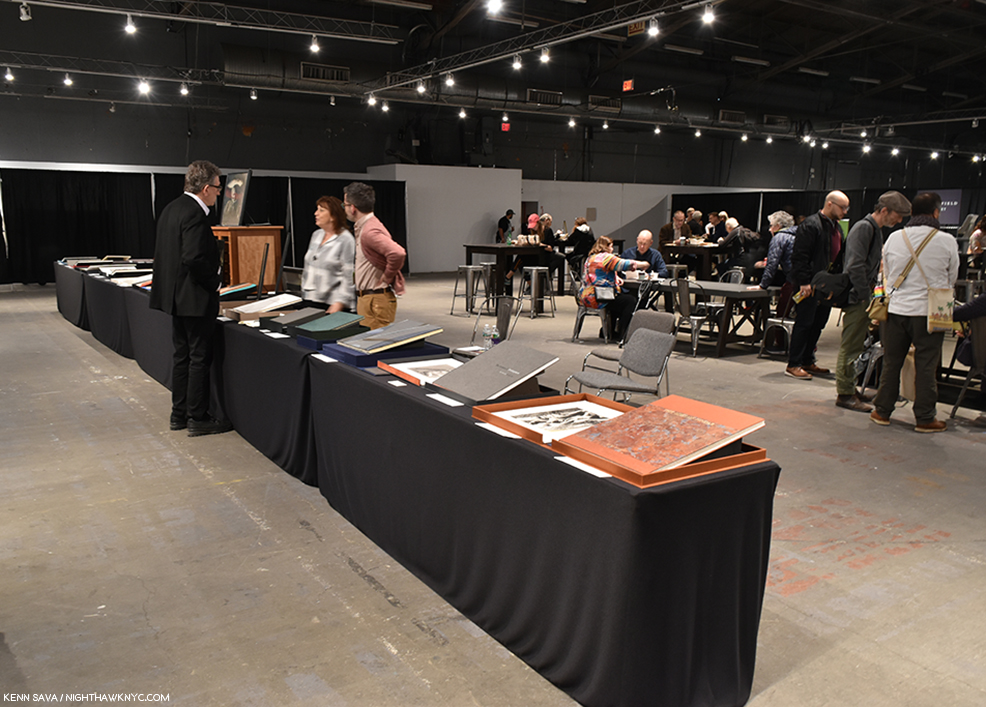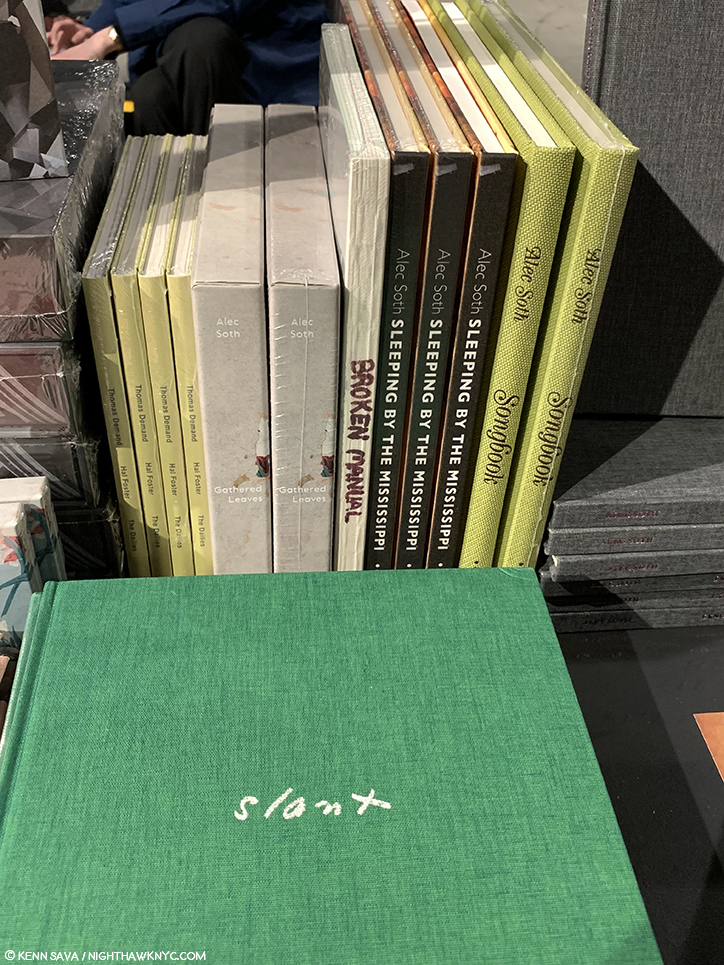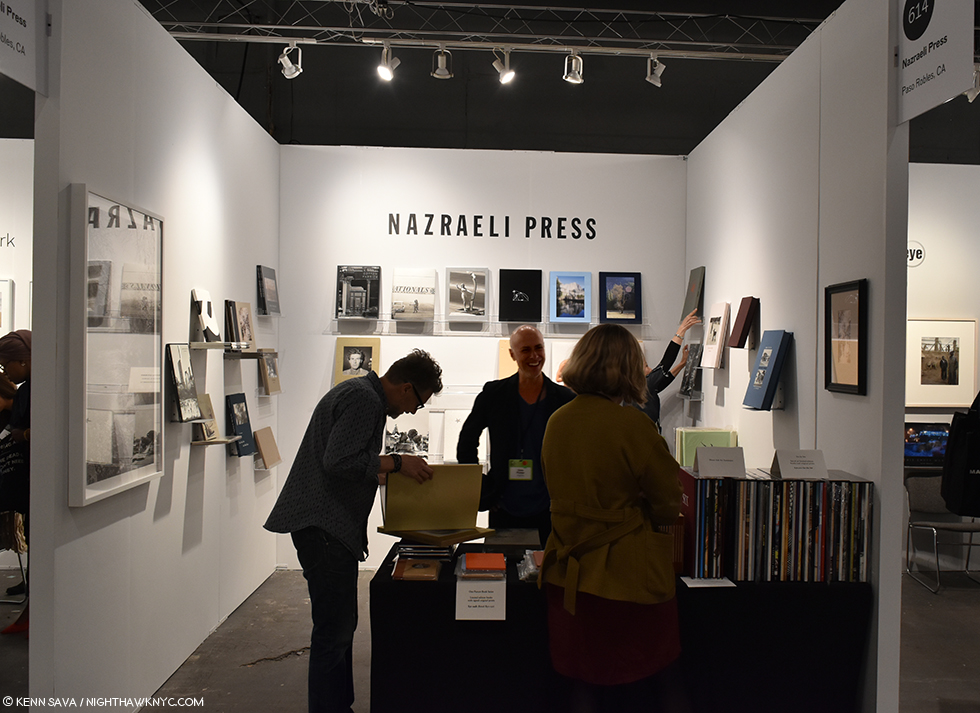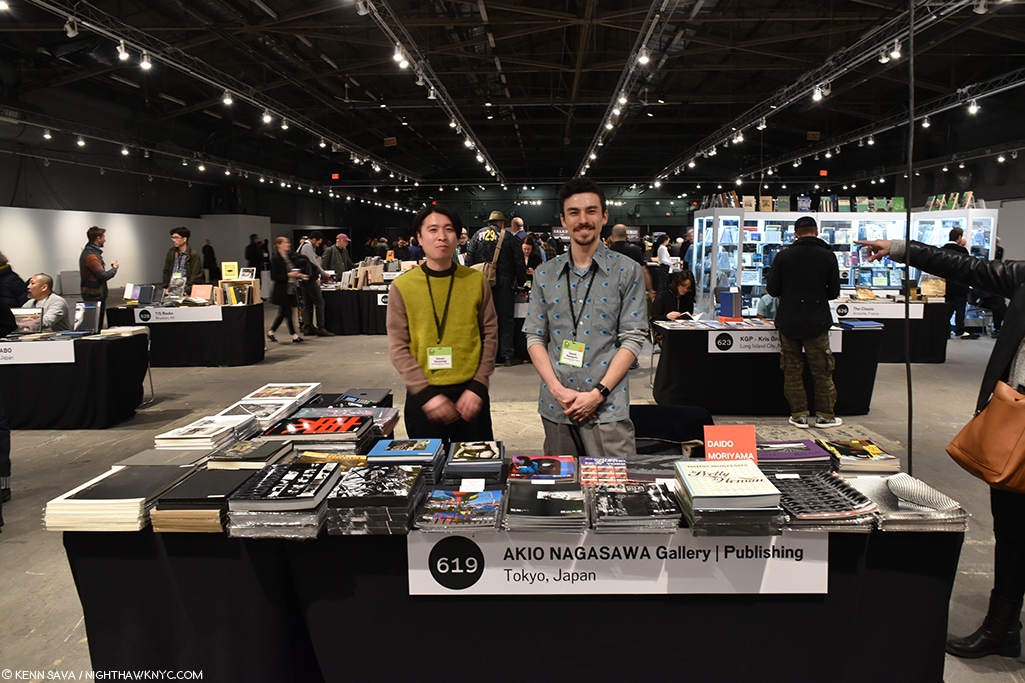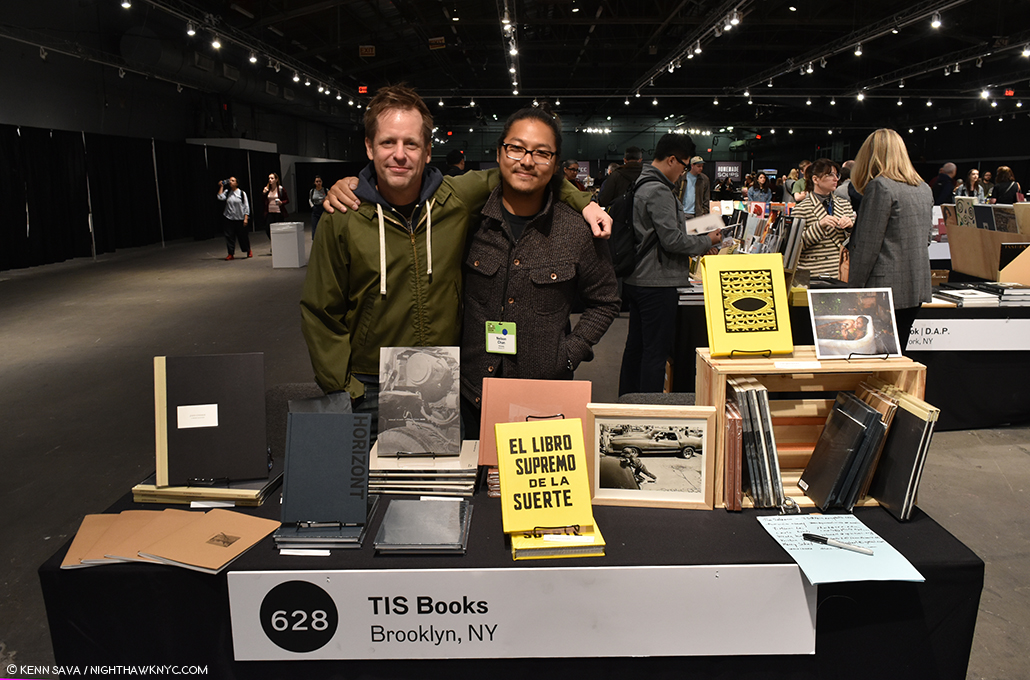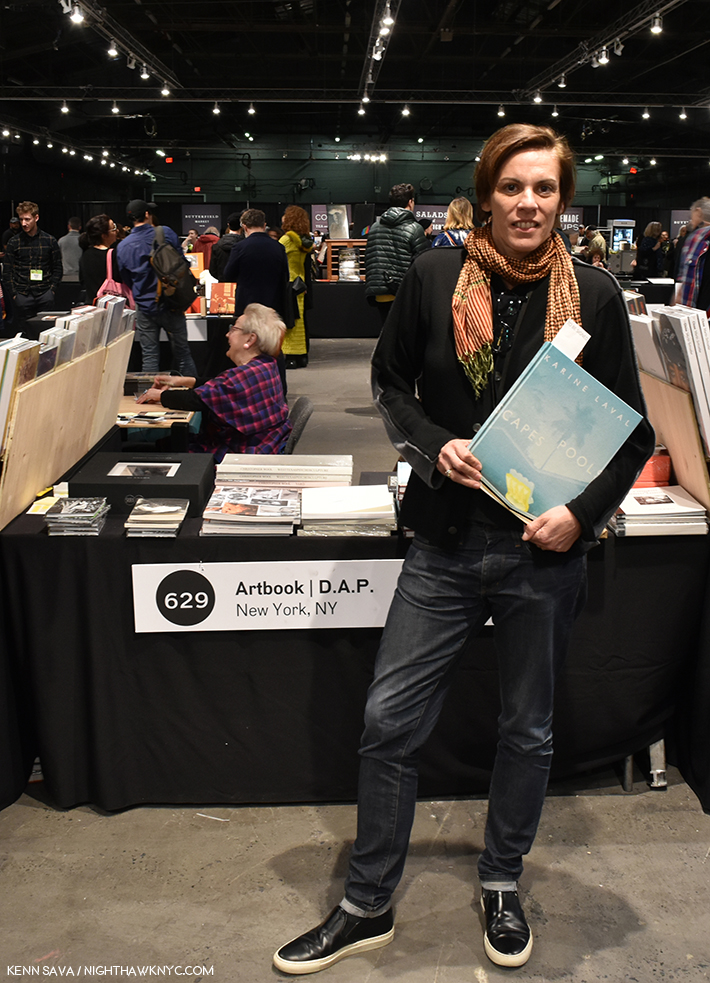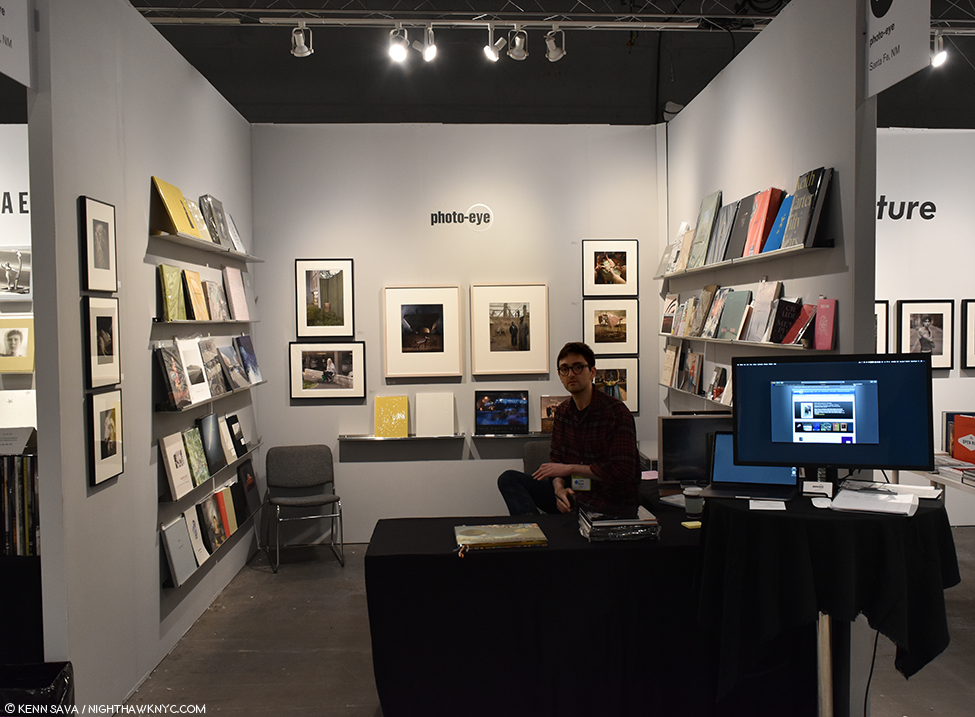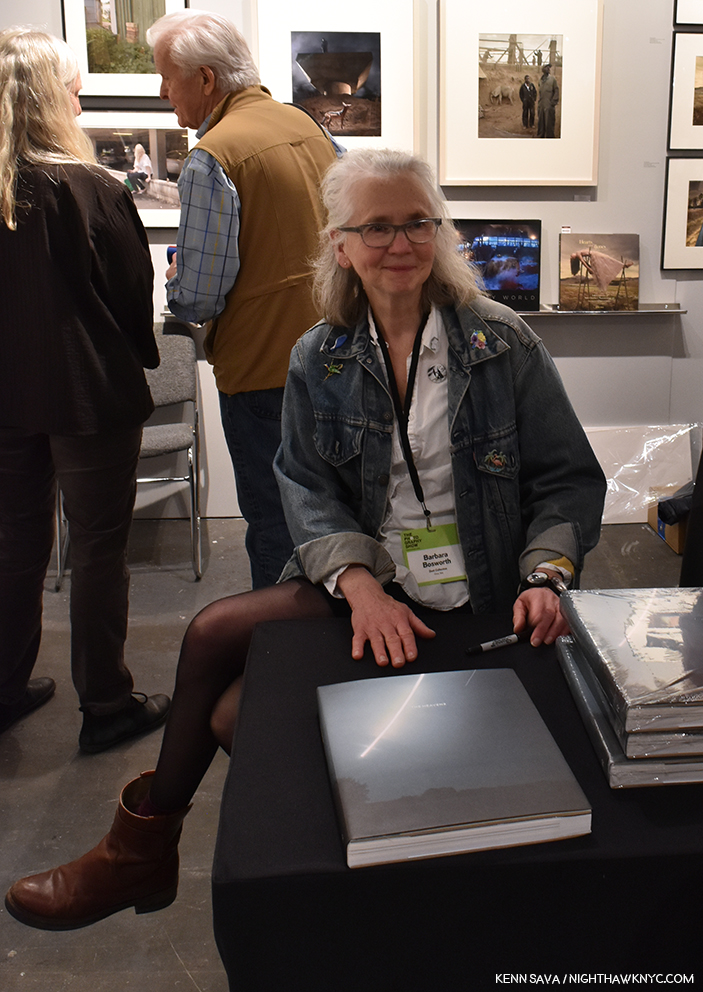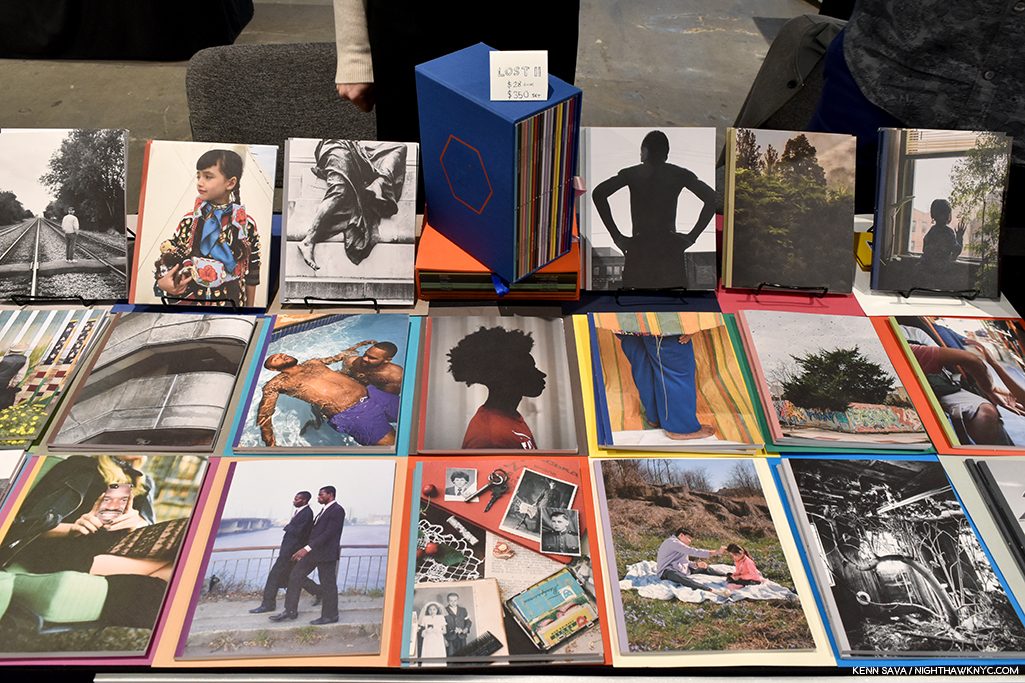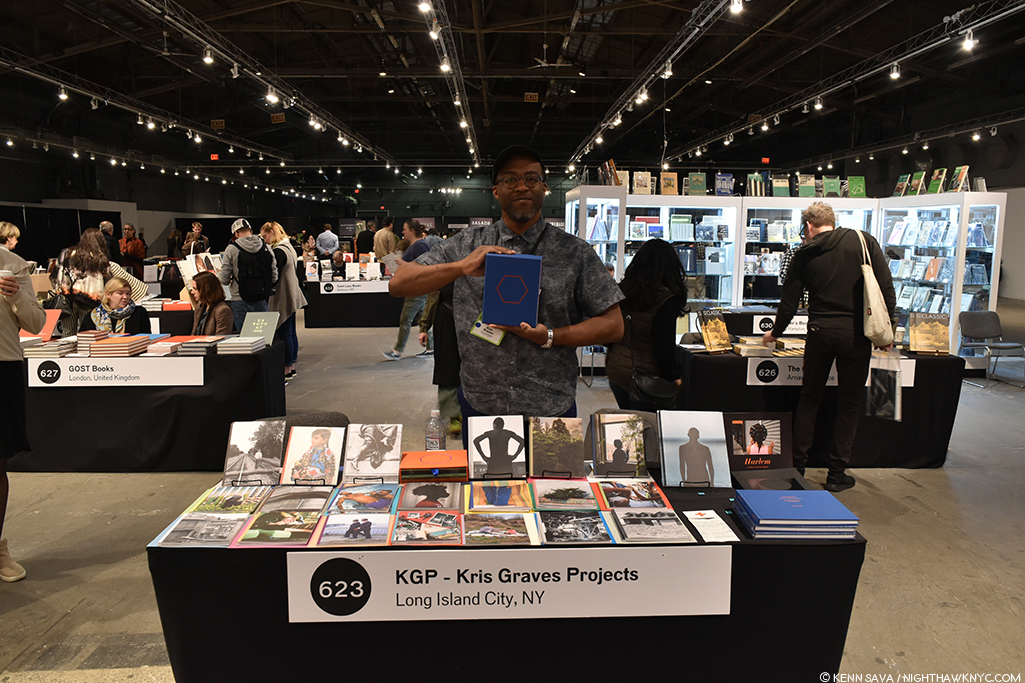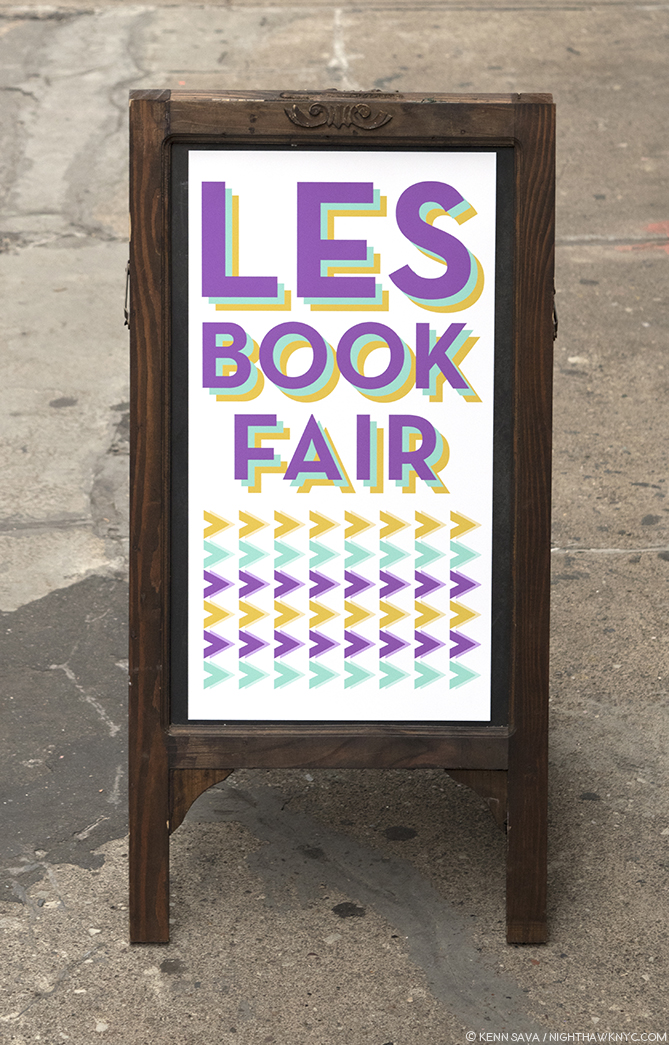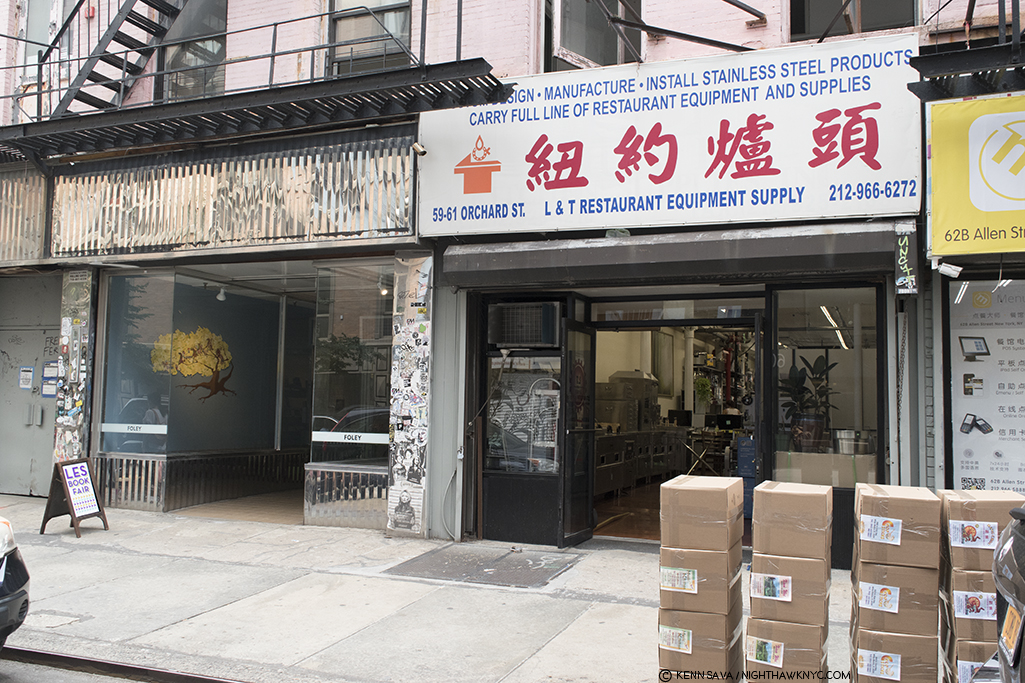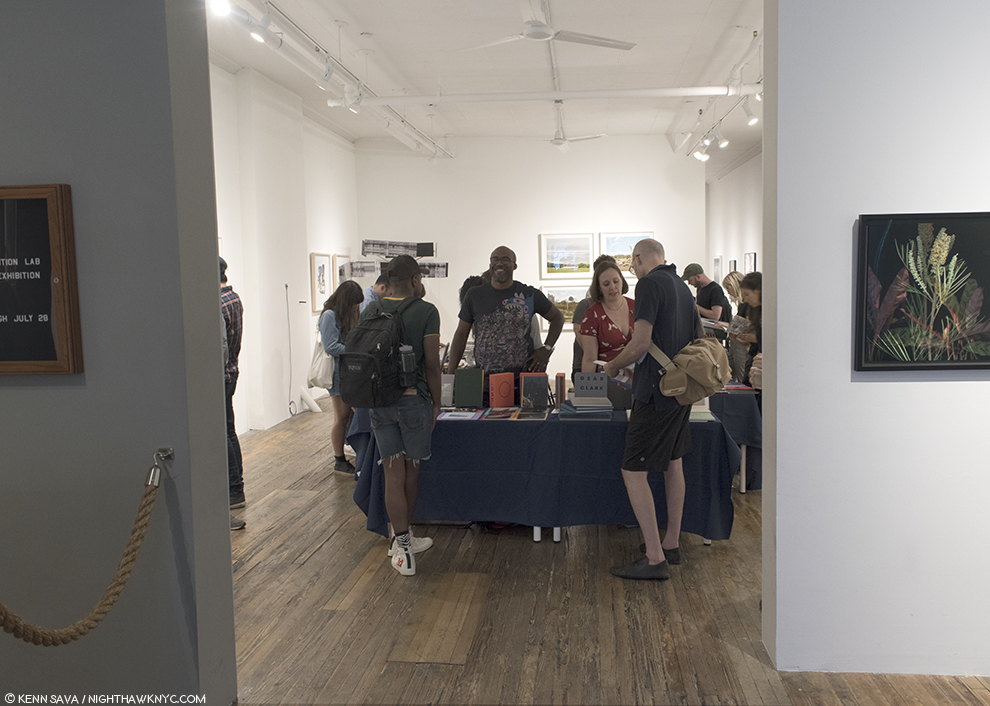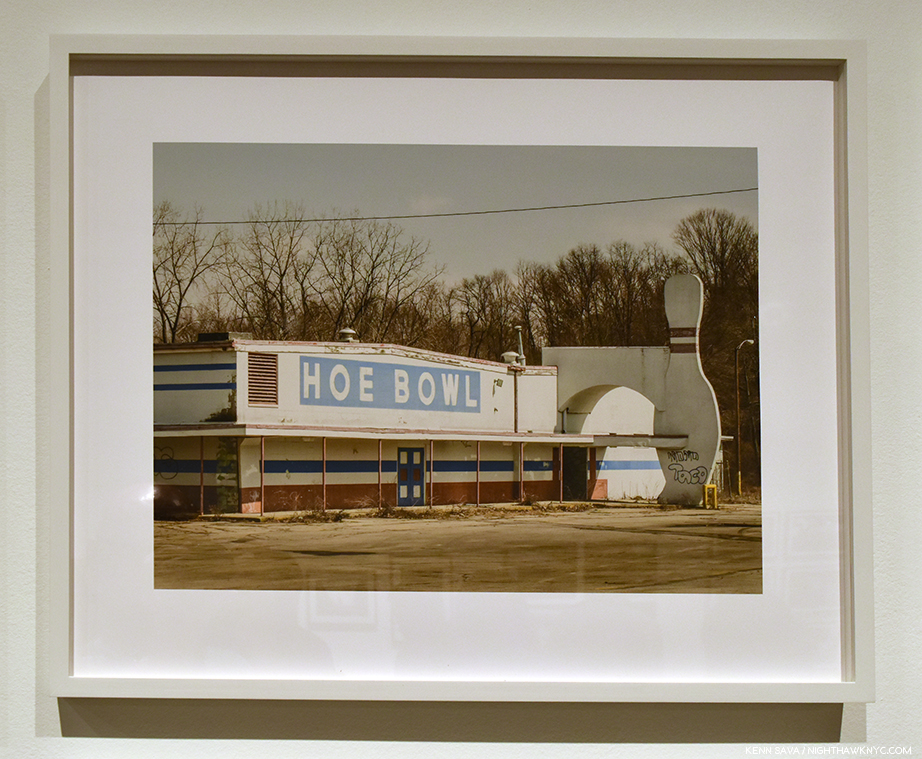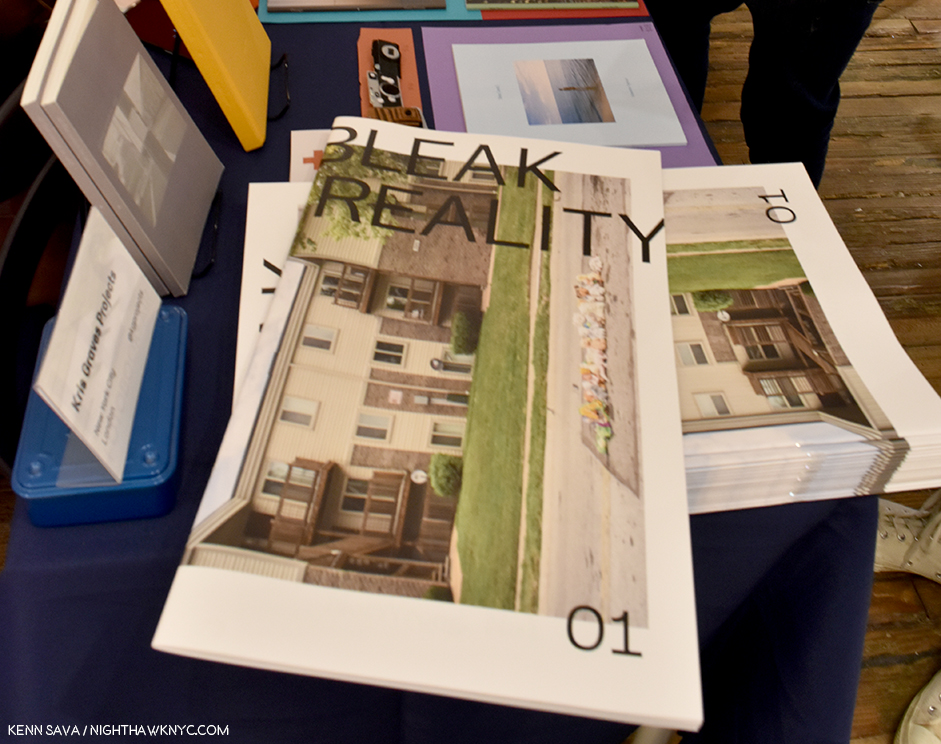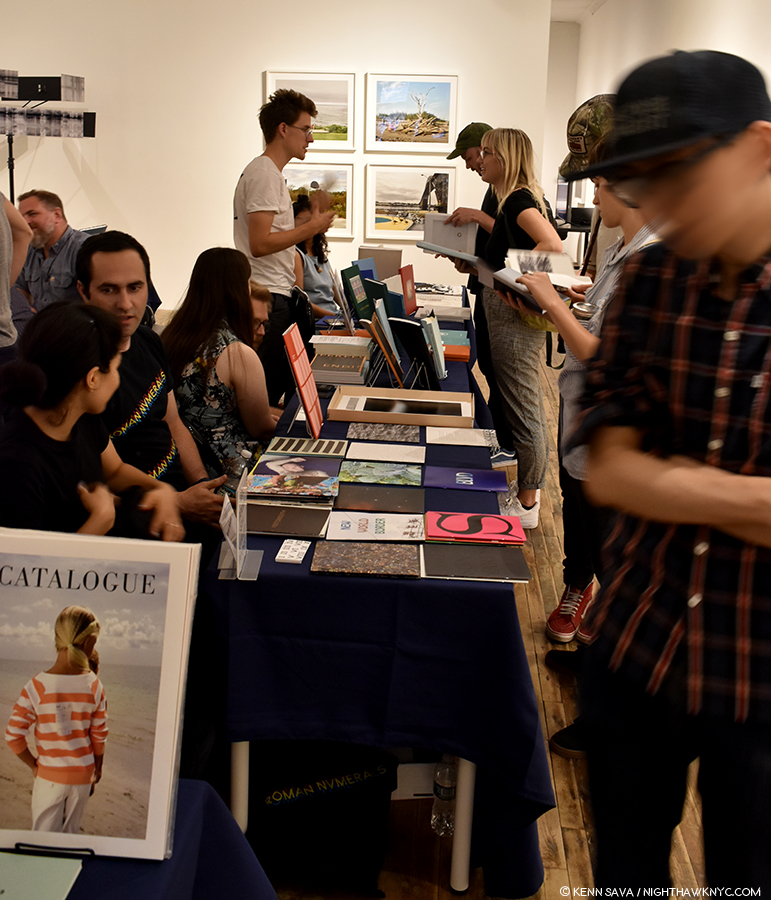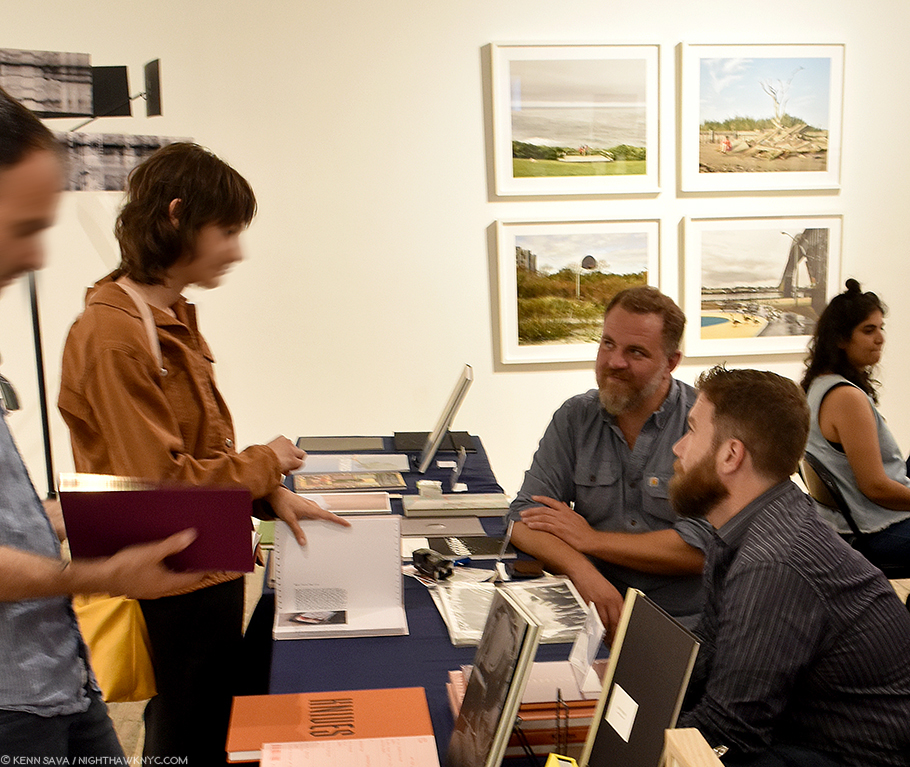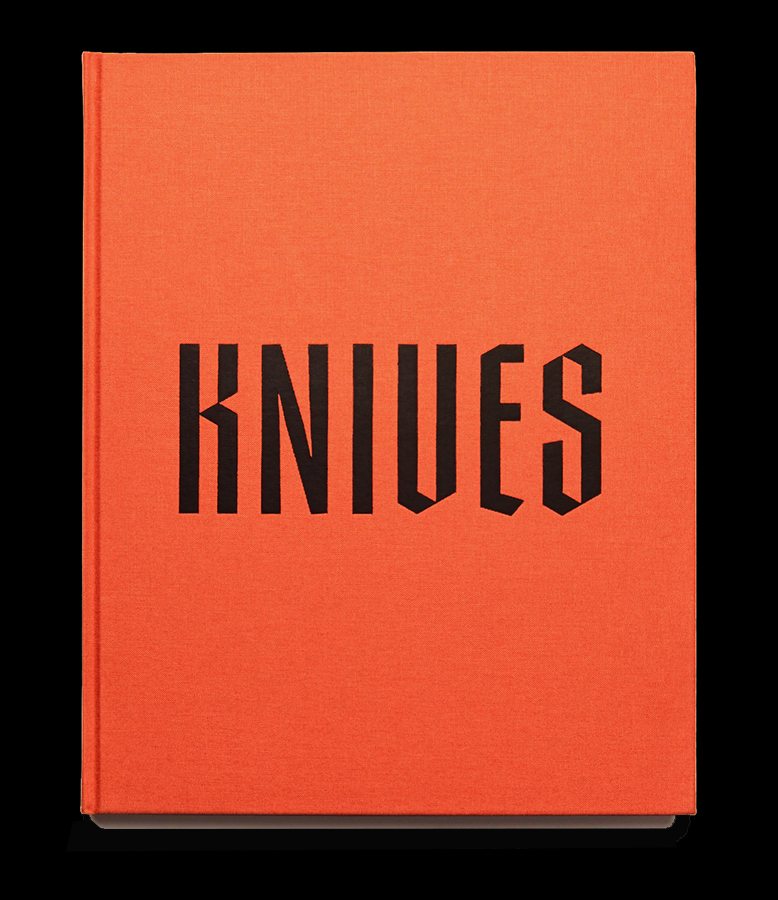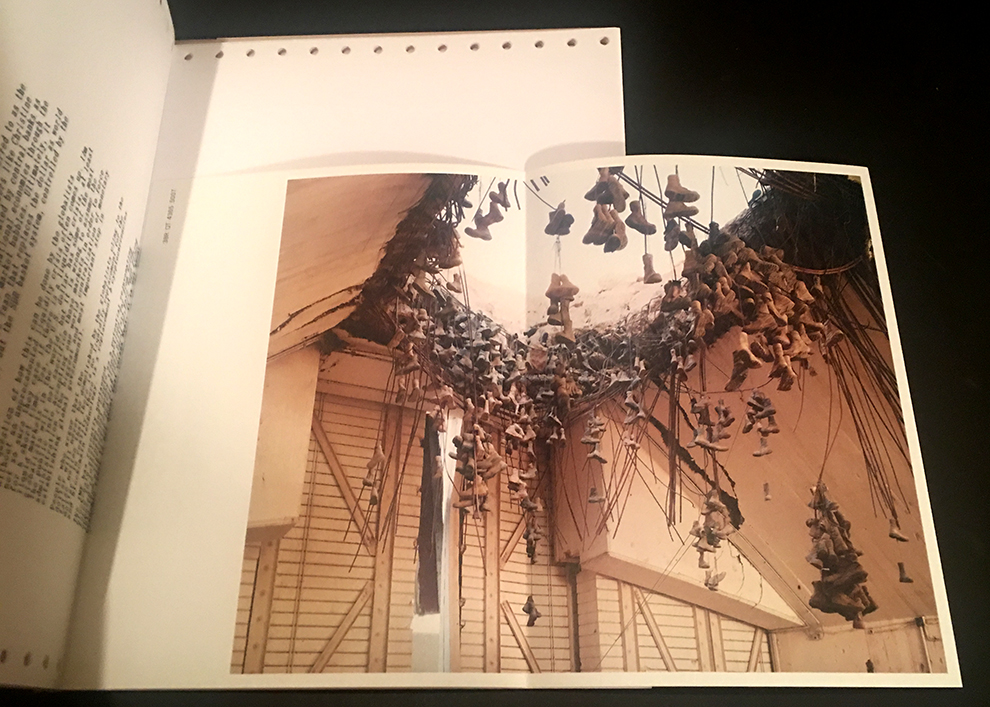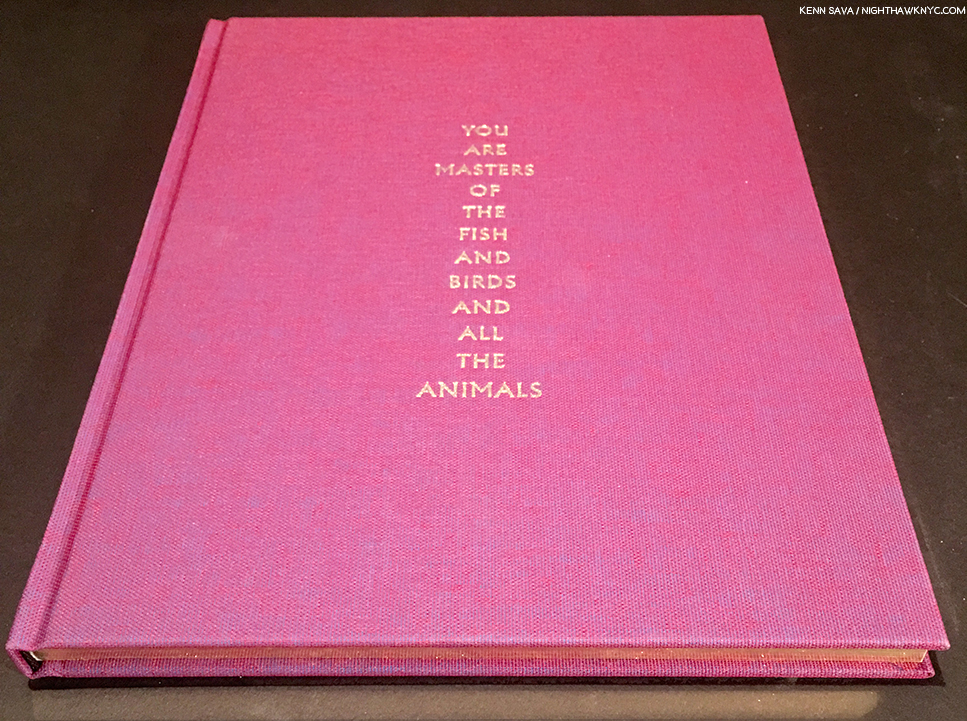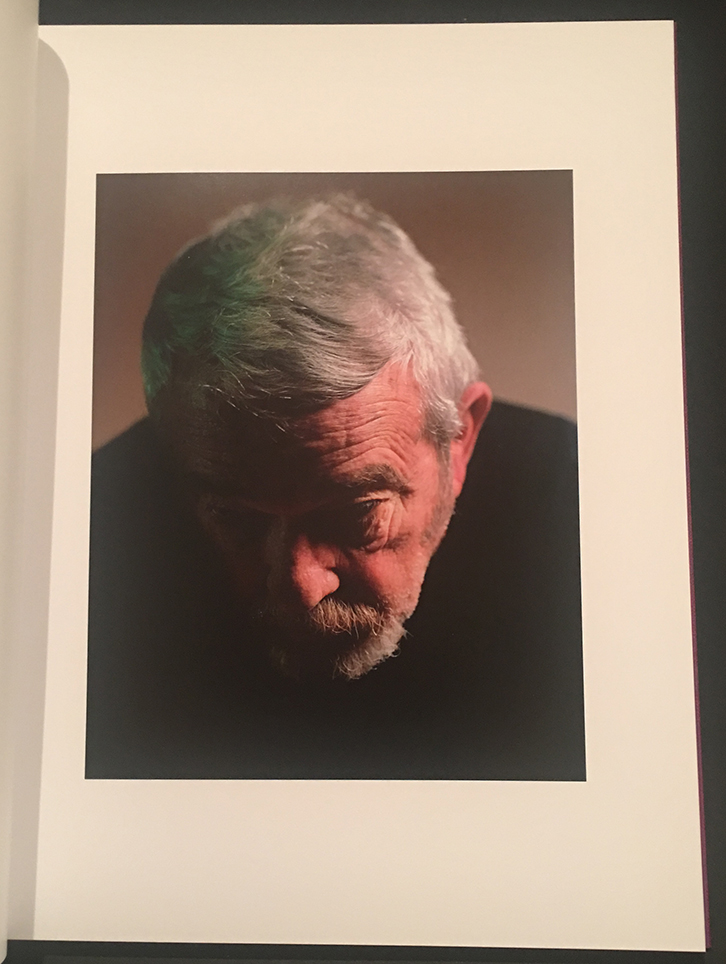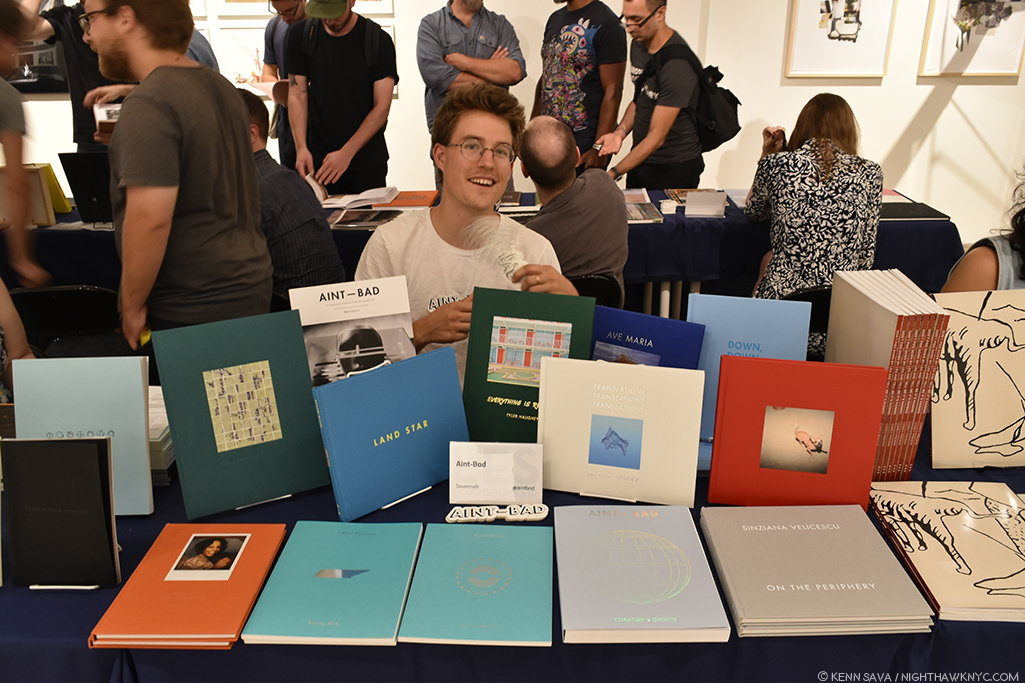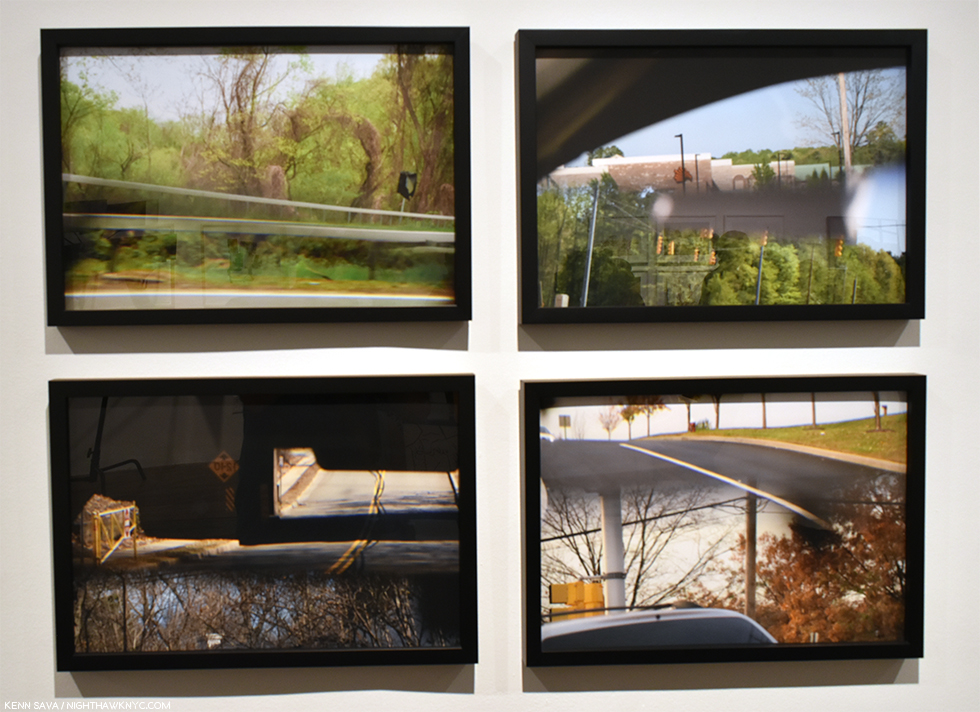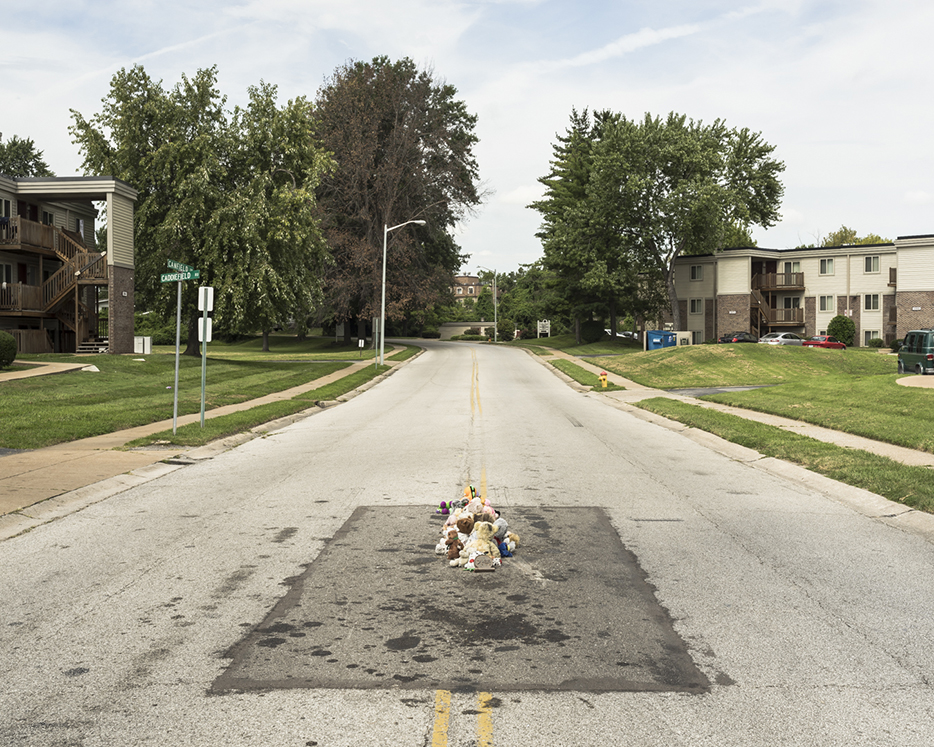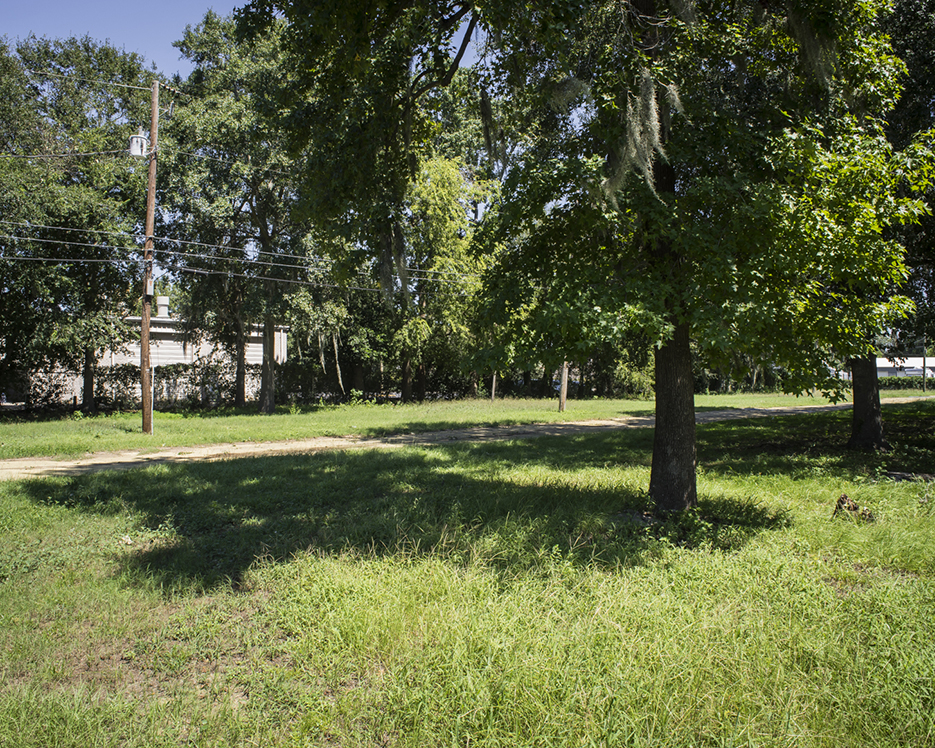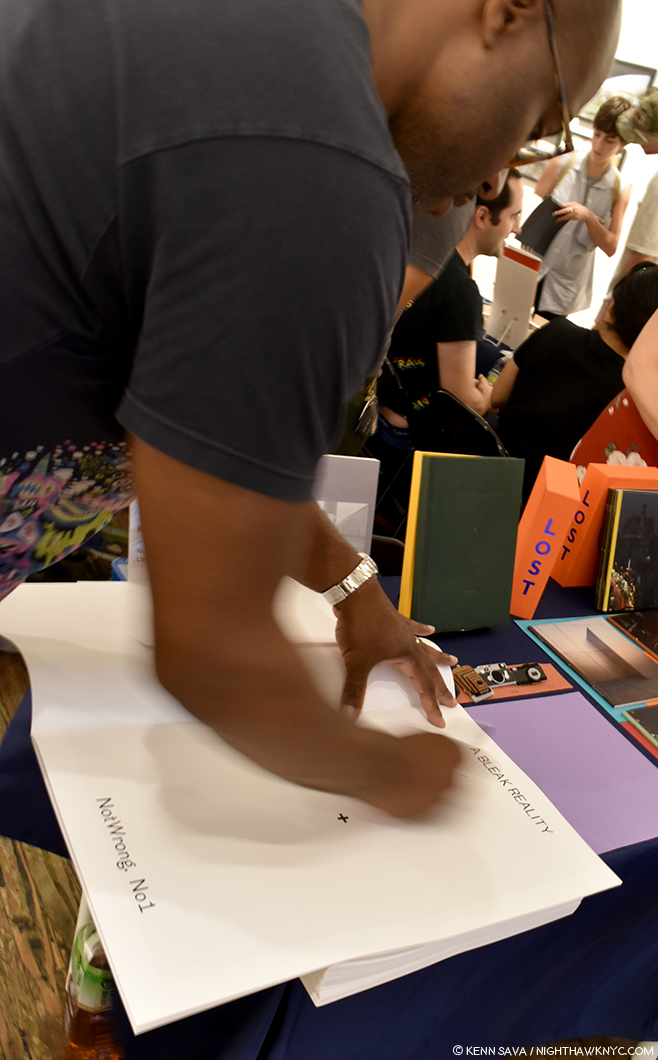This site is Free & Ad-Free! If you find this piece worthwhile, please donate to support it & independent Art writing. Thank you.
Written & Photographed by Kenn Sava
Show Seen- William Klein: YES @ ICP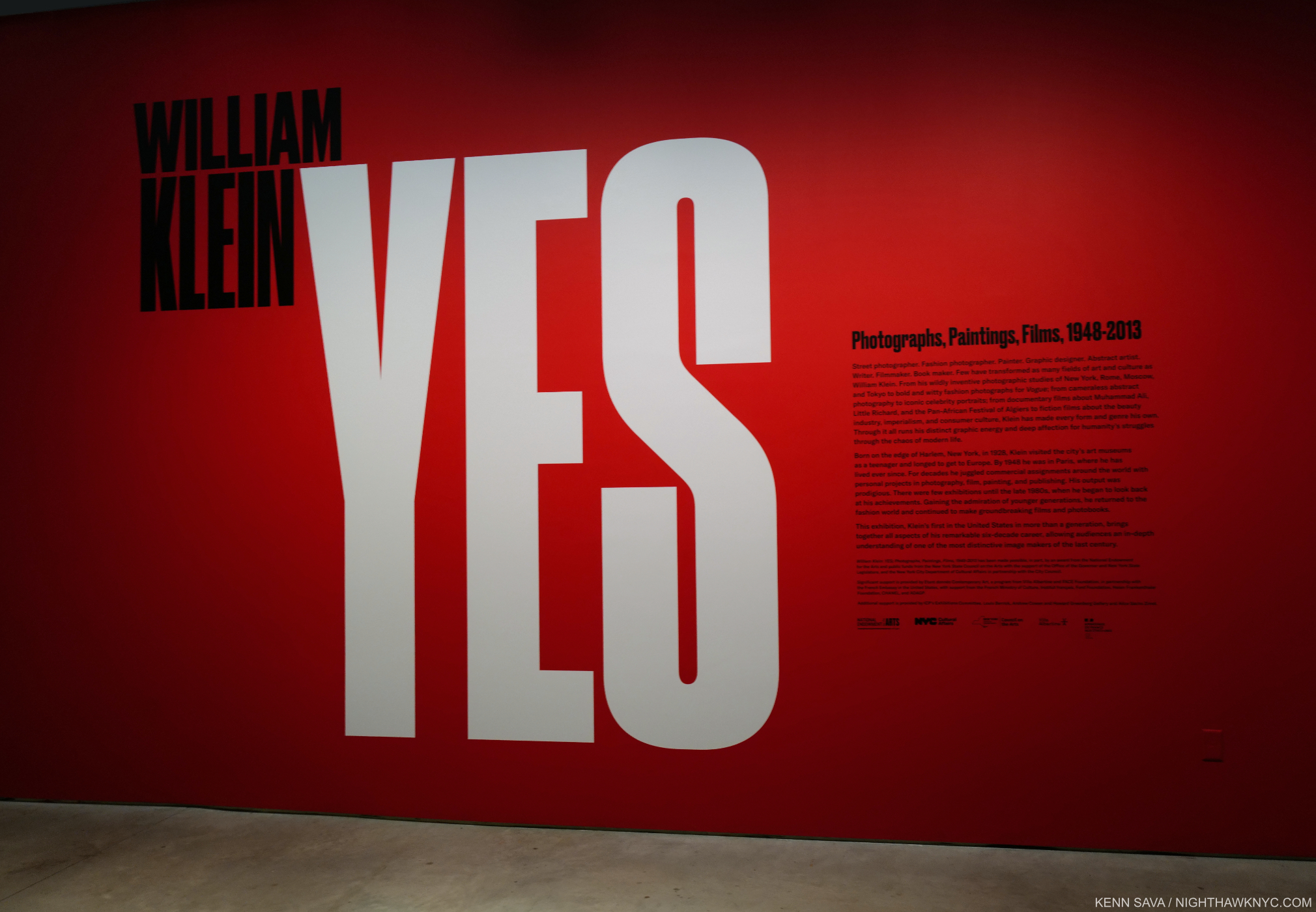
William Klein, who passed away at 94 on September 10th, was a big name for so long, creating legendary and hugely influential PhotoBooks, Films, Fashion Photography, Paintings, Photograms, and on and on, that it seemed to me he was somewhat taken for granted over what turned out to be the last decade of his life. Case in point- I can’t remember the last big William Klein show in NYC. So, the International Center of Photography’s career retrospective, William Klein: YES, June 3rd to September 15th, was not to be missed. Due to circumstances out of my control (i.e. my new life), I managed to see it on its closing night, day 5 after the Artist passed.
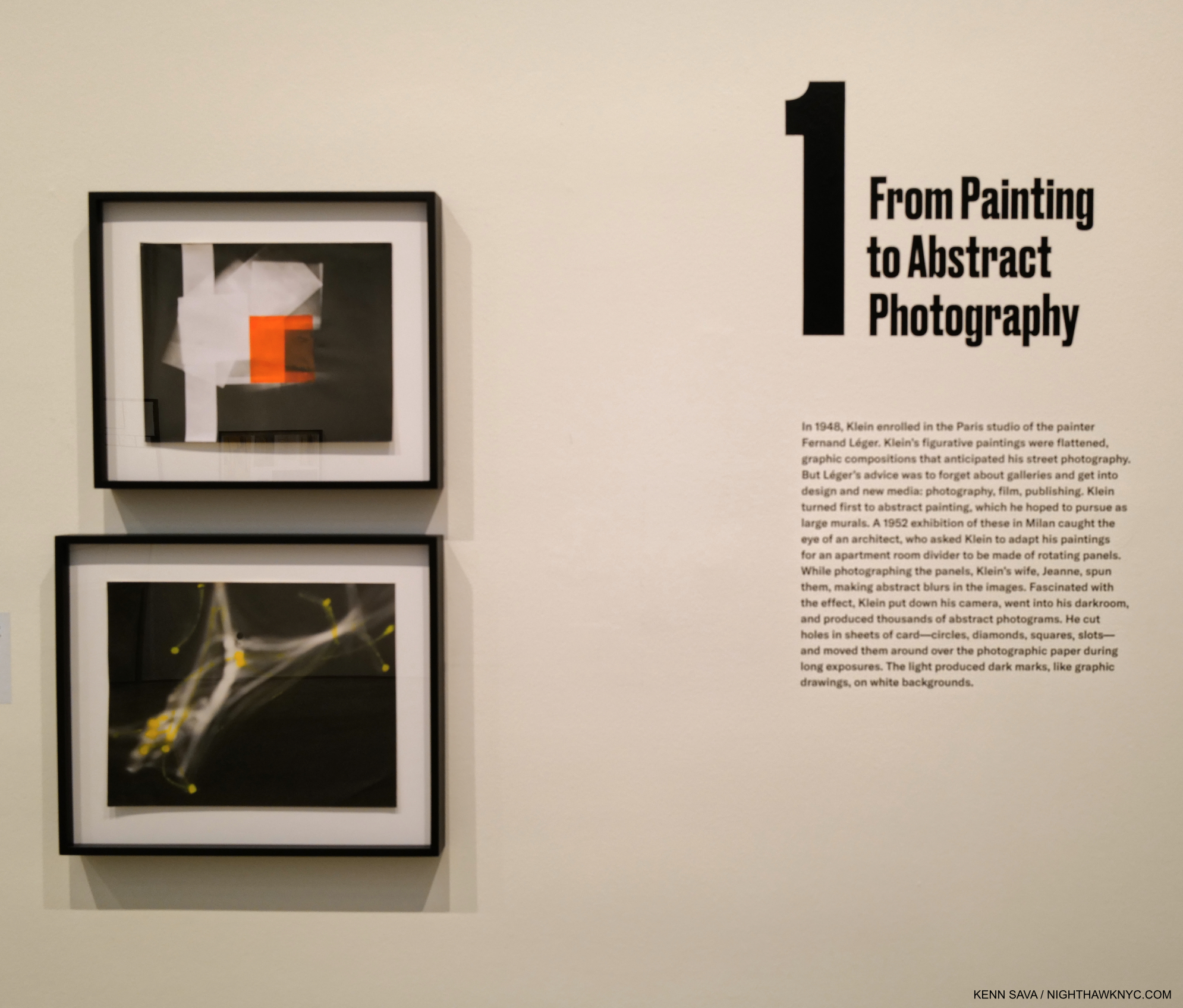
Untitled (Blurred White Squares on Black and Orange Gel Sheet), c. 1952, Gelatin silver print with transparent orange filter, top, and Untitled (White and Yellow Moving Lines), c. 1952, Gelatin silver print with yellow paint.
Paintings, Collage, Photograms, bodies of b&w Street Photographs in NYC, Paris, Rome, Moscow and Tokyo, Fashion Photography, Film, color Photography, Painted contact sheets filled both gallery floors of the International Center of Photography’s fairly new Essex Street building. The show felt like it was the work of 6 or 7 Artists. Perhaps that’s why they named the show William Klein: YES Photographs, Paintings, Films, 1948-2013- as a reminder that ALL of this sprang from one unique Artist.
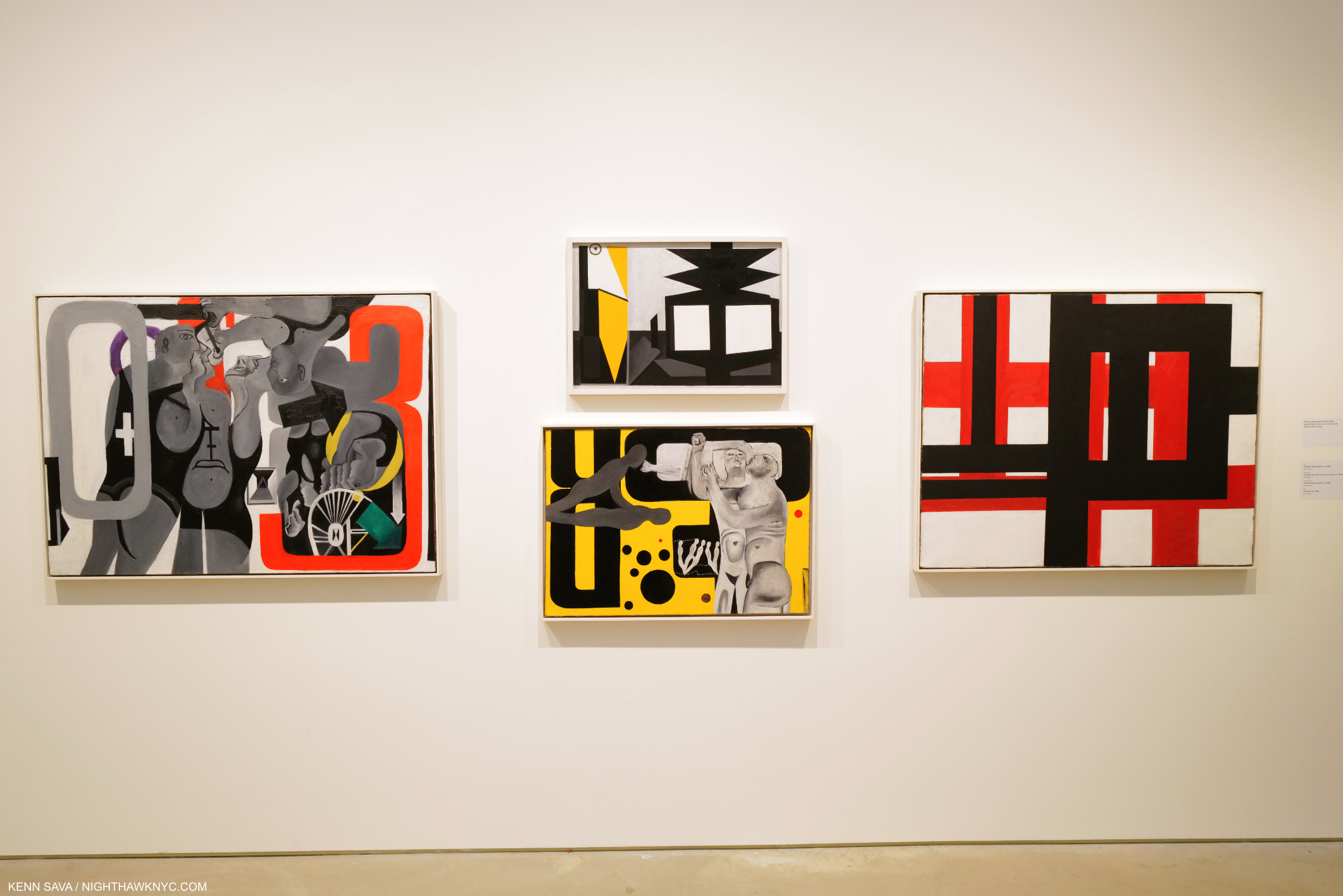
The earliest works on view. Untitled (Gymnasts), c. 1949, Untitled (Still life, lamp, and vase), c. 1949, Oil on wood- the others are all oil on canvas, Untitled (Gymnasts), c. 1949, and Untitled c. 1952, from left to right.
After studies with Fernand Léger, William Klein temporarily ignored his advice to get into Photography, Film and publishing, instead embarking on a career as an Abstract Painter during the height of the first wave of Abstract Expressionists. He managed to carve out a style that had elements of Mondrian but also showed an affinity for multi-layered compositions that would also be seen in his later Photography. It’s interesting that the two Gymnast Paintings, above, feature monochrome figures, also presaging his b&w Street Photography.
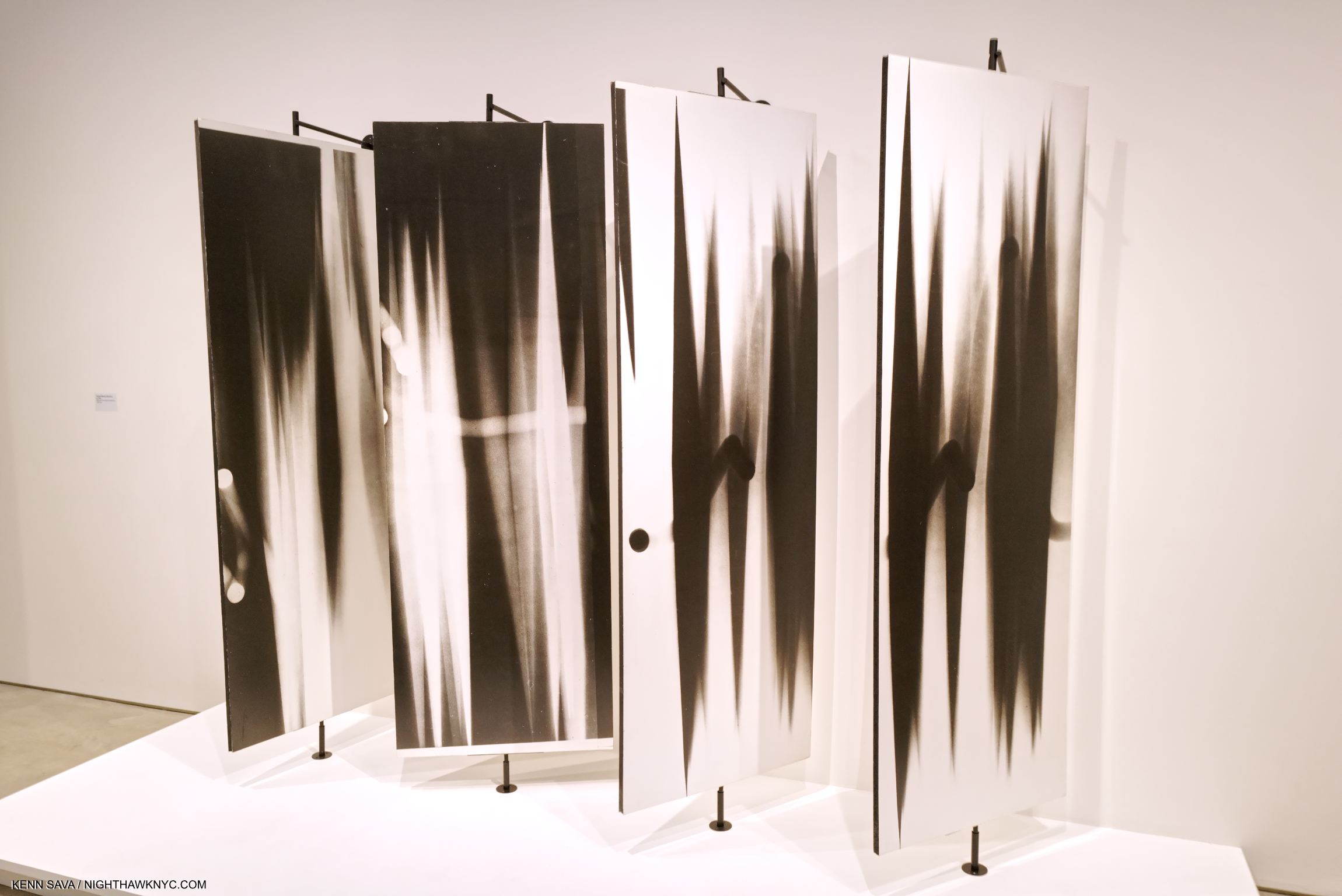
In 1952, an architect saw William Klein’s Paintings and asked him to adapt them to a room divider made of rotating panels. While Photographing the panels, Klein’s wife spun them. Fascinated with the effect, hep down his camera, went into the darkroom and began experimenting with Photograms, like Man Ray before him, holding cards with cut out shapes over photo paper during long exposures.
While Photographing a piece he’d been asked to paint, William Klein was inspired to put his camera down and experiment in the darkroom with light on photo paper using long exposures. Man Ray had been among the first to explore Photograms, and Robert Rauschenberg would a few years later, but neither’s look like Mr. Klein’s. They found admirers among graphic designers, who featured them on magazine covers and record covers.
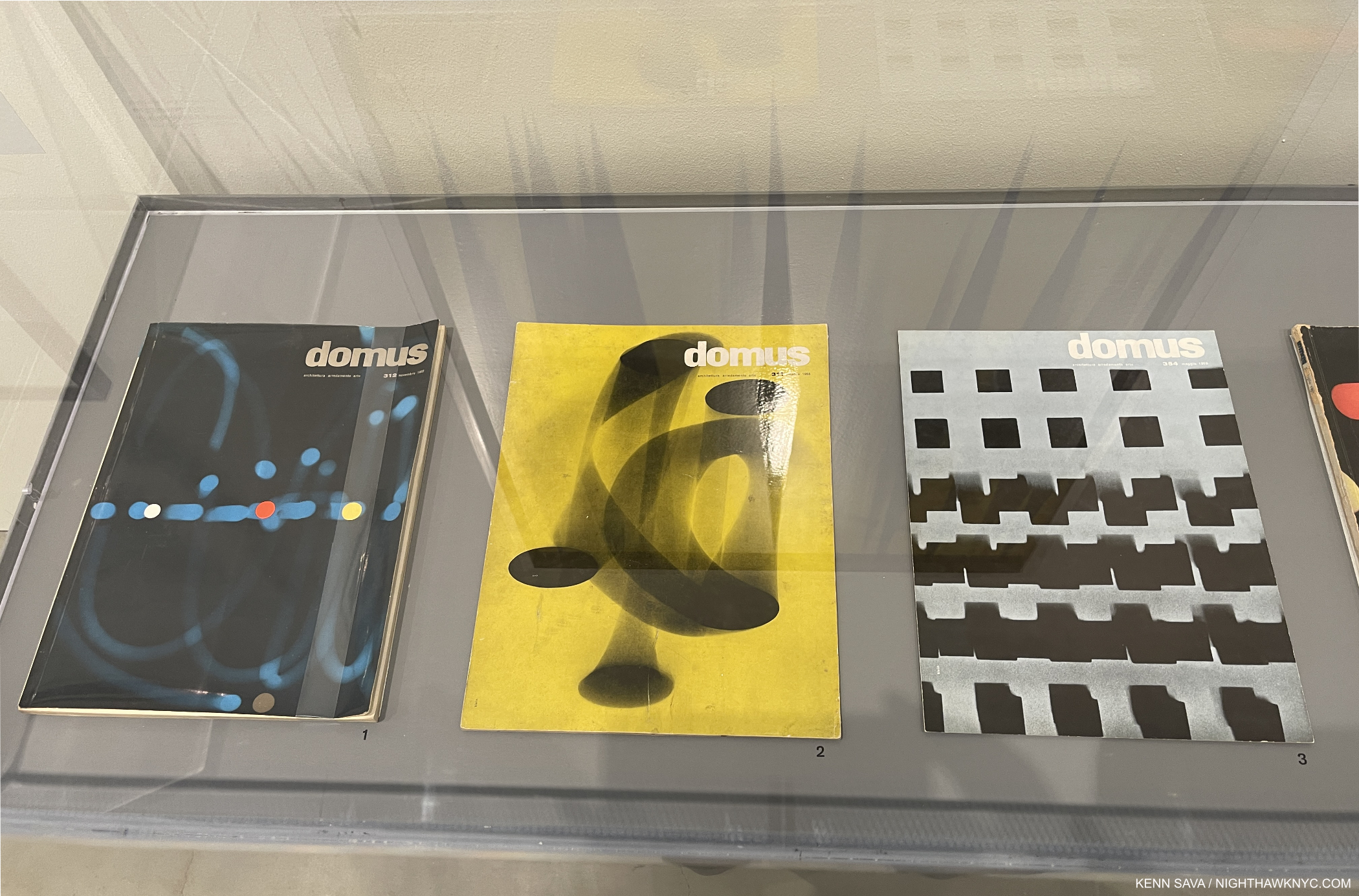
William Klein’s Photograms on the covers of Domus Magazine from 1955, 1959, and 1952, left to right.
His Painting turned out to open a door to his future when Alexander Lieberman, art director of Vogue saw a show of them in Paris and, impressed with his strong vision, saw a Fashion Photographer in him. William Klein, who was born in NYC before moving to Paris in 1946 to become a Painter came back to the City to work for Vogue. Along the way William Klein became Klein, and he broke as many rules shooting fashion as he did in his Art. He took models out of the studio and on to the streets and collaborated with them on shoots. Possibly as a result of this, Mr. Lieberman also funded William Klein’s desire to shoot the streets of NYC. The body of work that became Life is Good came into being, as did the Photographer being christened, “the angry young man of photography1.”
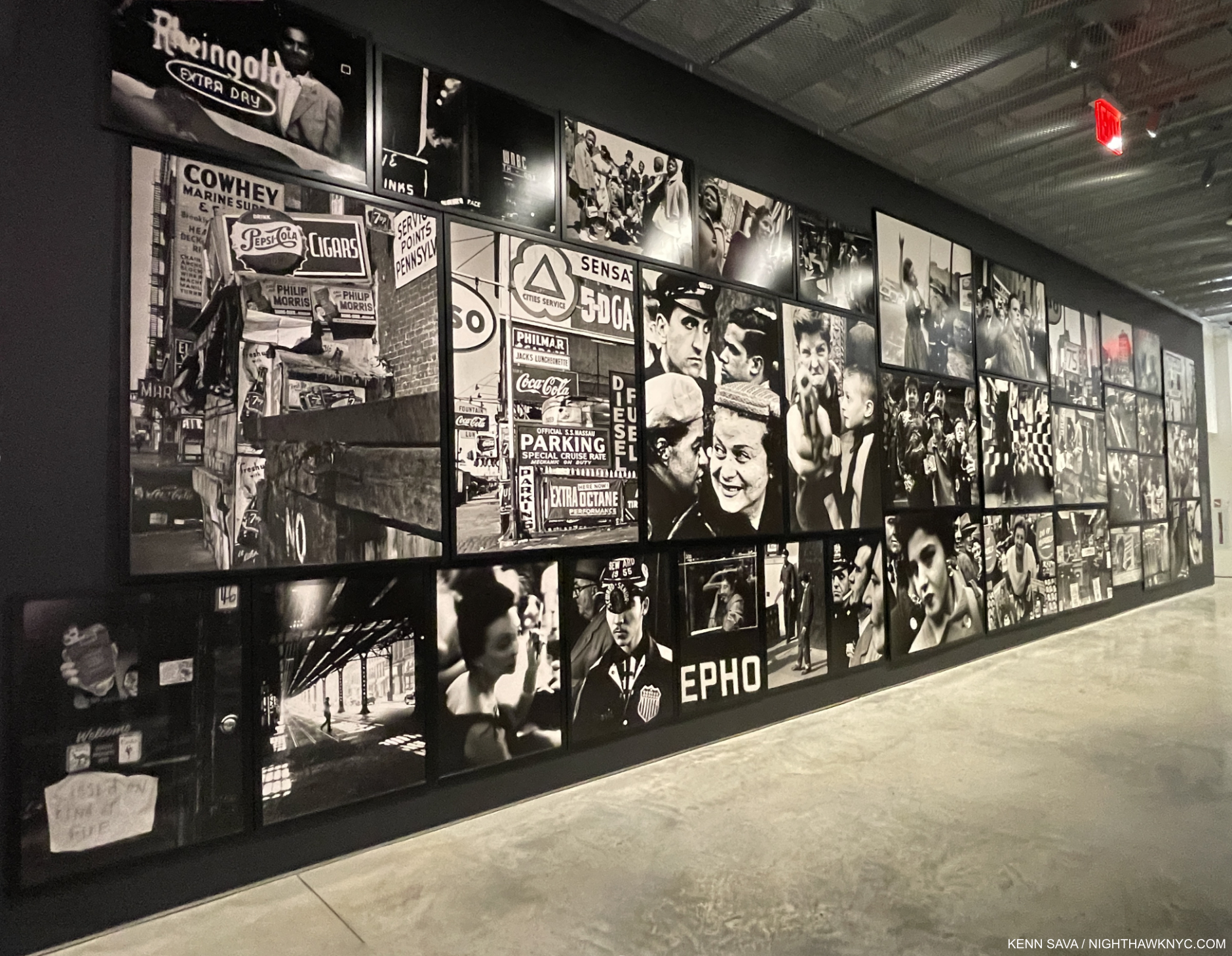
A wall of prints from the classic Life is Good & Good for You in New York, 1956, taken between 1954 and 1956. Almost all of the work in the show was from the William Klein Studio, and the prints were spectacular.
Filling two floors, almost all of the work on view was provided by the Artist, himself, most likely marking the final time he would be directly involved in a show of his work. The quality of the prints on view, many “printed later,” were of the highest order. The black & white prints were unforgettable- black could never be blacker, and many of the color Fashion Photos were printed at a large, even huge size, which made them even more stunning.
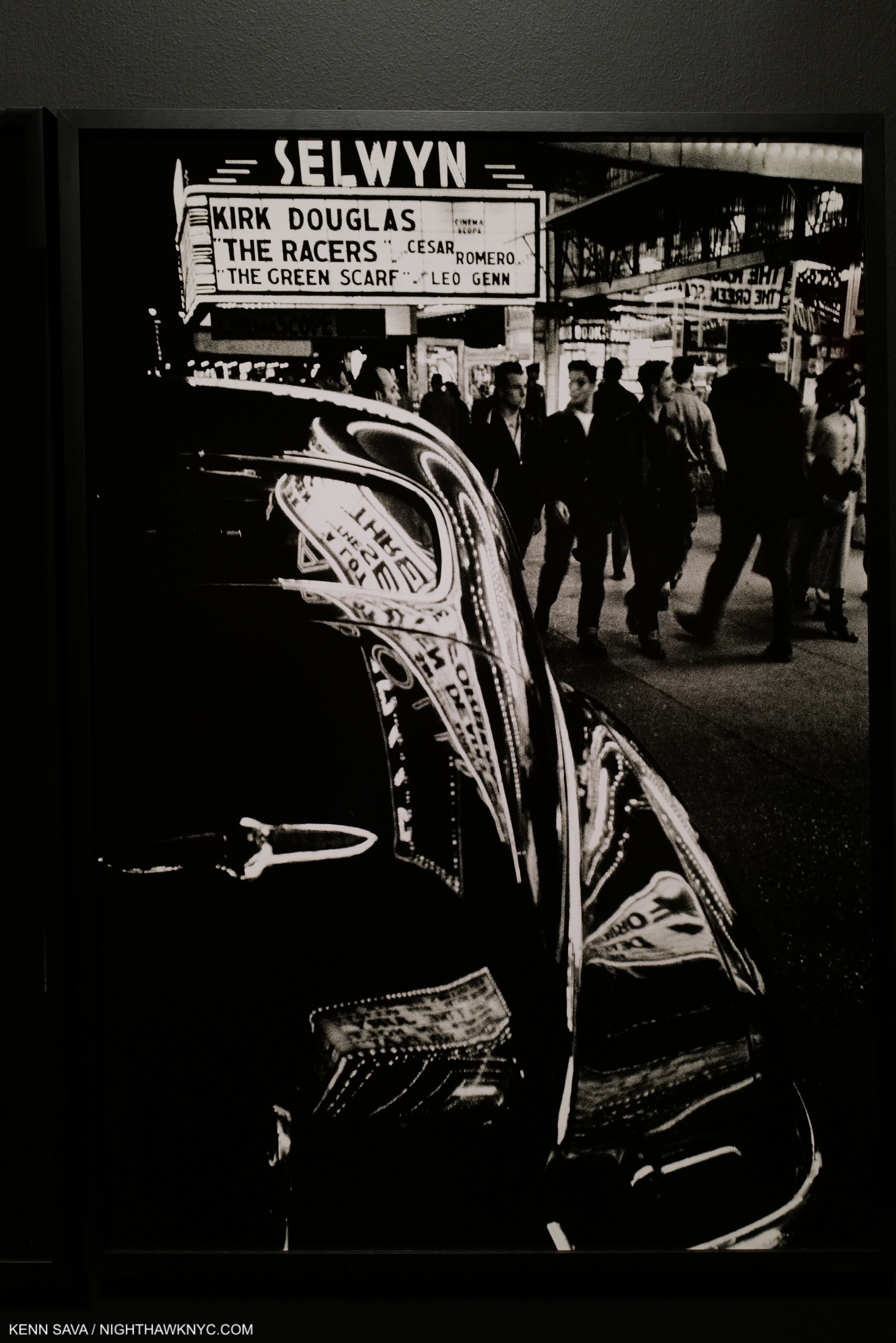
A timeless image of NYC, Selwyn, 42nd Street, New York, 1955 (printed 2016), Gelatin silver print. The play of light and shade in this incredible print is a subject all its own. I’m not sure black can be blacker than this.
The late Robert Frank is, possibly, the most influential Photographer of the past 60 years, but a very strong case can be made that William Klein is in that discussion. His Life is Good & Good for You in New York: Trance Witness Reveals, was published in 1956, 2 years BEFORE Mr. Frank’s seminal The Americans. Seen alongside the Frank book, Life is Good is a fascinating counterpoint, showing a different America than that seen in The Americans. Mr. Frank got a lot of grief for showing America as he saw it. Mr. Klein’s Life is Good shows gritty NYC as the melting pot it has long been where anything could happen at any moment. But it is his style and technique that ruffled many feathers. Rough, raw, out of focus, as dark as night, off kilter, lacking coherent compositions, grainy…were among the criticisms of those who were perhaps thinking that Henri Cartier-Bresson had discovered the only “true way” to take Street Photographs. But, there was method to his madness, and his methods resounded with many viewers right up to today.
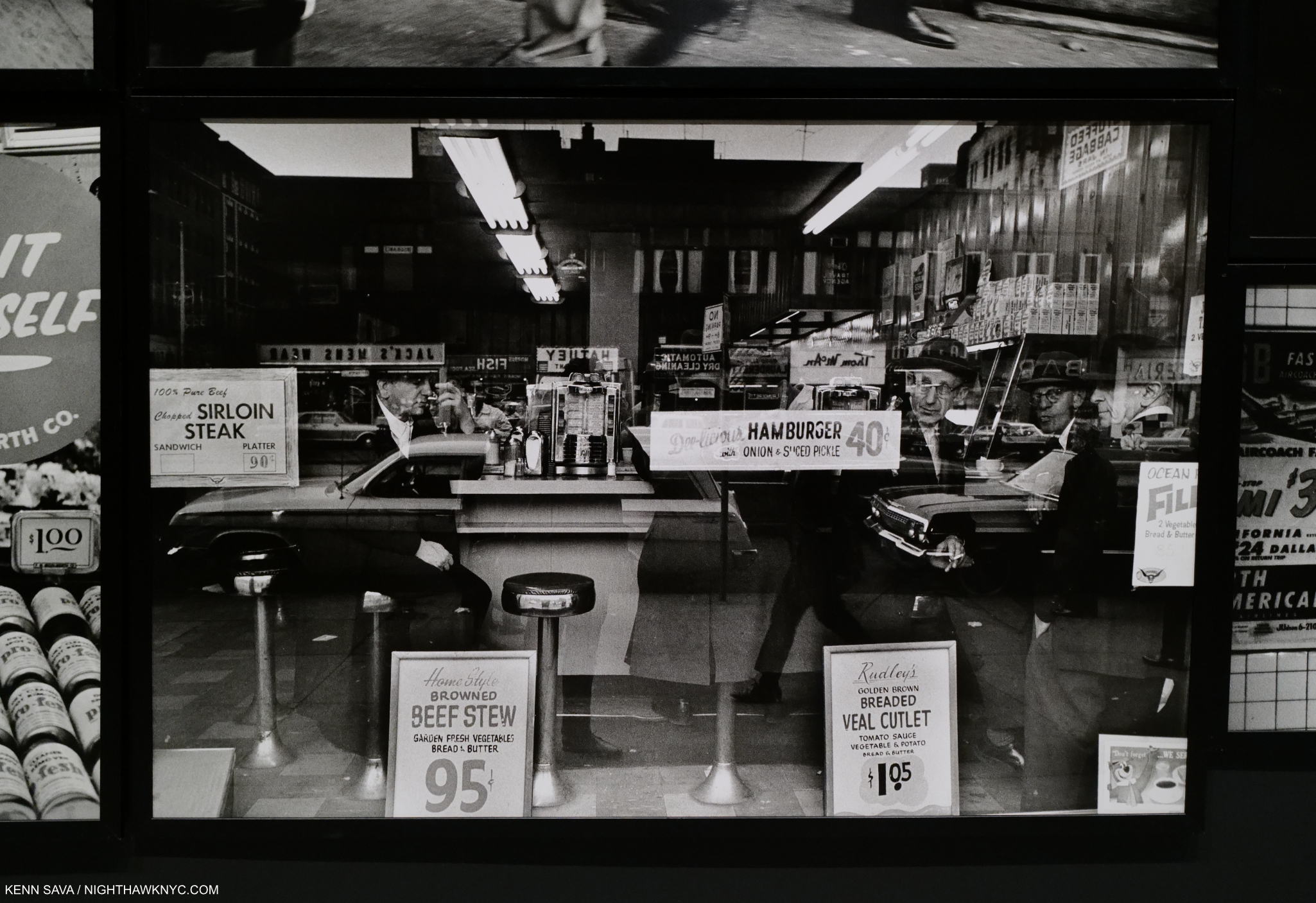
The avant-garde William Klein. Another multi-layered composition. Atget, then Walker Evans took Photos of similar scenes before William Klein, and Richard Estes has spent a good deal of his career Painting them, as I showed a few months back.
Looking through Life is Good is always surprising, even when you’ve seen it before. Quite a few people smile, indicating life was, indeed, good for them, in spite of the rough and tumble settings. A number of others (upwards of 50% of his subjects?) look at the camera and many of those seem to be in cahoots with the Photographer. Many images work in multiple layers from foreground to back. Many show fleeting moments that in Mr. Klein’s hands become intriguing, if not “decisive.” There is a section of urban landscapes in the middle that show a bit of the influence of Walker Evans, but mostly serve to give the book a decidedly avant-garde feel that it retains today. His Photographs down through the years from the b&w shots of NYC of the mid-1950s up to his color work in Brooklyn in 2013 show the universality of modern human existence. Whereas Mr. Frank observes masterfully, Klein often interacts.
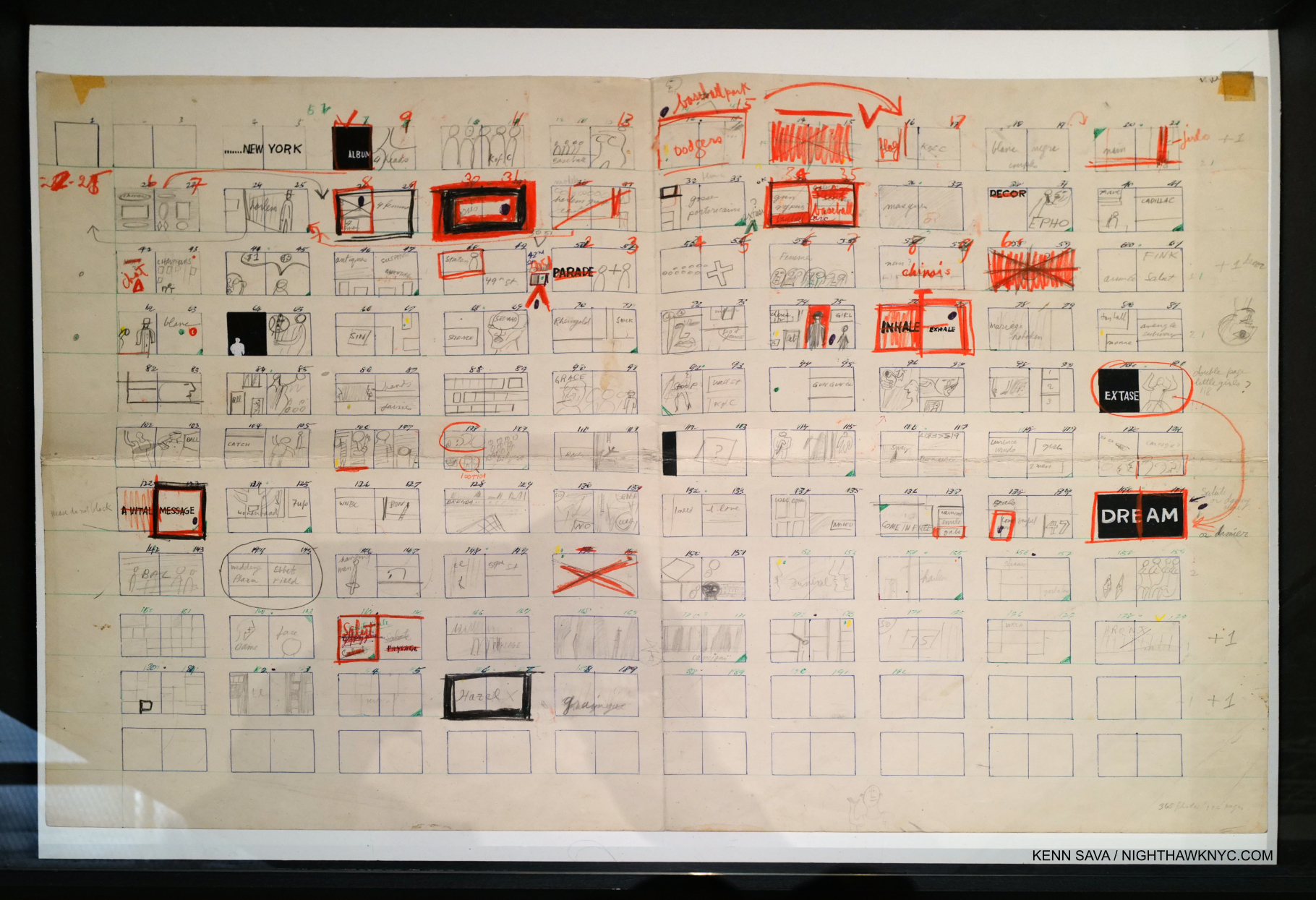
Flat Plan for Life is Good & Good for You in New York, 1955, Ink, pencil and colored pencil on paper.
Whereas The Americans remains hugely influential here in the US, and perhaps not as much in the rest of the world, Life is Good & Good for You in New York: Trance Witness Reveals, has been hugely influential around the world. It singlehandedly rewrote the possibilities of Street Photography. Perhaps its influence was felt nowhere more than it was in Japan. Daido Moriyama, a great Street Photographer in his own right, has created an important career exploring some of the ideas & techniques William Klein used in Life is Good, which served as an influence and a catalyst2, particularly his high contrast, motion blur and unusual angles. So have any number of other important Japanese Photographers from the late 1950s, on, not to mention numerous others everywhere else. Nakahara Takuma, with Mr. Moriyama one of the Photographers who produced the legendary Provoke Magazine beginning in 1968, wrote a lengthy article on William Klein in 1967. In it, he said about the reaction to Life is Good, “…its impact was unprecedented. The reaction could even be called panic.” And, “…(a number of) photographers…thought of Klein’s photography as an ‘impudent ‘ amateur game, as mere technical experiment. Immediately after New York was published, critical opinion was polarized; rather than photography, it was advocates for the other related genres, such as painting and film, who supported it most positively3.” A case could be made that a good deal of Japanese Photography since its publication bears its influence. “It is not so surprising, therefore, that his photography, as something so new, became extremely popular, especially among the young,” Nakahara Takuma said in the same piece. Pretty remarkable for the first PhotoBook by an untrained Photographer.
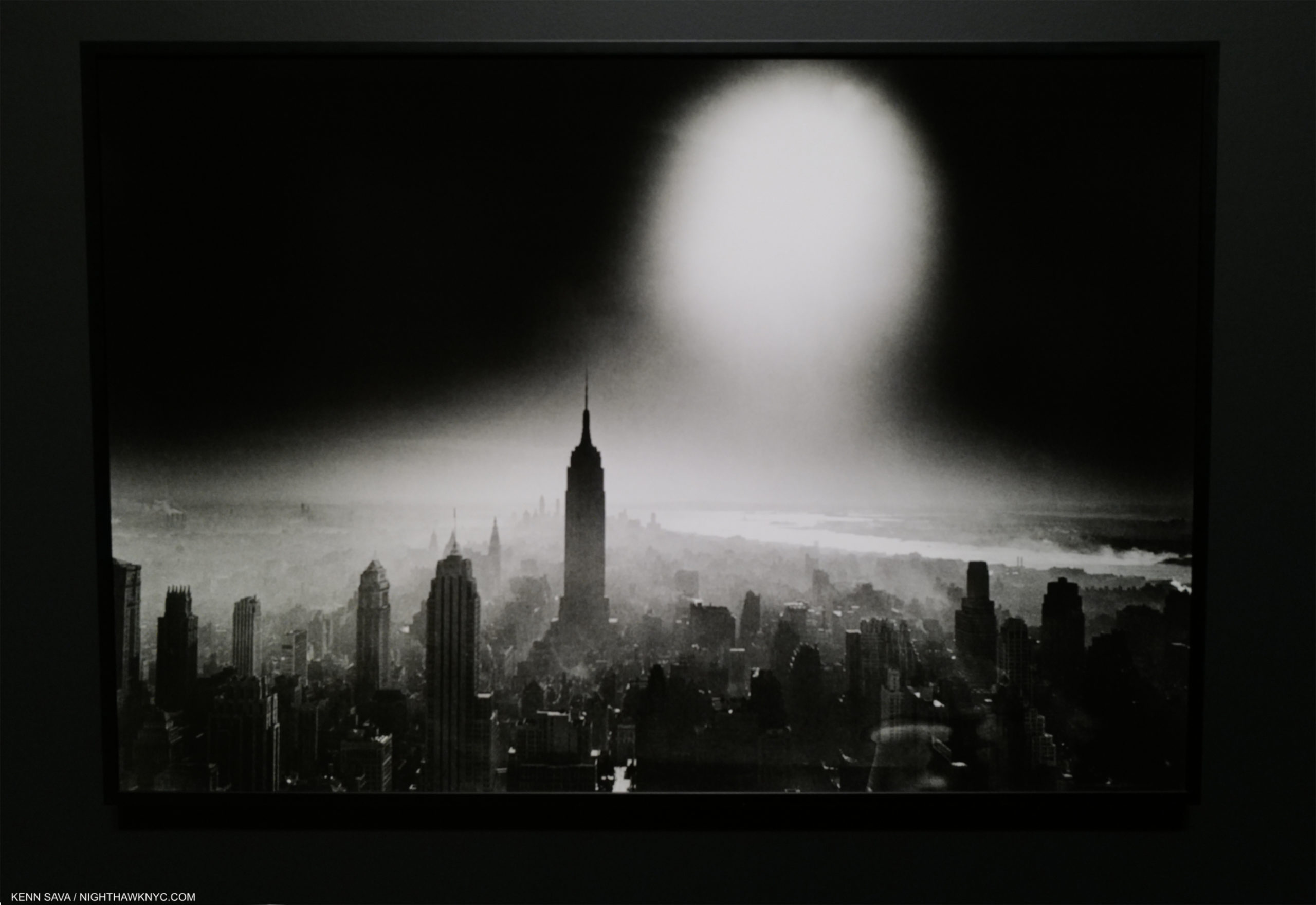
Atomic Bomb Sky, New York, 1955 (printed 2012), Gelatin silver print. Of the millions of images I’ve seen of NYC in my life, I’ve never seen one like this.
It should also be noted that Life is Good & Good for You in New York: Trance Witness Reveals has never been published in the USA4! Early on, every publisher rejected it. The first edition was published by Editions du Seuil in Paris in 1956. William Klein followed Life is Good with books on Paris (2002), Rome (1959), Moscow (1964) & Tokyo (1964. It was reported that Klein took 50,000 Photos for it5.), each of which got a section in the show, each of which remains out of print and highly sought after.
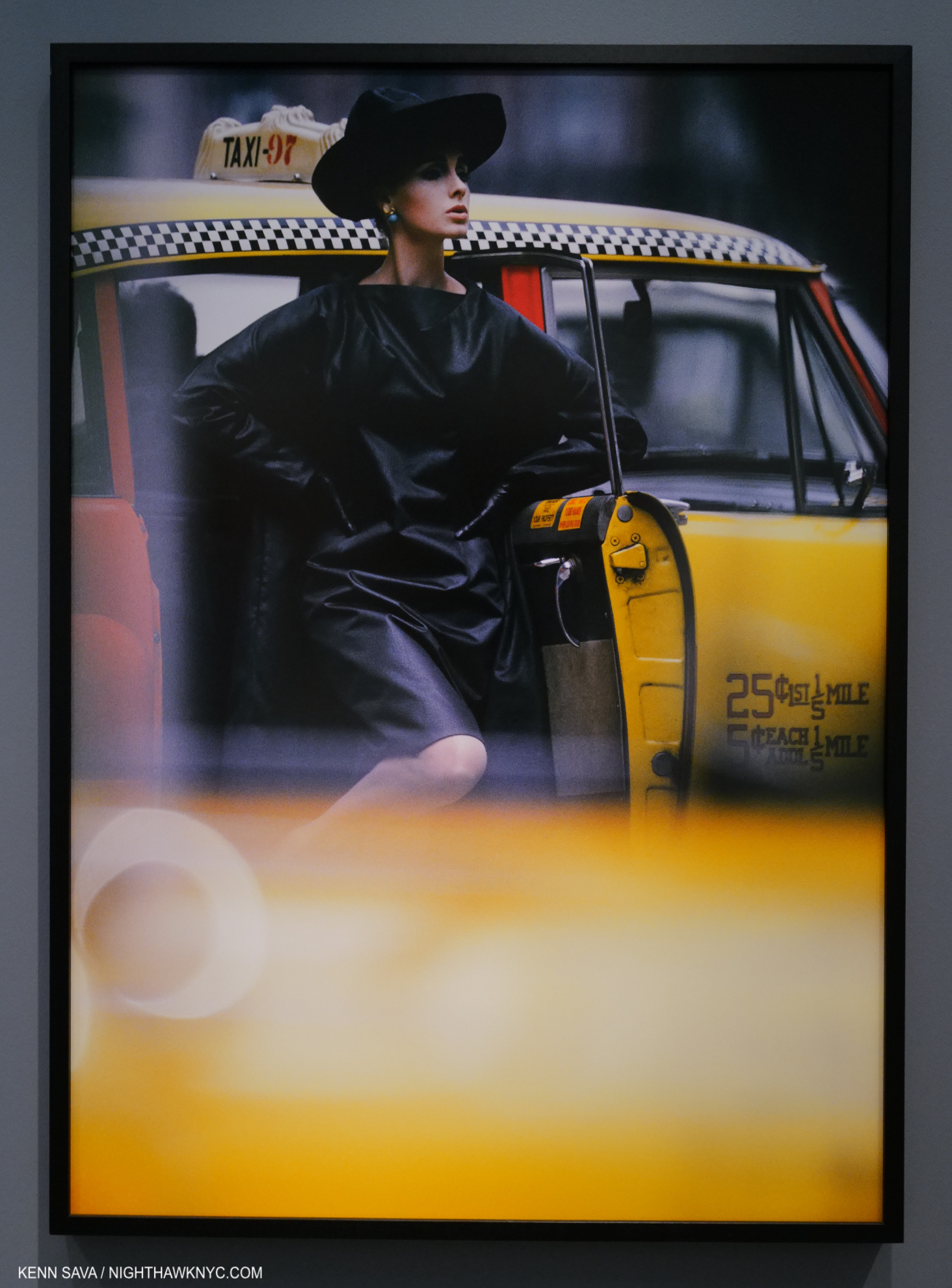
Antonia and Yellow Taxi, New York, 1962 (printed 2016), from Vogue, Pigment print. When I saw this shot at AIPAD in 2017, I realized I needed to do a deep dive into William Klein. I’m still exploring his huge oeuvre. A bit reminicient of Saul Leiter, perhaps?
Meanwhile, Klein had become a top Fashion Photographer.
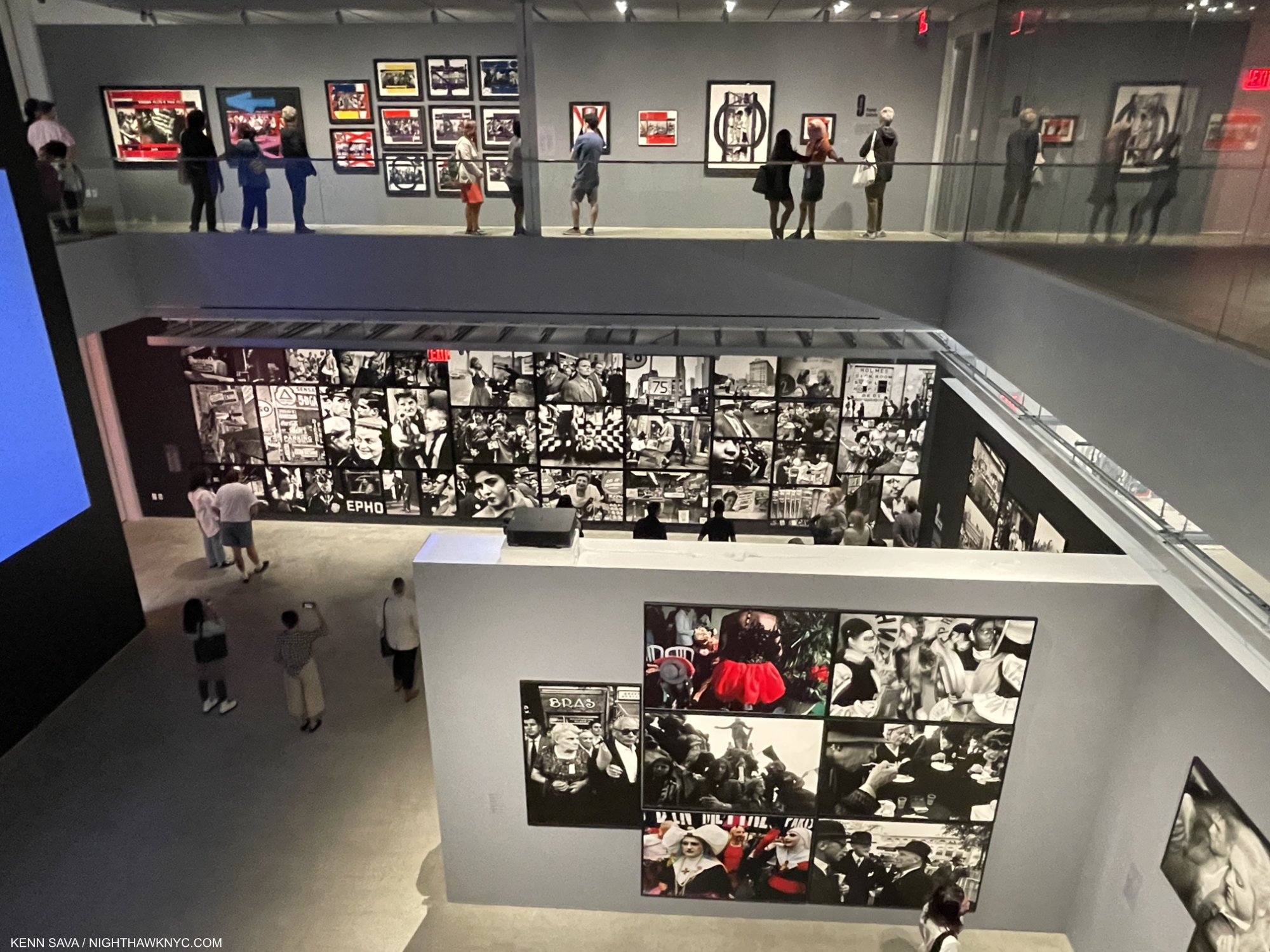
Installation view. Paris, 1964-83, in the lower foreground and to the right, Life is Good/NYC behind, Painted Contact Sheets above, and a sliver of the large video projection screen, left. I remain no fan of “holes” in museums, including this one which spans the width of the entire floor, except for 2 narrow walkways on the sides. For me they are just expensive wasted exhibition space. I’m not sure they add anything to the show-going experience. In William Klein’s case, quite a bit more work could have been shown.
The second floor was largely devoted to Mr. Klein’s Film work, which is equally revered and important.
I will leave that for others who have studied it closer than I have to cover. One thing about them that stands out is that Klein repeatedly focused on important Black figures of the time- Little Richard, Muhammad Ali and Eldridge Cleaver among them.
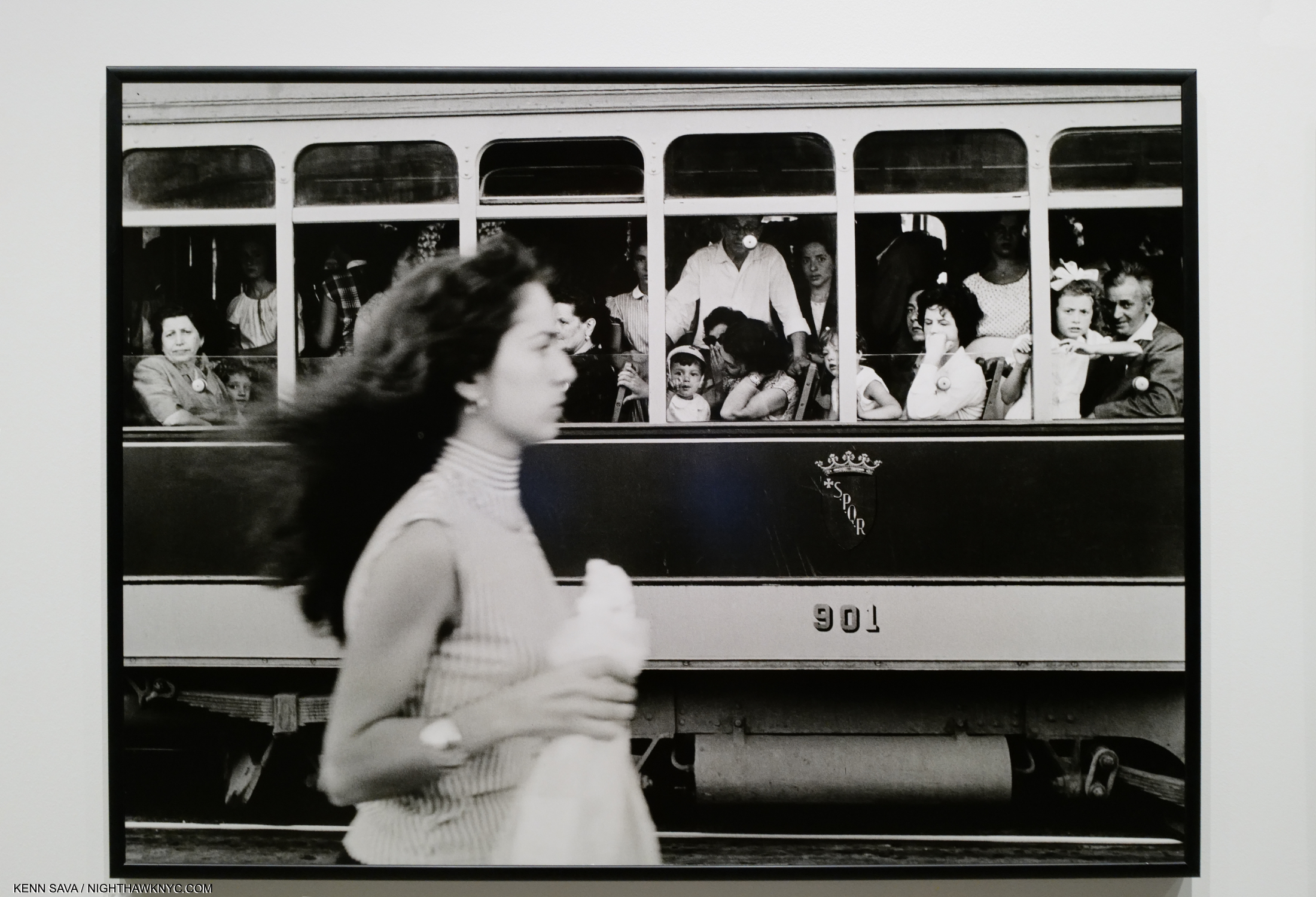
Tramway, Capellona, Rome, 1956, (printed 2013), Gelatin silver print. It’s just me, but my mind juxtaposes this with Robert Frank’s Trolley-New Orleans, 1955, when I see this work.
In the end, William Klein proves impossible to pin down. Each time I look through Life is Good, I pick up on a different thread and see things I didn’t notice previously. That’s true of much of his work.
Breaking the rules was easier for him because he didn’t know all of them. William Klein shows that, even without training, an Artist’s creativity and vision can be enough to create important, lasting and influential Art.
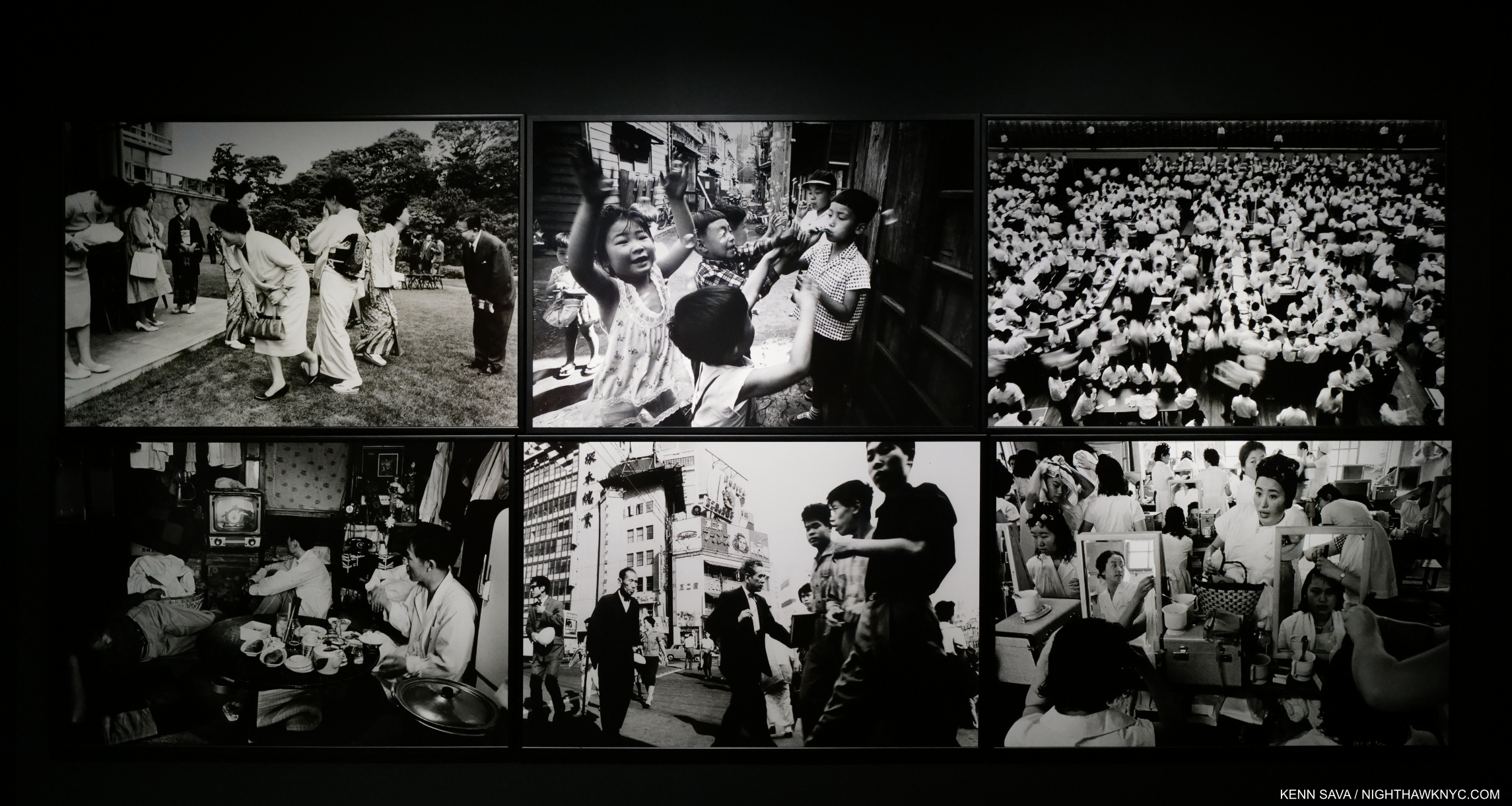
6 Gelatin silver prints from Tokyo, 1961, including Tokyo Stock Market and Yoyogi Hairdressing School, Tokyo, upper far right and lower far right, printed later.
WK:YES will serve as a testament to his accomplishment over his sixty-five year career and a benchmark for all future William Klein shows. Most likely its soon-to-be-published 400 page catalog will serve as a beacon to influence still more people and aspiring Artists, adding to the incalculable number Klein already has.
R.I.P.
*-Soundtrack for this piece is “All Blues” by the Miles Davis Sextet from Miles’ immortal Kind of Blue, 1959–
NighthawkNYC.com has been entirely self-funded & ad-free for over 7 years, during which over 275 full length pieces have been published!
I can no longer fund it myself. More on why here.
If you’ve found it worthwhile, PLEASE donate to keep it online & ad-free below.
Thank you!
Written & photographed by Kenn Sava for nighthawknyc.com unless otherwise credited.
To send comments, thoughts, feedback or propositions click here.
Click the white box on the upper right for the archives or to search them.
Subscribe to be notified of new Posts below. Your information will be used for no other purpose.
- Gernsheim, A Concise History of Photography, 1986, p.131 ↩
- https://time.com/3792413/william-klein-daido-moriyama-double-feature/ ↩
- Nakahara Takuma, “William Klein,” 1967, reprinted in Provoke, Art Institute of Chicago, 2016, p.362 ↩
- A facsimile version with every page Photographically reproduced, some reduced, in a smaller size book was published by Errata Editions, NYC in 2010. When I bought a signed copy of it, the seller reported that Mr. Klein looked at it curiously before signing it having not seen it previously. An indication that it was not an “official” edition of Life is Good. ↩
- Nakahara Takuma, “William Klein,” 1967, reprinted in Provoke, Art Institute of Chicago, 2016. ↩

